

Vietnam’s 8 Best Natural Wonders

What comes to mind when you think of Vietnam ? Tropical jungles, thick with mist and mystery? Rice paddies, peaceful and picturesque as far as the eye can see? If those are your thoughts, you’re not alone — but they only scratch the surface of this beautiful country.
Beyond the cities and the rice paddies, Vietnam is home to some of the most stunning natural wonders on earth. From wildlife-rich national parks to awe-inspiring limestone peaks, these eight natural wonders of Vietnam are must-sees for any nature lover visiting the country.
Ha Long Bay
Ha Long Bay is not just a beautiful natural wonder but it’s also rich in cultural history. The bay and its surrounding islands have been home to indigenous fishing communities for centuries. UNESCO even recognized their historical significance, naming the area a World Heritage Site. Exploring Ha Long Bay is an opportunity not only to marvel at the impressive scenery but also to gain insight into its inhabitants’ unique heritage and traditions.
In addition to its cultural significance, Ha Long Bay is a haven for outdoor activities. Kayaking through the bay’s towering karst islands is a thrilling and unforgettable experience, offering up-close views of the dramatic landscape. Hiking and rock climbing are popular activities in the area, with several isles featuring challenging and scenic routes.
You can also take boat tours through Ha Long Bay for beautiful views and the chance to visit some of its limestone islands, including the famous “Surprise Cave,” with its massive stalagmites and stalactites.

Ba Be National Park
Located in the mountainous north of Vietnam, Ba Be National Park offers some of the country’s most diverse and stunning scenery. The park is home to dramatic limestone cliffs, lush jungle, and several breathtaking lakes, including Ba Be Lake — Vietnam’s largest natural lake.
Ba Be National Park is a paradise for hikers and nature lovers, with numerous trails winding through dense jungle and offering spectacular views of the park’s lakes and cliffs. The park also boasts a rich diversity of flora and fauna, including several endangered species, such as the Asian black bear, clouded leopard, short-tailed pangolin, and golden-headed langur.
Ba Be National Park is also home to several ethnic minority communities, offering visitors a unique opportunity to experience traditional Vietnamese culture and customs. You can stay in homestays with local families, enjoy traditional meals, and participate in cultural activities.

Mount Fansipan
For those seeking a challenge, hiking to the top of Mount Fansipan — the highest peak in Indochina at 3,143 meters — is a must. While reaching the summit requires physical fitness and determination, you’ll be rewarded with remarkable views of the surrounding landscape.
The hike up Mount Fansipan offers stunning scenery across the Tonkinese Alps, and at the summit, you’ll be rewarded with panoramic vistas stretching out. The trek also provides a unique opportunity to spot rare bird species, including the Golden Breasted Fulvetta, Black-headed Greenfinch, and Plumbeous Water-Redstar.
Be sure to properly prepare for the hike and bring appropriate gear, as the trail can be challenging with steep and slippery sections. Hiring a guide is highly recommended for safety and the chance to gain insight into the mountain’s history and unique ecology. This is one adventure you won’t want to miss out on!

Mui Ne Sand Dunes
Located on the southeast coast of Vietnam, Mui Ne is well-known for its stunning beaches, but it also offers a unique opportunity — sandboarding on massive sand dunes. Also known as the Red Sand Dunes, the gigantic dunes near Mui Ne feature beautifully rippled red sand and offer the perfect opportunity for a thrilling ride on a sandboard or even a quad bike.
The Mui Ne Sand Dunes stretch for miles, offering the perfect place to try your hand (or foot) at sandboarding. Whether you want a gentle ride or an adrenaline-pumping descent, the dunes have slopes of varying steepness to suit all levels. You can even try “dune bashing” on a quad bike for an exciting off-road adventure.
Be sure to visit the dunes in the late afternoon or early evening to witness the stunning colours as the sun sets over the desert landscape. And don’t forget to bring plenty of water and sunscreen — it can get hot on those dunes!

Hang Son Doong Cave
Deep in the jungles of Phong Nha-Ke Bang National Park, you’ll find Hang Son Doong, the world’s largest natural cave. It was discovered in 1991 by a local man named Hang Son Doong but wasn’t fully explored and open for tourism until 2013.
The cave features massive caverns with its own ecosystem, including jungles and rivers. The towering stalagmites and stalactites are breathtaking, and the cave’s unique “doline” formations — massive sinkholes formed by erosion — offer stunning views into the cave’s depths.
Exploring Hang Son Doong requires physical fitness and a sense of adventure, as you’ll be trekking through the jungle and wading through underground rivers. But the experience is one you’ll never forget, with stunning natural beauty and the chance to spot rare cave creatures like blind fish and flying foxes. You can camp deep within the cave in the evening for a truly unique experience.

Cuc Phuong National Park
The oldest national park in Vietnam, Cuc Phuong, offers visitors the chance to discover diverse flora and fauna in a lush forest landscape. The park features over 2,000 different plant species and is home to several endangered animals, including the Delacour’s langur and the golden-headed langur.
Hiking trails wind through the park, allowing visitors to spot rare wildlife and discover ancient tree species, including a thousand-year-old banyan tree. The park is also home to the Endangered Primate Rescue Center , where you can learn about efforts to protect and rehabilitate endangered primates.
Cuc Phuong offers a chance to immerse yourself in the beauty of Vietnam’s natural landscape and learn about conservation efforts in the country. The park can be reached by a scenic drive from Hanoi , making it the perfect day trip for nature lovers. Remember to bring mosquito repellent and wear appropriate clothing to protect yourself from the elements.

A visit to Tam Coc, also known as “Ha Long Bay on land,” offers visitors a chance to explore stunning limestone scenery without venturing to the coast. Small boats wind through three caves carved through towering karst cliffs, offering breathtaking views and a peaceful river journey through the countryside.
The best time to visit is in the late morning or early afternoon when the light is perfect for photography. Along the boat ride, look out for birdlife such as kingfishers and cormorants.
As with many popular tourist destinations in Vietnam, Tam Coc can get crowded — consider visiting on a weekday to avoid the crowds and fully enjoy the tranquillity of the river journey. After your boat ride, take some time to explore the nearby Bich Dong pagoda, perched on a limestone cliff and featuring beautiful traditional architecture.
Mekong Delta
In southern Vietnam, the mighty Mekong unravels into nine rivers, forming the Mekong Delta. Known as the ‘rice bowl’ of Vietnam, the river rules here, its life force providing lush and fertile farmland to the surrounding communities. The surrounding mangrove forests teem with birdlife, water buffalo wade through green fields of rice, and locals navigate their way through the waterways upon fruit-laden boats.
A visit to the Mekong Delta offers a chance to experience traditional Vietnamese rural life and sample delicious local specialities, such as fresh fruit, honey, and coconut candy. You can visit bustling floating markets on the congested waterways, watch traditional farming techniques in verdant rice paddies, and explore vibrant local villages.

As you can see, Vietnam’s natural wonders and diverse landscapes offer endless opportunities for outdoor adventure. Whether you’re seeking wildlife-rich national parks, caves, forests or tranquil rivers, there’s something for everyone in this astonishing country.

About The Author
Lauren Pears is a freelance travel writer and blogger based in London. She writes about active adventure travel, aiming to encourage and inspire travellers to make the most of the great outdoors.
Thank you for reading! If you found this post useful, I’d be grateful if you would consider using the affiliate links below when planning your travels. I’ll make a small commission at no extra cost to you. This will help me to keep this blog running. Thanks for your support – Lauren. Hotels – Booking.com Hostels – Hostelworld Cheap flights – Skyscanner Travel insurance – World Nomads Outdoor gear – Decathlon / GO Outdoors Cycling gear – Chain Reaction Cycles Alternatively, you could buy me a coffee to say thanks!

Similar Posts

Ho Thuy Tien: The Abandoned Water Park in Hue

Ha Long Bay Travel Guide: Things To Do & How To Plan Your Visit

One Month in Vietnam: A Complete Itinerary

The Hai Van Pass: Motorbiking Vietnam’s Most Famous Coastal Road

7 Reasons Why I Loved Hoi An

The Best Things To Do in Dalat, Vietnam’s City of Eternal Spring
Leave a reply cancel reply.
Your email address will not be published. Required fields are marked *

17 Best Places to Visit in Vietnam
Written by Jess Lee Updated Aug 30, 2023
Vietnam is an astonishing mix of natural highlights and cultural diversity.
The scenery ranges from jagged peaks seen from winding mountain passes down to verdant paddy fields painted every shade of green in the palette, while Vietnam's long history and multicultural population (with over 50 ethnic minority groups) make a trip here rich in heritage.
Outdoor lovers can get their teeth into the countryside within the numerous national parks, where hiking, biking, and kayaking are popular things to do, but Vietnam's most famous natural tourist attraction, the spectacular karst seascape of Halong Bay, is one natural sight that even the more slothful can experience up close on a cruise.
While the rural areas brim with lush panoramas, the big cities buzz with contemporary life and provide ample opportunities to get stuck into Vietnam's tasty culinary highlights.
This fascinating country is full of surprises and is one of Southeast Asia's most underrated destinations. Plan your sightseeing with our list of the best places to visit in Vietnam.
Ho Chi Minh City
Phong nha-ke bang national park, sapa countryside, cu chi tunnels, ba be national park, mekong delta, cat ba island, phu quoc island, con dao islands, frequently asked questions, when is the best time to visit vietnam.
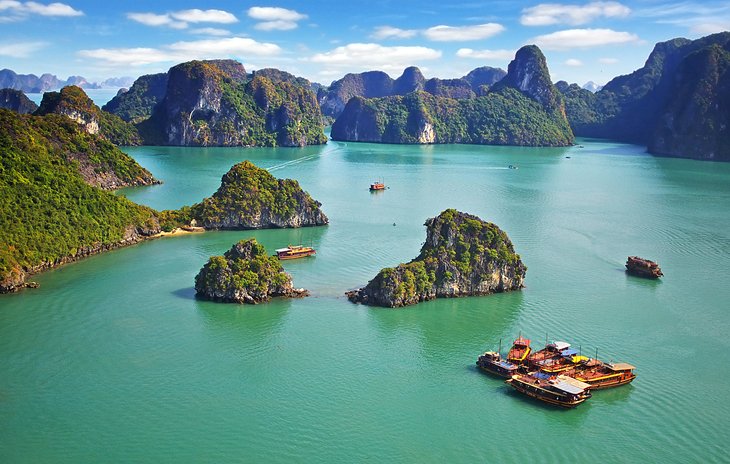
The karst seascape of Halong Bay is one of the best places to visit in the world for spellbinding sea views and is a UNESCO World Heritage Site.
Thousands of limestone islands sit within this bay in the Gulf of Tonkin, eroded into jagged pinnacles by wind and water action over millennia.
With the bay's scenery best seen by boat, this is prime cruising territory. Opt for at least an overnight tour to see Halong Bay's iconic views as a day trip doesn't do it justice.
There are plenty of caves in the bay that can be entered including the Hang Sung Sot, with three mammoth caverns, and the Hang Dao Go, with superbly weird stalagmites and stalactites. For most people though, the highlight is simply cruising amid the karsts and soaking up the changing scenery of pinnacles as you pass by.
There are plenty of different cruise tours to choose from. Check the different itineraries offered before booking as many travelers have left Halong Bay underwhelmed by their cruise.
Author's Tip: If possible, book a tour that takes in neighboring Lan Ha Bay as well as Halong Bay. The karst scenery is just as dramatic here but fewer cruise trips visit. And check if your cruise offers included activities such as guided kayaking (which allows you to experience an up-close view of the scenery).
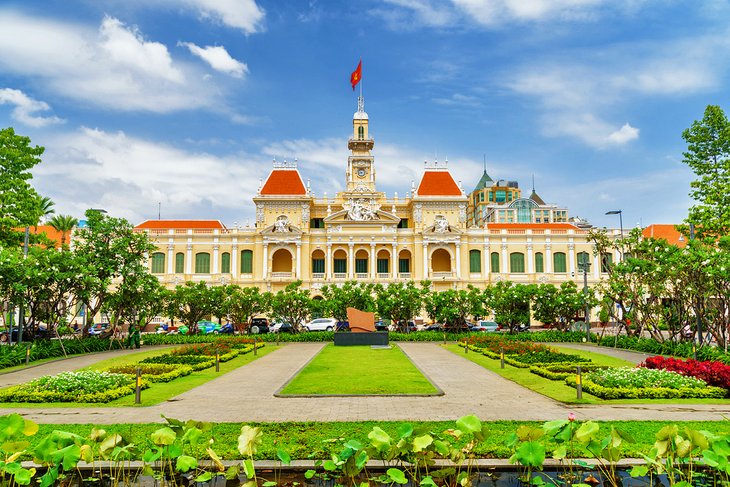
For big city fans, no visit to Vietnam is really complete without a visit to Ho Chi Minh City, the buzzing commercial hub of the country.
The streets are an insane clog of motorbikes and cars, the restaurant and café scene is incredibly cosmopolitan, and the shopping is the best in the country.
At its center is Dong Khoi, a relatively small and easily navigable central district, which holds most of the city's sights.
Here, you'll find the HCMC Museum, with a brilliant collection of artifacts that weaves together the story of the city, and the grand Notre Dame Cathedral, built in the late 19th century.
Check out the old district of Da Kao nearby for some of the best surviving examples of the city's French colonial architecture and also to visit the Jade Emperor Pagoda with its dazzling array of Buddhist and Taoist religious iconography.
Afterwards, the History Museum is a must-do for history fans with stacks of relics on display from various archaeological sites.
For many visitors, the two big-hitter tourist attractions not to miss are just a little out of the center, along Nguyen Thi Minh Khai Street. The Reunification Palace, then known as Independence Palace, was the residence for South Vietnam's president. It's chiefly famous as the spot where North Vietnam's tanks stopped on 30 April 1975, officially ending the war. It's a completely fascinating place to visit complete with 1960s furnishings still in situ.
Nearby is the War Remnants Museum, which although very obviously biased, paints a disturbing picture of the brutality of war and the many atrocities committed by US Forces during their Vietnam campaign.
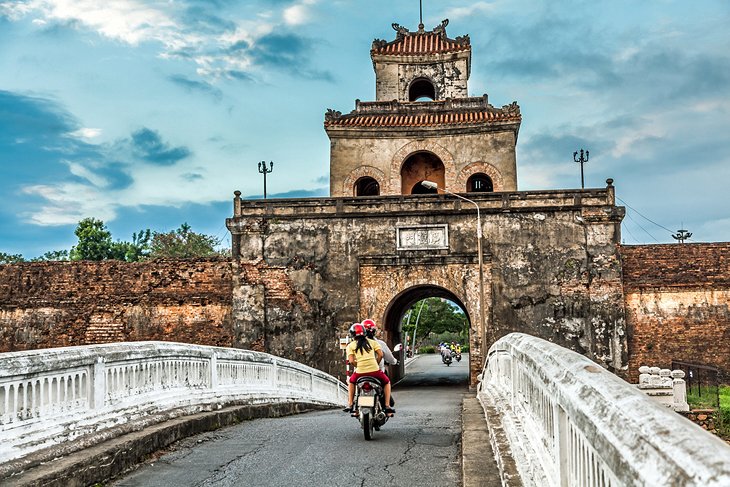
One of Vietnam's most historic towns, Hue is packed to the brim with relics from the reign of the 19th-century Nguyen emperors.
Sitting along the banks of the gorgeous Perfume River, the Imperial Enclosure is a huge site set within walls that sprawl for 2.5 kilometers.
While touring the grounds check out the gorgeous Ngo Mon Gate, the Thai Hoa Palace with its finely lacquered interior detailing, the Dien Tho Residence where the Queen Mothers would live, and the Halls of Mandarins with its preserved ceiling murals.
A dazzling number of historic sites lie outside the Imperial Enclosure walls as well.
One of the nicest ways of visiting a collection of outlying sites is by taking a riverboat cruise on the Perfume River. A day cruise can take you to visit several royal tombs along with some pagodas.
If you're short on time, the best tomb to visit is the Tomb of Tu Doc and the most important pagoda in the area is the Thien Mu Pagoda, with its tower that soars for 21 meters high.
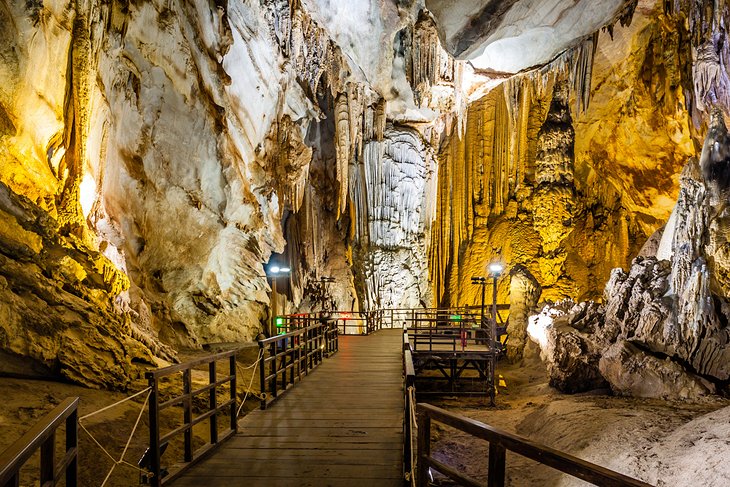
One of the best places to visit in Vietnam for caving, World Heritage-listed Phong Nha-Ke Bang National Park is a dramatic karst mountain formation honeycombed with huge caverns, which are home to superb stalactite and stalagmite displays.
It's best known for its caving activities , which range from multi-day hiking and caving tours for the more adventurous, to simpler half-day trips to caves with easy access provided by boat trips and modern boardwalks, but the national park also offers mountain biking and trekking activities.
The most popular destinations within the park are the Paradise Cave , which extends for a staggering 31 kilometers below ground, and the Phong Nha Cave, where the interior is accessed by boat. Half-day tours can be easily arranged once you're in the area.
The national park's most renowned caverns though are Son Doong Cave (the world's largest cave) , and the Tu Lan Cave with its cavern river system. Access to these, and to certain other caves in the park are restricted to organized tours (ranging from one-day to multi-day expeditions) which are all run by Phong Nha's expert adventure tour company Oxalis . It's well worth booking in advance to secure your spot.
To make the most of your time here, time your visit for outside the rainy season, which runs from October to December, when many of the national park's caves are closed to the public.
You can access Phong Nha-Ke Bang National Park from Son Trach (also known as Phong Nha village).
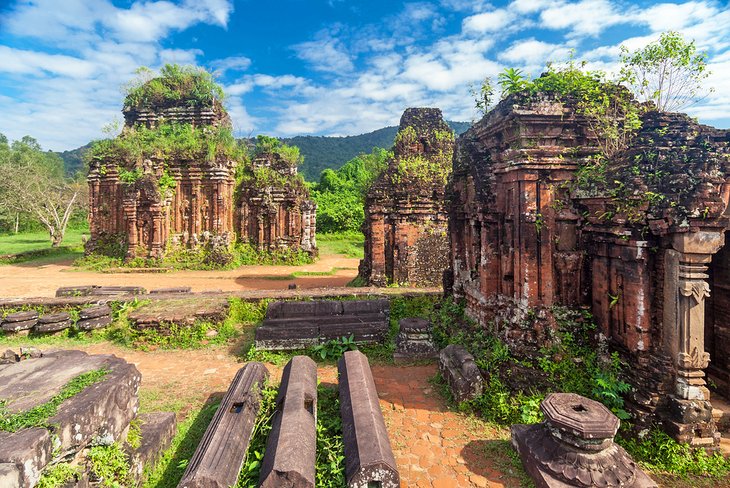
Surrounded by lush jungle-covered mountains, My Son is a ruined Cham era temple city that dates from the 4th century.
This old Hindu religious center was still very much in use during the 7th to 10th centuries and only fell into complete decline and abandonment during the 13th century.
There are around 20 temple structures still standing here, all built of brick or sandstone blocks and showing interesting influences from various Asian empires, including Indian and Malay.
Note that the temples of Group B are the oldest, while Group A once contained the site's most important monument but was destroyed deliberately by US forces during the Vietnam War.
A good museum on-site houses plenty of information on the Cham.
Access to My Son is from Hoi An.
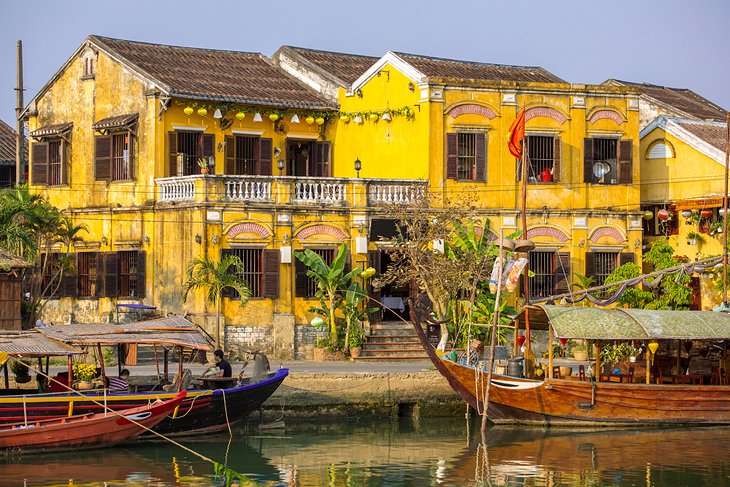
Beautiful Hoi An is the most atmospheric city in Vietnam, with bags of surviving historic architecture.
The old town quarter is a joy to explore, packed to the brim with well-preserved merchant houses that hark back to Hoi An's trading center heyday of the 15th century, when the town was a major meeting point for Japanese and Chinese merchants who flocked here for the local silks.
Plenty of the old merchant houses have been opened to the public, so you can get a taste of these times. The best is 17th-century Tan Ky House, with fascinating architectural and decorative elements.
Hoi An's major symbol is the delightful Japanese Bridge at the western end of Tran Phu Street, while nearby, the Assembly Hall of the Fujian Chinese Congregation is the old town's most highly decorated temple.
There are numerous small pagodas and museums dotted about town, but Hoi An's true charm is found in simply rambling the old town streets admiring the well-preserved facades.
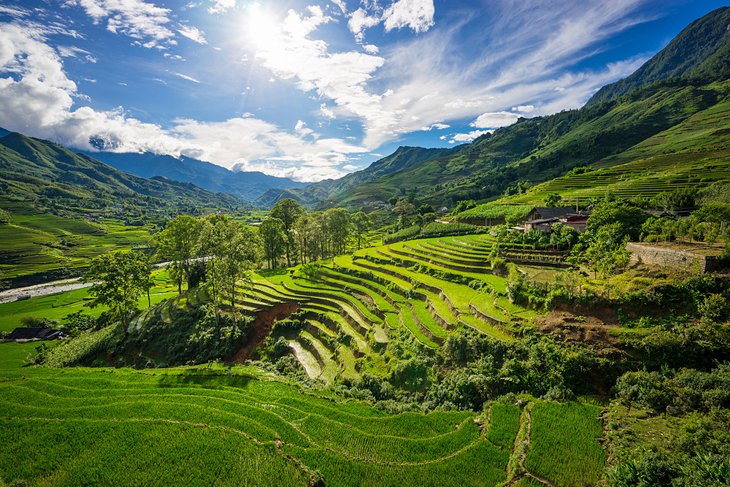
The verdant rice field countryside surrounding Sapa, bordered by the jagged peaks of the Hoang Lien Mountains (often still known by their French colonial era name of the Tonkinese Alps), are home to Vietnam's most beautiful rural vistas.
The deep valleys here are home to a diverse mix of the country's ethnic minorities, including the Hmong, Giay, and Red Dzao people, while the rippling hills are terraced with rice fields and overlooked by the country's tallest peak, Fansipan Mountain.
This is the top trekking destination in Vietnam with oodles of options to trek or day hike between tiny villages and experience the staggering mountain views.
Sapa itself is the main base here - an old hill station and now a bustling and forever growing tourist center that is a stark contrast to the sumptuous tranquil countryside right on its doorstep.
Author's Tip: Keen trekkers looking for more of northern Vietnam's lush mountain vistas may want to skip the busy Sapa scene completely and nudge further 95 kilometers northwest to Bac Ha , where the terraced hill views on hikes between hill villages are just as beautiful. Bac Ha's Sunday market is also a very popular day trip from Sapa.
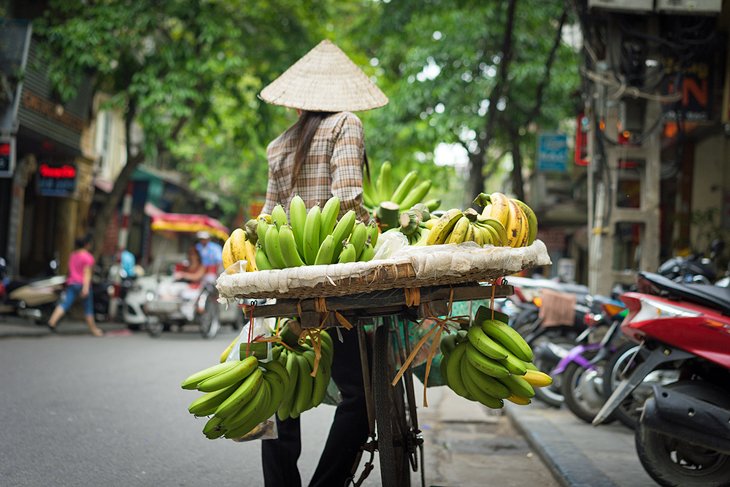
Vietnam's capital is the frenetic heartbeat of the nation and a place that befuddles travelers as much as it charms them.
The motorbike frenzy, pollution, and constant clamor of street vendors can get too much for some travelers, but if you want to dive into Vietnamese city life, Hanoi is the place to do it.
The old town quarter has plenty of dilapidated charm on offer, while history fans should make a beeline here simply to see the bundle of excellent museums.
The Vietnam Museum of Ethnology and Vietnam Fine Art Museum are both brilliant introductions to the diverse artistry of the country, while the Ho Chi Minh Mausoleum is an important tribute to the founder of modern Vietnam.
Author's Tip: It's well worth adding extra time into your itinerary to use Hanoi as a base for exploring the many sights within day tripping distance. In particular, the Tay Phuong and Thay Pagodas (30 kilometers west from the central city), Co Loa Citadel (24 kilometers northeast), and the Huong Pagoda (also known as the Perfume Pagoda; 60 kilometers southwest).
- Read More: Top-Rated Tourist Attractions in Hanoi
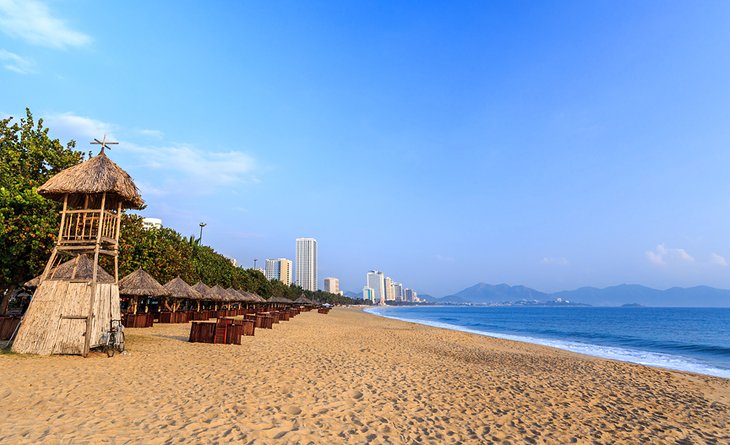
For sandy fun in Vietnam, Nha Trang is king. The well-maintained beach trundles for six kilometers along the shoreline of central Nha Trang city and during summer is jam-packed with local families on vacation, as well as foreign visitors.
There is excellent swimming here with designated swimming areas and manicured lounging areas that make this a great option for relaxing days soaking up the sun and sand.
If you do get bored of sunbathing, the ancient Po Nagar Cham Towers are just to the north across the Xom Bong Bridge and have been used as a place of worship here since at least the 7th century (with some historians saying the site itself has been a place of active worship since much earlier).
There is also an excellent museum dedicated to the work of Alexandre Yersin who discovered the cause of the bubonic plague and founded Nha Trang's Pasteur Institute (which still carries out vaccination programs in Vietnam today).
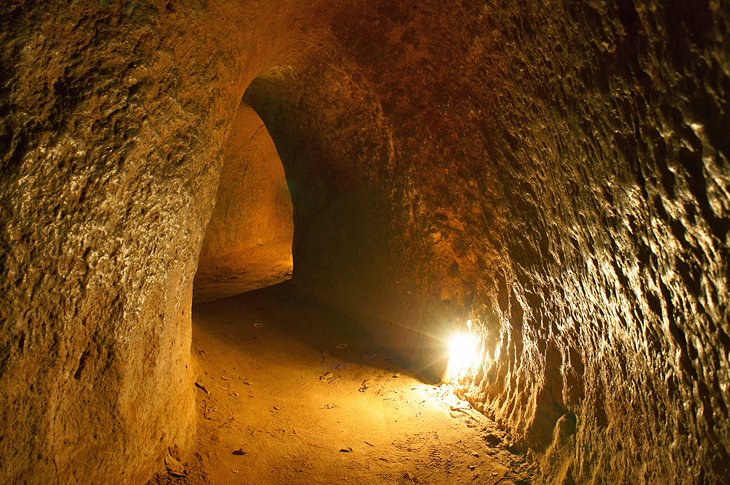
An absolutely fascinating experience for all travelers, not just those interested in Vietnam's modern military history, the Cu Chi Tunnels are an extensive tunnel network that during the war, stretched for more than 250 kilometers, allowing VC troops to operate and communicate in the area surrounding Ho Chi Minh City.
Two short sections of the network can be visited with a guide who'll take you down into the narrow unlit confines, which definitely are not for claustrophobia sufferers.
You will literally be crawling on your hands and knees and some points. You can access the tunnels at either Ben Dinh village (the more popular choice) or Ben Duoc village.
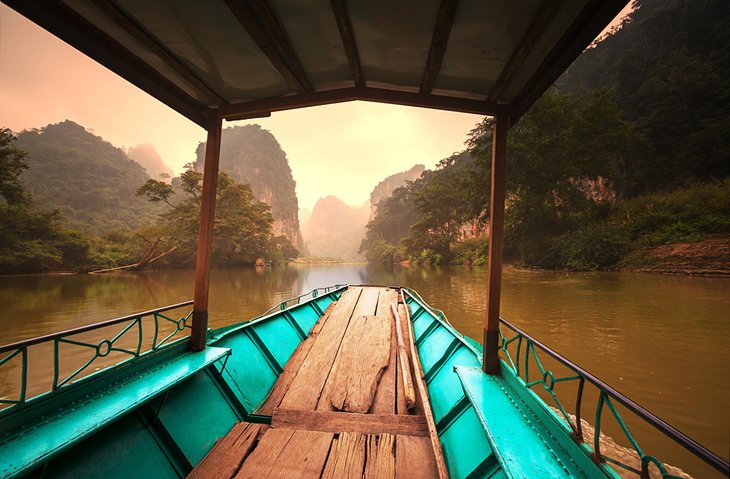
Tranquil Ba Be National Park is absolutely stunning with the three interlinked Ba Be Lakes at its heart, rimmed by jagged karst peaks and thickly forested slopes.
Most visitors come here to take peaceful boat trips or kayak on the lake and explore the caves full of stalactites and stalagmites in the vicinity, but for the more active, there's also excellent hiking and trekking in the hills here between ethnic minority villages.
This is one of the most peaceful spots in Vietnam, and travelers who spend the night here sleep in traditional stilt-house homestay accommodation along the lakeshore, allowing an experience of simple rural life.
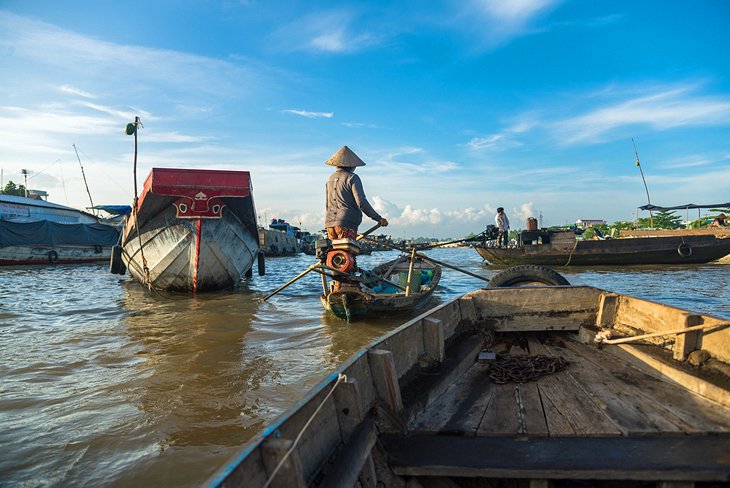
The far south of Vietnam is where the mighty Mekong River finally finds its way to the sea in a maze of waterways that crisscross the floodplain.
Incredibly lush, with paddy field vistas and mangroves, and full of local life, with chaotic floating markets to explore by boat, the delta is one of the most interesting regions for travelers to discover.
Can Tho is the most popular town to use as a base, as it's close to the floating markets of Phong Dien and Cai Rang, while boat trips from Ca Mau allow you to explore the U Minh Mangrove Forest and Cau Mau Nature Reserve.
This area of Vietnam is one of the best to visit for keen bird watchers and nature lovers , as it is home to both Tra Su Bird Sanctuary Forest and Bac Lieu Bird Sanctuary.
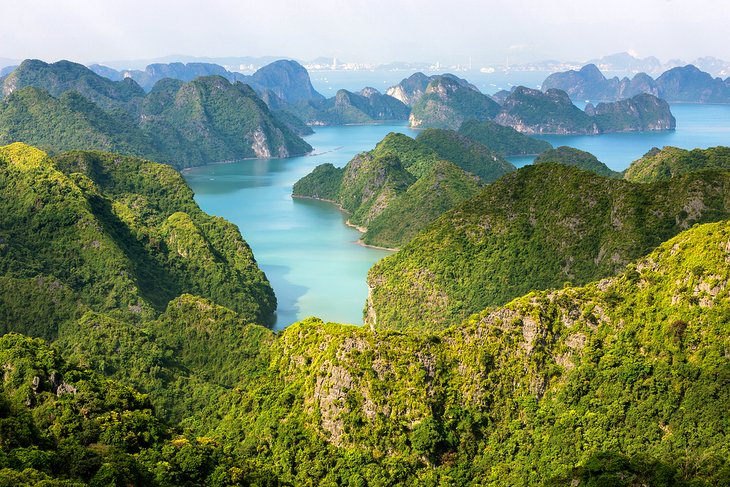
One of Vietnam's major centers for activities and adventure travel attractions, Cat Ba Island sits on the western edge of Halong Bay.
This is the best place to visit if you want to organize cruises and kayaking trips in Lan Ha Bay, which lies off Cat Ba's southern coast. Lan Ha Bay is a less visited seascape of karst islets and outcrops that makes for a quieter alternative to Halong Bay.
Off the water, much of Cat Ba's dense jungle interior is part of Cat Ba National Park, where hikers can spot plentiful birdlife, as well as animals such as macaques.
For many visitors, though, Cat Ba is all about climbing opportunities. Climbing excursions here utilize both the island's limestone cliffs and Lan Ha Bay's outcrops, providing experiences to suit both complete climbing beginners and experienced climbers.
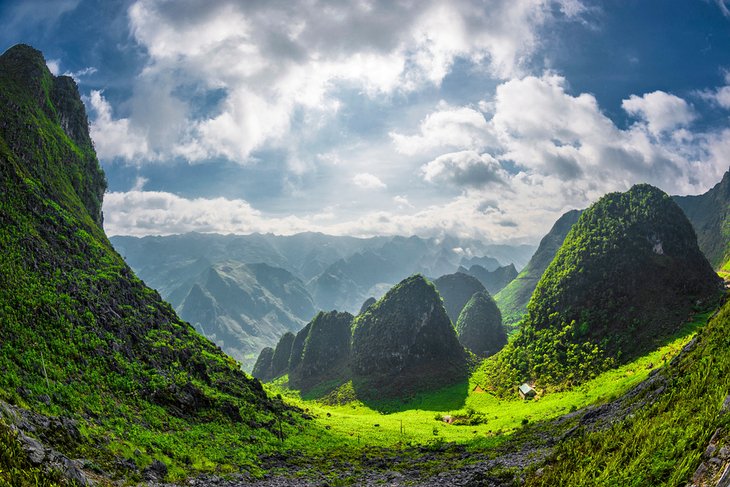
The emerald-green karst mountain landscapes along Ha Giang's mountain passes make this far-north province prime territory for scenic road-tripping by either motorbike or car.
In particular, the twisty Quan Ba Pass between Ha Giang town and Tam Son provides panoramic vistas of the karst plateau and its jagged limestone outcrops, while the zigzagging Mai Pi Leng Pass between Dong Van and Meo Vac offers dizzying views of the lush mountain scenery and narrow valleys below.
Time your visit to coincide with one of the area's market days, when traders from the surrounding mountain villages pile into town. Dong Van's Sunday market is one of the best.
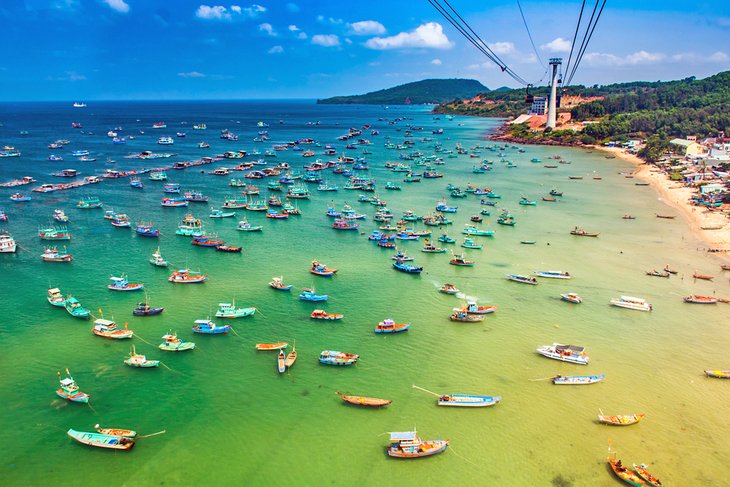
Sitting 45 kilometers off the southern coast of the country, in the Gulf of Thailand, Phu Quoc is a densely forested island, speckled by sweeps of white-sand beach that attract plenty of sunseekers during the winter dry season.
Dry season (November to May) is also when the island's underwater and on-the-water tourism attractions spring into action, with plenty of dive sites in the waters just offshore, as well as opportunities for snorkeling, kayaking, and boat trips.
Many of the main boat excursions head to the An Thoi Islands, just to the south of Phu Quoc, which is home to the best snorkeling in the area.
Off the water, the Phu Quoc cable-car provides bird's-eye views for eight kilometers, soaring over the seascape and islands, all the way from Phu Quoc to the island of Hon Thom in the An Thoi Islands.
Phu Quac is accessed by plane or regular ferries from the mainland towns of Rach Gia and Ha Tien. As Ha Tien lies very close to the southern border crossing with Cambodia, the island is a popular first (or last) stop-off in Vietnam for overland travelers.
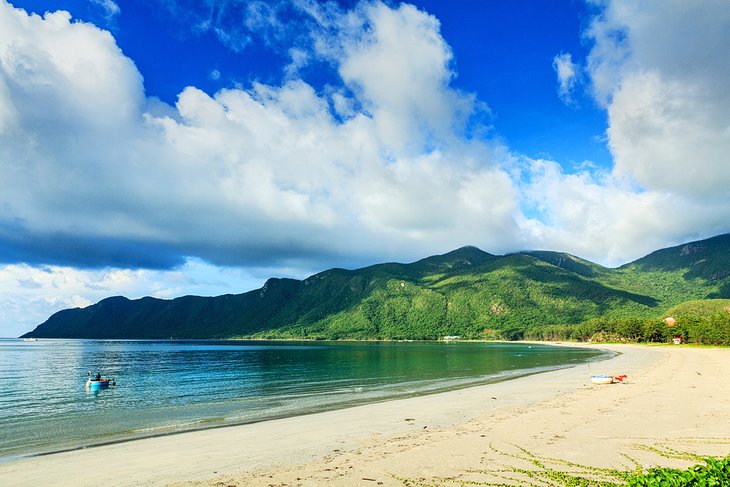
This remote island group lies around 160 kilometers offshore in the South China Sea and is renowned among divers as one of the best places to visit in the country, both for the variety of sea life and for the coral reefs.
Much of the Con Dao Islands, and the surrounding water, is a protected wilderness area, with the island shores home to nesting turtles, and dense forest still covering the island interiors.
The main island, and prime base for visitors with all the accommodation and things to do, is Con Son Island, which has sweeps of sand strung out across its coast that attract beachgoers looking for a relaxed sun-soaked getaway, as well as divers.
Even if you're here mostly for the beach, make sure to explore the historic sites of Con Son Town (the island's only settlement) including Phu Hai Prison, Bao Tang Con Dao Museum, and the prison known as the Tiger Cages, which document the dark history of this isolated island group.
Con Son's remote position led to the island being used to incarcerate political prisoners during the era Vietnam was occupied by French colonial forces, and later by both the South Vietnamese government and the occupying American forces.
Preserved sites including Phu Hai Prison and the prison cages used by the US forces, known as the Tiger Cages, along with Con Son Town's Bao Tang Con Dao Museum, do an excellent job of documenting this history for visitors.
Access to Con Son Island is either by flight from Ho Chi Minh City or by ferry from the coastal city of Vung Tau.
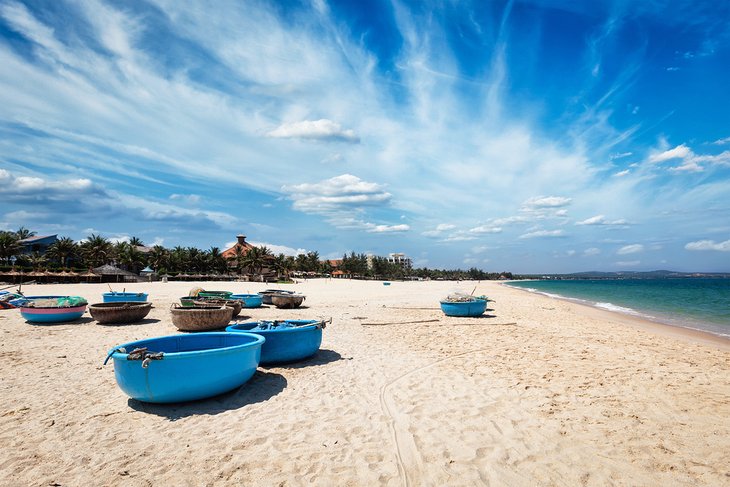
Once a sleepy coastal fishing town, Mui Né has developed into a beautiful beach resort town and a prime destination for windsurfing, sailing, and kitesurfing.
Compared to other beach destinations in Vietnam , however, Mui Né remains relatively unknown - and this means pristine beaches and a quiet retreat for most of the year.
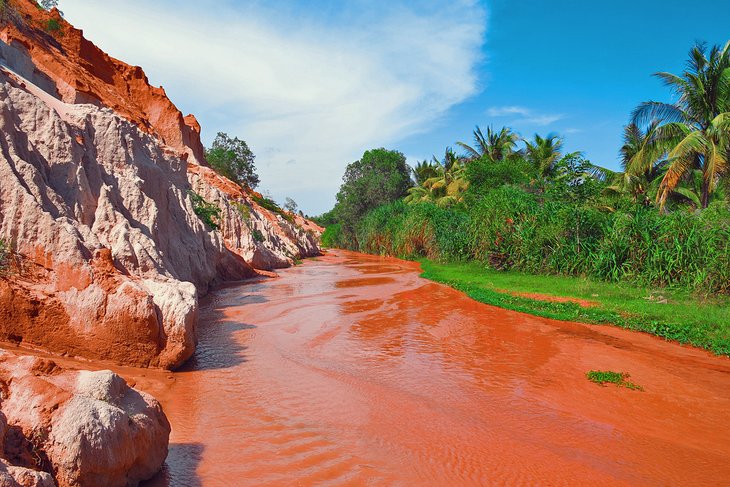
One of Mui Né's most unique attractions is the natural Red Sand Dunes just outside town, where visitors can practice sand-sledding or rent dune buggies for a more adrenaline-charged experience.
Tucked away between nearby fishing villages and towering orange limestone formations, there's the fairy stream, a slow-moving warm stream that almost feels like a walkway because it's so shallow - follow it to the end to reach a waterfall.
For those wishing to explore beyond the coastline, there are also the ruins of the Po Shanu Cham Towers - remnants of the Cham Empire that dominated the area many centuries ago.
Vietnam experiences strong monsoon seasons, where heavy rains hit the cities and the countryside, often causing floods and mudslides. If you're planning to travel around, the best time to visit Vietnam is during the dry season, which lasts from December to February – but there are some exceptions.
The south of Vietnam – where Ho Chi Minh city is located – experiences a more tropical climate, with high temperatures and high humidity year-round. Visiting these areas in the cooler months means less humidity and temperatures in the high 20s rather than the high 30s and 40s, which makes it more comfortable to walk around.
In the north, however, many areas experience an actual winter. Hanoi sees temperatures in the mid- to high teens in December and January – and in the mountains of Sapa in the north, you'll even get to see some snow during these months.
If you're visiting Danang for some beach time or to travel through the ancient town of Hoi An, it's best to arrive between February and May, when water and air temperature are in the 20s – perfect beach weather for enjoying the sand or a dip in the water. The rainy season, and especially the months of September and October, see very heavy rains and often very strong wind storms on the coast, so it's better to stay away from Danang during this time.

More on Vietnam
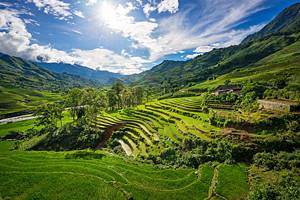
The 10 best places to visit in Vietnam in 2024

Feb 24, 2024 • 8 min read

Experience the best of Vietnam with these top places to visit © hadynyah / Getty Images
With its rolling emerald landscapes, perfect beaches and energetic cities, Vietnam is unsurprisingly a magnet for visitors in search of an incredible travel experience.
This country is teeming with attractions, so it pays to plan your trip around the places you absolutely can't miss. Where you want to go will influence whether you fly into cultured Hanoi in the north or energetic Ho Chi Minh City (HCMC) in the south, or whether you bypass these two megacities for the laid-back beaches of tropical Phu Quoc.
Start your travel to-do list now with our ten favorite places to visit in Vietnam.

1. Phu Quoc
Best for beach lovers
About as far south as you can get from Hanoi without splashing into the Gulf of Thailand, the island of Phu Quoc is where beach worshippers come to pray. Lapped by jewel-blue waters and edged by fine sandy beaches, this is a place to slip into low gear, reaching for a cocktail as the ember-colored sun dips into the bay.
But it's far from undiscovered – local tourists come in droves for theme park thrills at VinWonders and giddying views over the sea from the world's longest over-sea cable car. Phu Quoc is a popular stop for families, and if you fancy a change from the tourist scene, there are dense jungles to explore inland from the sand.
Planning tip: If you're bound for Phu Quoc, there's no need to go via Hanoi and HCMC; numerous Asian airlines offer flights from hubs such as Bangkok, Kuala Lumpur and Seoul, connecting with long-haul flights further afield.
Best for city slickers
Every trip has to start somewhere, and the ideal point of arrival for first-timers is Vietnam's historic capital. As well as easy infrastructure, inexpensive accommodation, world-class dining and more history than you'll ever have time to take in, Hanoi is the leaping-off point for the islands and outcrops around Halong Bay and the forest-draped trails of the mountainous northwest. Give yourself time to graze through Vietnam's catalog of street food treats and pause to soak up the atmosphere in cozy cafes in the Old Quarter as well as rush around the sights.
Planning tip: To enjoy Hanoi nightlife on a budget, swing by the streetside bia hoi (draft beer) stalls at busy Bia Hoi Junction on the drinking strip of P Ta Hein.

3. Lan Ha Bay and Bai Tu Long Bay
Best for iconic photos
The crowds mob Halong Bay , but for our money, the shimmering bays to the north and south have a slight edge over Vietnam's most famous collection of outcrops and islands. While trips to Halong Bay are highly commercialized, with motorized luxury junks blowing diesel fumes around the eroded karst islands, Lan Ha Bay and Bai Tu Long Bay are a bit more laid-back, and you won't have quite so many cruise ships in your photos. Try kayaking between the outcrops, explore the tropical trails on Cat Ba Island – gateway to Lan Ha Bay – or kick back on the sand on Bai Tu Long's idyllic Co To Island.
Planning tip: If you visit Cat Ba Island, take time to explore the trails around Cat Ba National Park – if you trek with your own guide, it's easy to leave the crowds behind.
4. Ho Chi Minh City
Best for a sense of the past
Cosmopolitan Ho Chi Minh City (HCMC) is the southern counterweight to Hanoi in the north, taking its cultural cues from the Mekong Delta and neighboring Cambodia . It's fast-paced, frenetic and fun, particularly after dark, when the pavements transform into a mobile buffet of street food stalls and roadside bars.
A little of the frontier feel of the war years lives on in HCMC, and you can learn more about this violent period at sites such as the War Remnants Museum . The ghosts of French Indochina linger too – set aside some time to wander past the city's colonial-era landmarks, then settle into a coffee shop with a drip-brewed ca phi .
Planning tip: For a break from the city crush, swing out to nearby Tay Ninh, where the Cao Dai Holy See offers a fascinating introduction to the all-embracing Cao Dai religion.

5. Phong Nha-Ke Bang National Park
Best for unique experiences
Vietnam's biggest natural attraction – literally – is Hang Son Doong Cave, the largest cavern in the world by volume and a true wonder. An entire New York City block could fit inside its vast main passage, but this monster cavern is only accessible on expensive guided treks.
The good news is that Phong Nha-Ke Bang National Park is pockmarked with caverns that you can clamber, crawl, boat or zipline through for a fraction of the cost. Trips to the Tu Lan, Phong Nha and Paradise caves are possible on a shoestring budget; more cash will buy access to Hang En, where trekkers set up tents on an underground beach, illuminated by shafts of natural light.
Best for history
A stay in harmonious Hoi An is a journey into Vietnam's lavish, layered past. This was once one of the most important ports in Asia, and traders from as far afield as Japan, Spain and North America filled the pockets of its merchants with gold. Locals used their money wisely, packing the Old Town with teetering shophouses, tea warehouses, fanciful covered bridges, elaborate Chinese guildhalls, and colorful Confucian and Buddhist pagodas. History is only the beginning – many travelers stay for days, learning to make white rose dumplings and summer rolls on chef-led cooking courses, and ordering made-to-measure suits and gowns from the city's modestly priced tailors' shops.
Planning tip: For a change of pace, head inland from Hoi An and spend a night in a friendly community homestay in the Co Tu minority village of Bho Hoong.

7. The Central Beaches
Best for sun-seekers
Sandy bays stud Vietnam's central coastline, but the mood varies widely from beach to beach. Package tourists flock to high-rise Danang and Nha Trang – famed as military R&R stops during the American War – but we rate the calmer beaches along the coast, where a little of Vietnam's old seaside charm still endures. To the south of Nha Trang, Mui Ne is a lively kitesurfing hub following a string of sandy coves, while Doc Let Beach to the north serves up 18km (11 miles) of sand, surf and seafood. For a quieter experience, hit the coast between Hue and Danang – Thuan An is the gateway to a string of serene and sandy beaches flanking a lagoon-backed barrier island.
Best for imperial history
The former capital of the Nguyen dynasty – which ruled over large parts of Vietnam, Laos and Cambodia in the 19th and 20th centuries – drips with imperial history, despite the ravages of US bombers during the American War. Much was lost in Hue , but the grandeur of dynastic Vietnam lives on in the Citadel and Imperial Enclosure , housing the emperor's residence, temples, palaces and court. At one time, entering without permission would bring instant death. Just outside town are the tombs of Vietnam's greatest emperors, resting serenely in green compounds beside the Perfume River. Another relic of royal rule is Hue's imperial cuisine – arguably the finest in the country – try a spicy bowl of bun bo Hue (vermicelli noodle soup) or a crispy banh khoai pancake, and you'll see what we mean.
Planning tip: To stay one step ahead of the crowds at Hue's imperial tombs and rent a motorcycle or scooter to explore; don't miss the Thien Mu Pagoda on your way out of the city.

9. Ba Be National Park
Best for lake and forest scenery
Vietnam has more than 30 national parks , taking in everything from coastal swamps to mountain jungles, but some are firmly on the tourist trail, and the crowds can be an impediment to spotting wildlife. That's less of a problem in lovely Ba Be National Park , where trails weave between the limestone peaks to Hmong, Tay and Dzao villages, and boat and kayak trips cross serene lakes hemmed in by forested ridges, creating scenes worthy of a medieval woodcut. The park is a haven for everything from macaques and langur monkeys to rare black bears, scaly pangolins and the spectacular crested serpent eagle.
Planning tip: Comfy accommodation in village homes completes the sense of stepping off the mainstream tourist circuit. For an intimate homestay experience, check out the family-run guesthouses in Pac Ngoi village, accessible by bus from Hanoi, via the village of Cho Don.
10. Ha Giang
Best for mountain views
Trekking to the minority villages in the hills around Sapa is one of Vietnam's top draws, but the country's trekking capital feels rather commercialized these days. Hikers have to walk further every year to find the rural idyll that first drew people to the northwest.
For scenic countryside without the company, remote Ha Giang province is Vietnam's new frontier. Staying in simple village homestays, you can hike out to minority villages and rice terraces tucked between the soaring limestone peaks, and motor (or pedal) over some of Vietnam's most spectacular passes. You'll want to take plenty of photos on the winding mountain road between Ha Giang town, Dong Van and Meo Vac.
Planning tip: If you're confident in the saddle, motorcycles can easily be rented in Ha Giang town – just ride slowly and be ready for rainy conditions!
This article was first published Apr 13, 2021 and updated Feb 24, 2024.
Explore related stories

Destination Practicalities
Sep 4, 2024 • 7 min read
From packing to local etiquette when you're there, these top tips can help visitors plan the perfect trip to Thailand.

Sep 3, 2024 • 9 min read

Aug 20, 2024 • 13 min read

Aug 12, 2024 • 12 min read

Aug 5, 2024 • 6 min read
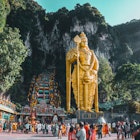
Jul 25, 2024 • 7 min read
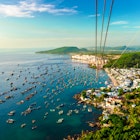
Jul 12, 2024 • 7 min read

Mar 14, 2024 • 10 min read

Feb 22, 2024 • 5 min read

Jan 17, 2024 • 8 min read

Destination
- Sao Tome & Principe
- South Africa
- New Zealand
- French Polynesia
- United Kingdom

Australasia & South Pacific
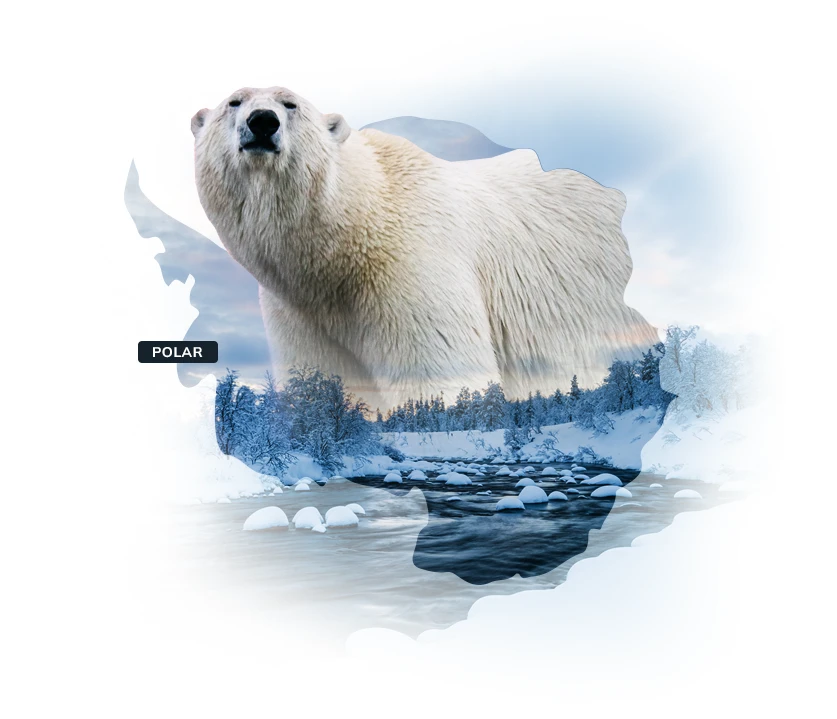
Latin America

Middle East
- Wayfairer Experience
- Responsible Travel
- Eco by Wayfairer
- Eco Gold by Wayfairer
- Luxury Holidays
- Beach Holidays
- Conservation Focused Holidays
- Family Holidays
- Safari Holidays
- Adventure Holidays
- Travel Inspiration Travel Inspiration
- Get in touch +44 117 313 3300 [email protected]
15 Most Beautiful Places To Visit in Vietnam

Magical waterfalls, pristine beaches and glimmering rice fields - discover Vietnam's breathtaking beauty
With some of the most incredible natural wonders on the planet, Vietnam is renowned for its astonishing beauty.
From the misty mountains, glistening rice fields and enchanting waterfalls of northern Vietnam, to the powdery white sand and clear turquoise waters of the southern beaches, Vietnam is a scenic paradise.
We’ve rounded up 15 of the most beautiful places to visit in Vietnam, plus the best times to visit each destination and how to get there.
Northern Vietnam
1. Sapa & The Tonkinese Alps
Hidden in the clouds among the soaring Tonkinese Alps, the small French hill station of Sapa offers a gateway to one of the most exquisite regions in southeast Asia.
As you break through the misty fog, you’ll discover the rolling green Hoàng Liên Son Mountains plunging into the Muong Hoa Valley, covered in a patchwork of glistening emerald rice terraces.
We recommend doing a 3-day trek between the villages to soak up the awe-inspiring scenery and catch a glimpse of traditional culture of the H'mong and Dao hill tribe villages. If trekking isn’t an option, you can still explore the most beautiful spots with day trips in a vehicle.

When to visit Sapa Located in the remote northwest of Vietnam, Sapa’s climate is best from March to May and September to November, with sunny days and clear skies. September and October are also the best months to see the rice terraces, as they bloom in a vibrant green after the rainy season. How to visit Sapa As there are no flights to Sapa, the best way to get there is with an overnight train from Hanoi. We recommend taking the Victoria Express, an eight-hour overnight train journey from Hanoi to Sapa, available only to guests of the luxurious Victoria Sapa Resort & Spa .
Have a look at some of our itineraries including Vietnam:
2. Ha Long Bay
The UNESCO World Heritage site of Ha Long Bay is world-famous for its silky, emerald waters and towering limestone karsts cloaked in lush rainforest.
For many, an overnight cruise through Ha Long Bay on a traditional junk boat is the highlight of their Vietnam holiday. You’ll take in otherworldly scenery as you glide along the gentle waters, passing floating villages such as Cua Van, Vung Vieng and Cong Dam.
Take a dip in the calm, clear waters, or go kayaking through the breathtaking caves and karsts - it’s the ultimate way to explore one of the most beautiful places in Vietnam.
When to visit Ha Long Bay The best time to visit Ha Long Bay is spring (March and April) and autumn (September and October), for optimal weather and pleasant temperatures. How to visit Ha Long Bay Located in northeastern Vietnam, Ha Long Bay is a four hour drive from Hanoi, and you can easily reach this destination with a private vehicle or a coach tour.

Wayfairer Top Tip Spend a night or two on Cat Ba Island, a stunning island near Ha Long Bay. Half the island is covered in the dense jungle of Cat Ba National Park, a UNESCO World Biosphere Reserve, while the other half is strewn with ancient caves, historical sites and golden beaches, surrounded by craggy karsts. From the island, you can take a sailing or kayaking trip to explore Ha Long Bay.
3. Detian Waterfall
Tumbling down three tiers, surrounded by enchanting karst peaks, the Detian Waterfall (Virtuous Heaven Waterfall) is one of the most beautiful waterfalls on earth .
Also known as Ban Gioc Waterfall, meaning ‘half-way across’ in Vietnamese, the falls lie on the border between China and Vietnam, making it the second largest transnational waterfall in the world.
Measuring at over 200 metres wide, with a drop of more than 70 metres, the sight of the Detian Waterfall is truly awe-inspiring, and you can hear it’s thundering cascades before it even comes into view. You can take a bamboo raft around the base of the falls for an unforgettable close-up encounter.

When to visit Detian Waterfall This incredible feat of nature changes throughout the seasons, with bright red blossoms in spring, and golden leaves in autumn. The best time to visit is between April and November, when the cascades flow in full force with the summer rains. How to visit Detian Waterfall You can reach the Vietnamese side of the falls with a 6-hour scenic drive along the highway between Hanoi and Cao Bang city. From Cao Bang, you’ll take a further 2-hour drive to reach this wondrous waterfall.
4. Ninh Binh Province
Known as the Ha Long Bay of the land, Ninh Binh province encompasses a region of jaw-dropping natural beauty. Luminescent green rice fields carve around the winding Ngo Dong River, while hundreds of limestone karsts covered in dense jungle shoot into the sky.
There’s plenty to explore including ancient caves, beautiful pagodas, Van Long Nature Reserve and Cuc Phung National Park, the oldest national park in Vietnam with excellent hiking trails.
When to visit Ninh Binh To see Ninh Binh illuminated in its richest greenery, the best time to visit is from late May to early July, and from September to October, when local farmers harvest the rice. **Note that during the dry season (November to March), the rice harvesting is over, leaving the fields a muddy yellow. Although you won’t see as much greenery, the landscapes are still impressive. How to visit Ninh Binh Ninh Binh can be reached in less than two hours in a private vehicle from Hanoi, or around three hours from Ha Long Bay.

Wayfairer Top Tip Stay in the town of Ninh Binh for at least one or two nights to make the most of this magnificent region. Trang An, a stunning complex of mountains and caves, and Tam Coc, a more popular landscape of caves, rivers, rice fields and pagodas, are both best experienced early in the morning to avoid the influx of tourists.
5. Ha Giang Province
Bordering China in the northernmost reaches of Vietnam, Ha Giang is a quiet riverside province, renowned for its magnificent landscapes.
You’ll climb down a rabbit hole of ethereal scenery, with forested mountains, mystical caves, and the stunning Quan Ba Valley where you’ll find Quan Ba pass. Known as Heaven’s Gate, the pass offers spectacular views over glimmering rice terraces, rolling hills and serpentine rivers.
Ha Giang is also home to Dong Van Karst Plateau Geopark , an incredible conservation and geological area that’s part of the UNESCO Global Geoparks Network.

When to visit Ha Giang Ha Giang is a year-round destination, however the temperatures are at their best from September to November and from March to May. From December to February, the dry season brings cold weather, while the hot, rainy season lasts from April to October. How to visit Ha Giang The easiest way to reach Ha Giang is with an approximate six-hour drive in a private vehicle from Hanoi.
Central Vietnam
With its cobblestoned streets, narrow canals, Chinese-style shophouses, and French-colonial buildings, the UNESCO World Heritage site of Hoi An is one of the most beautiful towns in Vietnam .
Located on the central coast, this former trading port is famous for its historic Old Town. Even though many of the old shops have been converted to modern businesses such as tailors, art galleries, souvenir shops and restaurants, the town has retained its old-fashioned charm and atmosphere.
Each night, all electricity in the Old Town is switched off and traditional silk lanterns are hung from every shop front. The colourful lanterns light up the streets and cast a romantic shimmer over the Thu Bon River.
When to visit Hoi An Hoi An is at it’s best from February to April, with warm, comfortable temperatures and little rain. You can also enjoy the most spectacular Full Moons of the year from July to August, although these months are renowned for their blazing heat. How to visit Hoi An The easiest way to reach Hoi An is by flying into Da Nang, located just 40 minutes from Hoi An. You can also take a train or a private vehicle transfer.

Wayfairer Top Tip Hoi An is an unmissable destination and we'd recommend spending at least two or three days here. After you’ve wandered the town, hire a bicycle to explore the villages around Hoi An, to get a glimpse of rural Vietnamese life. You can also visit My Son, an ancient temple sanctuary and a UNESCO World Heritage Site located 50 kilometres outside Hoi An.
7. Phong Nha-Ke Bang National Park
Phong Nha-Ke Bang National Park is a stunning region of turquoise lakes, ancient caves, and forested mountains, with plenty of adventure sports available to explore the park.
It contains the oldest karst system in Asia, dated between 400 and 450 million years old and is also home to Son Doong Cave, the largest cave in the world and one of the most remarkable wonders of Vietnam.
The cave is over 5 kilometres long, with sections reaching 200 metres high and 150 metres wide, and is big enough to fit an entire New York City block with 40 story skyscrapers .
It was discovered in 1991 by a local man named Ho Khanh, and only became internationally known after a group of cavers from the British Cave Research Association began to explore the cave.
After overcoming an 80-metre high calcite barrier in a second expedition in 2010, the team discovered that the cave was the largest in the world.
When to visit Phong Nha-Ke Bang National Park The best months to visit the national park are between March and May, when temperatures are pleasant and rainfall is low. December to February is also dry, however the weather can be quite cool. June to August are the hottest months, while August and December should be avoided due to heavy rainfall and flooding. How to visit Phong Nha-Ke Bang National Park Located in northern Central Vietnam, you can take a domestic flight into Dong Hoi airport, then take a private vehicle for the one-hour drive to Phong Nha-Ke Bang National Park. You can also arrange private vehicle transportation from any urban area including Hanoi, Ninh Binh, Halong Bay and Hoi An.
A laidback coastal city in central Vietnam, Da Nang is brimming with natural beauty and cultural attractions.
You’ll need a few days here to soak up all the sights, including Marble Mountains, a group of mountains with a maze of caves and trails, and a number of gorgeous temples to explore.
Visit My Khe Beach, a stunning white sand beach with plenty of watersports, or the wonderful Ba Na Hills Sunworld, a fairytale complex modelled after an old European city, featuring the world’s longest cable car lift.
You also can’t miss the Golden Bridge Hand, where you’ll find two giant stone hands emerging out of the mountain to cradle the golden bridge.
Suspended 1,400 metres above sea level, with panoramic views over the valley and the Truong Son mountains, Da Nang’s newest architectural attraction has drawn huge crowds from all over the world.
When to visit Da Nang Da Nang weather is at it’s best from February to May, with warm temperatures and clear skies. The hottest months run from May to September, while the rainy season brings showers from September to February. How to visit Da Nang You can fly into Da Nang International Airport from airports around Vietnam and the rest of the world.

Wayfairer Top Tip For the best views of Da Nang, make your way up the steep, winding road to Son Tra Peninsula, with plenty of sights along the way including the Man Thai Fishing Village, a 67-metre tall Lady Buddha statue, the Giant Banyan Tree, and Monkey Passage. Enjoy the breathtaking views from Ban Co Peak at the top, then head to Son Tra Nature Reserve, the only remaining coastal rainforest and home to 1,300 rare red-shanked doucs.
Southern Vietnam
9. Phu Quoc Island
Phu Quoc is a tropical paradise, lined with white sandy shores and sparkling waters, and filled with lush jungle and magical waterfalls.
It’s a quiet, relaxed island, small enough to explore the dozens of pristine beaches by bicycle or scooter. Renowned for its luxurious hotels, we recommend heading to the West Coast for powdery white sands, turquoise seas and spectacular sunsets.
You can also venture into the jungle to explore hiking trails and spot wildlife, or head to Duong Dong, the largest town with plenty of lively markets selling handicrafts and fresh seafood.

When to visit Phu Quoc Island November to March is the high season for Phu Quoc, with warm weather and blue skies. October and early November can also be a great time to visit, with fewer tourists and a beautiful blooming jungle after the heavy rains that last from July to September. How to visit Phu Quoc Island Located in southern Vietnam in the Gulf of Thailand, Phu Quoc can be reached with a domestic flight from major cities including Hanoi, Ho Chi Minh and Da Nang, or a private transfer and high-speed ferry to the island.
10. Quy Nhon
Get off the beaten track and head to Quy Nhon, a peaceful coastal city in southern Vietnam. Few tourists have heard of Quy Nhon, yet it’s the gateway to some of the most beautiful natural gems in Vietnam, including Ky Co Beach.
Tucked away in Phuong Mai Peninsula, Ky Co Beach is a natural work of art, with crystalline waters, pure white sand and rocky cliffs. You can paddle in the clear lagoons, formed between the sea rocks, sunbathe on the soft sand, or snorkel the nearby colourful reef.
When to visit Quy Nhon The best time to visit Quy Nhon and it’s beaches is between January and March, with milder temperatures and little chance of rain. After March, the region becomes sweltering, while heavy rains arrive during the wet season between September and December. How to get to Quy Nhon You can fly into Phu Cat Airport from major cities including Hanoi or Ho Chi Minh, then take a 45-minute private transfer to Quy Nhon city.
Wayfairer Top Tip This area is filled with natural wonders, including Eo Gio Bay, a stunning place where dazzling blue waters smash against the craggy cliffs. You can reach the bay by crossing Thi Nai bridge and driving about 5 kilometres to the centre of Nhon Ly Commune. From here it’s a 100 metre walk to the bay. You can also take a boat or canoe from Ky Co Beach to reach the bay.
11. Mekong Delta
Known as the ‘Rice Bowl of Vietnam’, the Mekong Delta is one of the most scenic regions of Vietnam. A land of winding waterways, mangrove forests, floating markets and lush green rice fields, life here is governed by the ebb and flow of southeast Asia’s most iconic river.
You can travel the mighty Mekong by boat, stopping at the famous floating markets of Chau Doc, Can Tho or Cai Rang, where traders and farmers come to buy and sell fruit, vegetables and fish.
You can also head out into the Mekong Delta on bicycles, roaming through peaceful villages where you’ll see children riding on the backs of water buffaloes and farmers tending to their glimmering rice fields.

When to visit the Mekong Delta The best time to visit the Mekong Delta is during the dry season between December and April, with blue skies and low humidity. November to January are the coolest months in this sweltering region. How to visit the Mekong Delta The Mekong Delta is located close to Ho Chi Minh, and you can take a day tour from the city to explore the waterways and floating markets. For an immersive Mekong experience, we recommend spending one or two nights in one of the towns located along the river, or taking a longer trip through Cambodia by boat along the Mekong.
12. Cat Tien National Park
Covering a vast region of lowland tropical forest, Cat Tien National Park is a breathtaking biosphere reserve in southern Vietnam. Set beside a small, sleepy town, the national park is home to a trove of ancient trees, botanical gardens and endangered wildlife.
Walk or cycle along the leafy trails for the chance to spot the the endemic golden-cheeked gibbon and other rare primates, bears, mongoose, civets, elephants, pangolin, deer and an impressive array of rare birds.
You can even take a canoe around the jungle-fringed waters of Crocodile Lake, to catch a glimpse of the lake's resident crocodiles.
You can also visit enchanting waterfalls around the town of Cat Tien, and an archaeological site located just outside the town, where you’ll find ancient Hindu temples built between the 4th and 9th centuries.
When to visit Cat Tien National Park The best time to visit Cat Tien is from December to May, with low rainfall and milder temperatures, making it easier to explore the forest. How to visit Cat Tien National Park The easiest way to reach this secluded park is with a four-hour drive in a private vehicle from Ho Chi Minh city.

Wayfairer Top Tip You can spot wildlife as you roam around the park, however for the best chance of sighting rare species, head to the park’s two animal rescue centres. The Dao Tien Endangered Primate Species Centre rescues endangered primates, while the Cat Tien Bear Rescue Centre rescues sun bears and Asian black bears from illegal trade.
With it’s magical waterfalls, shady forests and brilliant flower gardens, Da Lat has become renowned as one of the most romantic places in Vietnam, perfect for adventurous couples.
Known as the Paris of Vietnam, The City of Flowers and The City of Lovers, you’ll discover a charming town strewn with French-colonial villas, horse-drawn carriages, an Eiffel Tower-shaped radio tower and the gorgeous Valley of Love, dotted with heart-shaped sculptures.
The town is surrounded by picturesque crops of coffee, strawberries and flowers. The cooler weather and misty mountain air make it the perfect place for outdoor action, and you can go hiking, mountain biking, canyoning and white-water rafting in the surrounding hills.

When to visit Da Lat Da Lat is at its most beautiful between December and March, when the famous flower gardens erupt in full bloom. The weather is dry and sunny, and temperatures are pleasant for outdoor adventure. How to visit Da Lat You can take a domestic flight from Hanoi or Ho Chi Minh to Lien Khuong Airport, located 30 kilometres south of Da Lat. You can also reach Da Lat by taking a private vehicle transfer from Ho Chi Minh, Mui Ne or Nha Trang.
14. Nha Trang
With a stunning mountain backdrop, sweeping crescent beach and beautiful turquoise bay dotted with tropical islands, it is easy to see why Nha Trang is Vietnam’s most famous beach resort .
The town itself is home to Cham ruins, Buddhist temples and gothic-style Catholic churches, and you can visit Long Son Pagoda (also known as White Buddha Temple) to see a 14-metre high white Buddha sitting on a lotus blossom.
The platform around the huge figure offers fantastic photo opportunities, with impressive views of Nha Trang and the surrounding rural areas.
If you’re looking for adventure, head to the Ba Ho Waterfalls, where you’ll find three natural waterfalls and a clear lake surrounded by dense rainforest.
The waterfalls are a 40-minute drive from Nha Trang along a picturesque stretch of coastline, with views of the ocean on one side and lush mountains on the other.
When to visit Nha Trang The best time to visit Nha Trang is February to April, when temperatures are pleasant and rainfall is low. Diving visibility is also at it’s best during these months, and dive enthusiasts will love the coral-rich sites of Moray Beach, South Reef, Small Hill and Mun Island. How to visit Nha Trang You can get to Nha Trang with a domestic flight from most major cities in Vietnam including Hanoi, Ho Chi Minh and Da Nang. The airport is called Cam Ranh Airport and is located around 30 kilometres from the city centre. You can also access Nha Trang by train or with a private vehicle transfer.
Wayfairer Top Tip For your own private tropical paradise, head to Ninh Van Bay, located a 20-minute boat ride from Nha Trang city. Stay at Six Senses Ninh Van Bay, the luxurious star of this exquisite bay, lined with sugary white sands and dazzling blue waters. As the bay is only accessible by water, it’s the perfect place for a secluded retreat.
15. Mui Ne Sand Dunes
On the southern coast of Vietnam, you’ll find the country’s very own Sahara Desert. The striking red and white sand dunes have built up over time, as waves and winds carry the sand inland.
The dunes form a barrier against storms and beach erosion, and provide a habitat for endangered plant and animal species. The White Sand Dunes are a vast, ethereal expanse, and are absolutely stunning at sunrise, while the Red Sand Dunes are made up of coppery rolling hills which radiate at sunset.
There’s also a gorgeous Grand Canyon-esque Fairy Stream, flanked by lush greenery and the dazzling sand dunes.

When to visit the Mui Ne Sand Dunes Mui Ne is one of the driest places in Vietnam, so you’ll enjoy pleasant weather all year round. For the best surfing and beach conditions, visit Mui Ne between December and April. How to visit the Mui Ne Sand Dunes You can reach the dunes with a four-hour drive in a private vehicle from Ho Chi Minh city. If you’d like to spend more time at the dunes, you can stay in nearby Mui Ne fishing village, lined with a stunning golden sand beach, famed for kite and windsurfing. If you'd like to visit Vietnam call our Luxury Travel Specialists for a chat about your dream trip or fill out our no-obligation enquiry form.
We understand that booking trips, especially adventurous and alternative ones such as this can be intimidating, so get in touch; we can take the stress out of your holiday planning and organise a trip you won’t forget!
More vietnam travel inspiration from wayfairer customers and travel specialists.
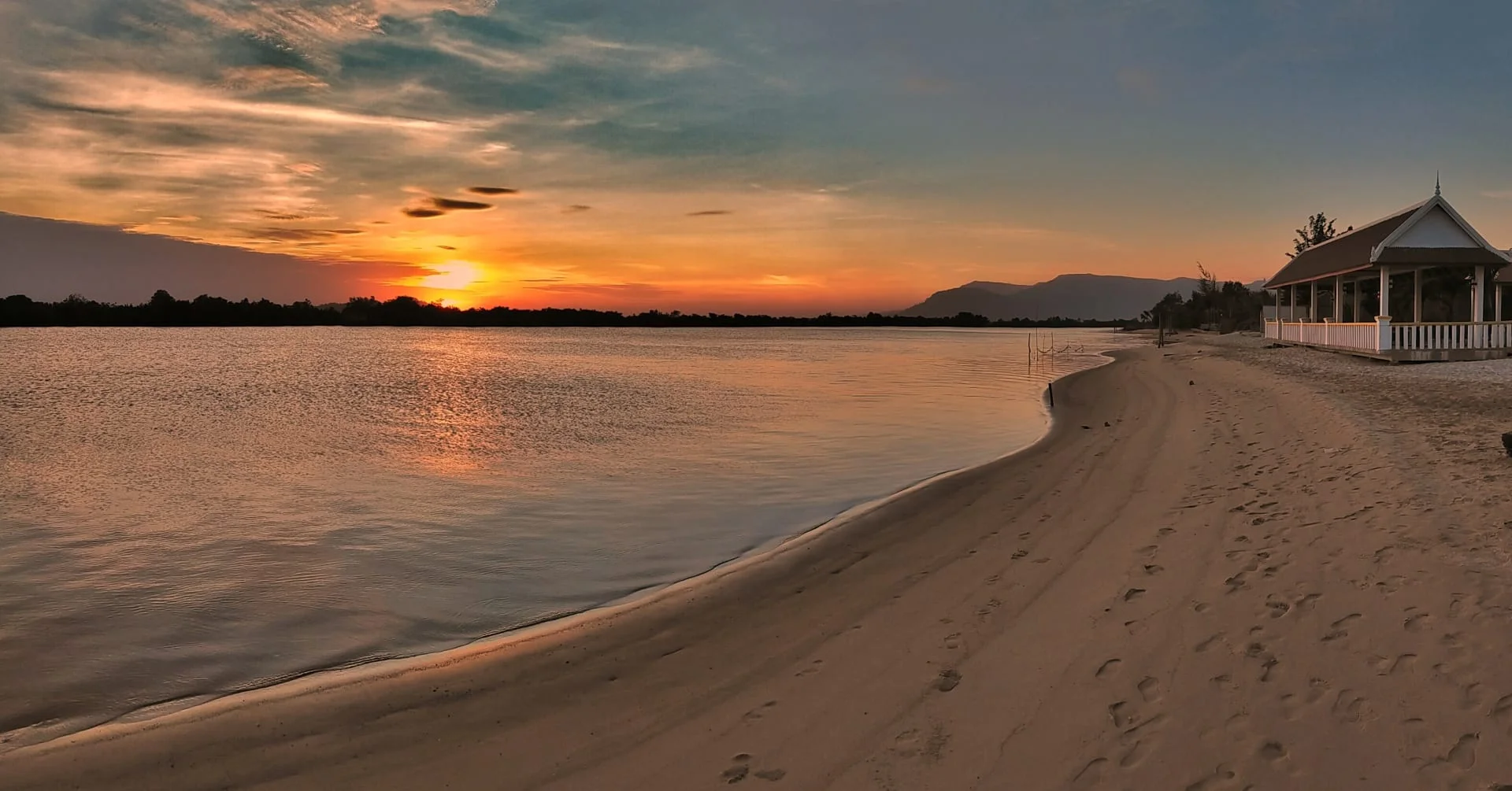
8 Luxury Winter Sun Holidays to Visit Now
November 29, 2023
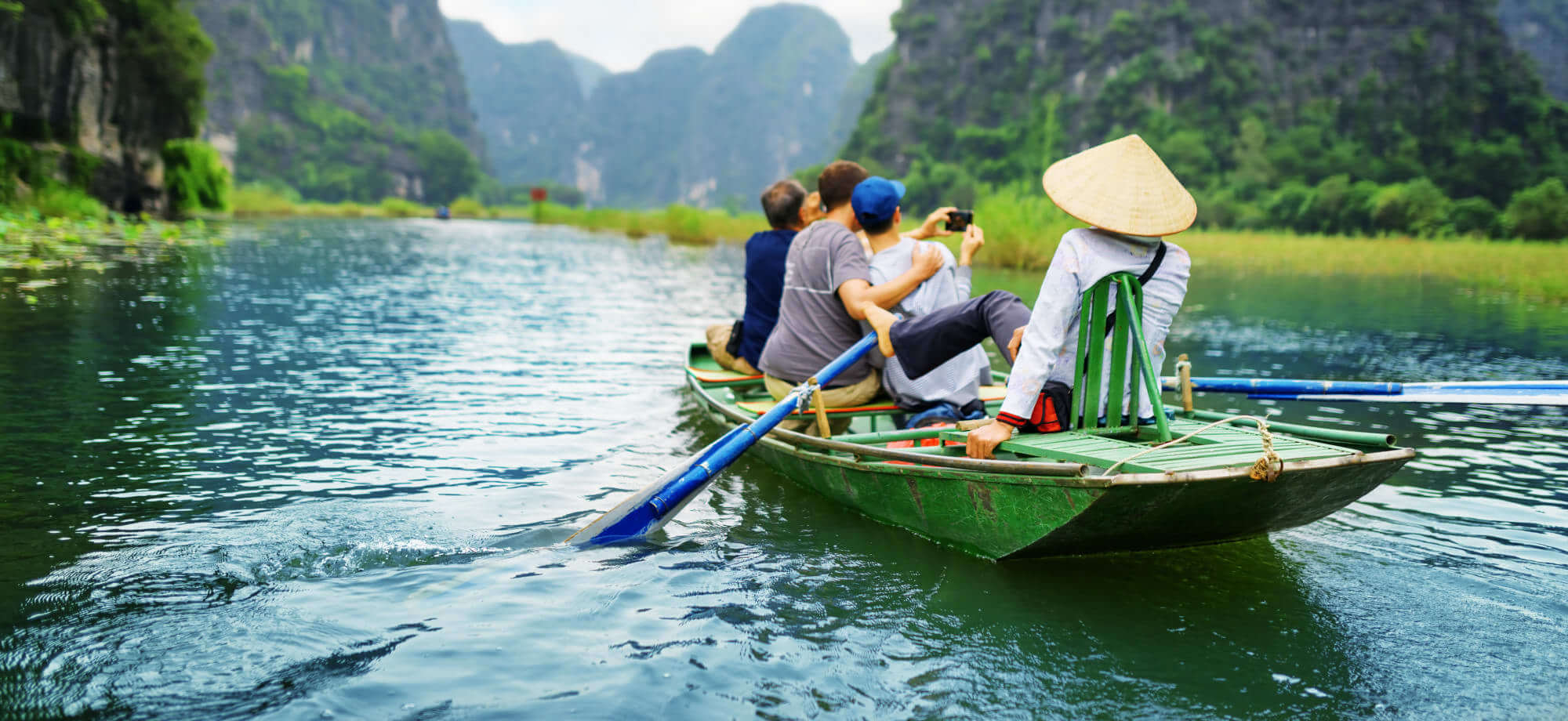
Responsible Travel Guide: Vietnam
July 28, 2023
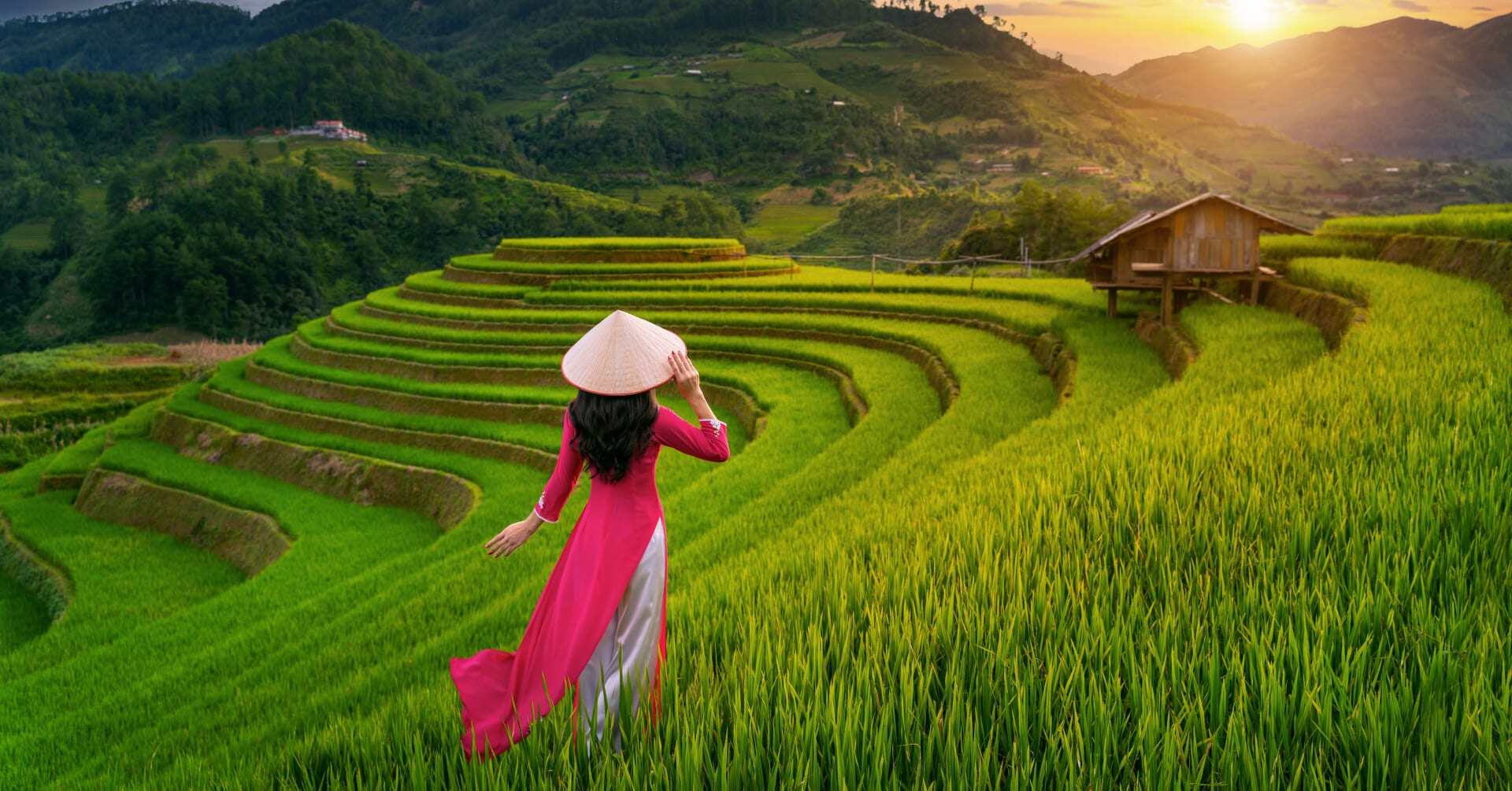
April 14, 2023
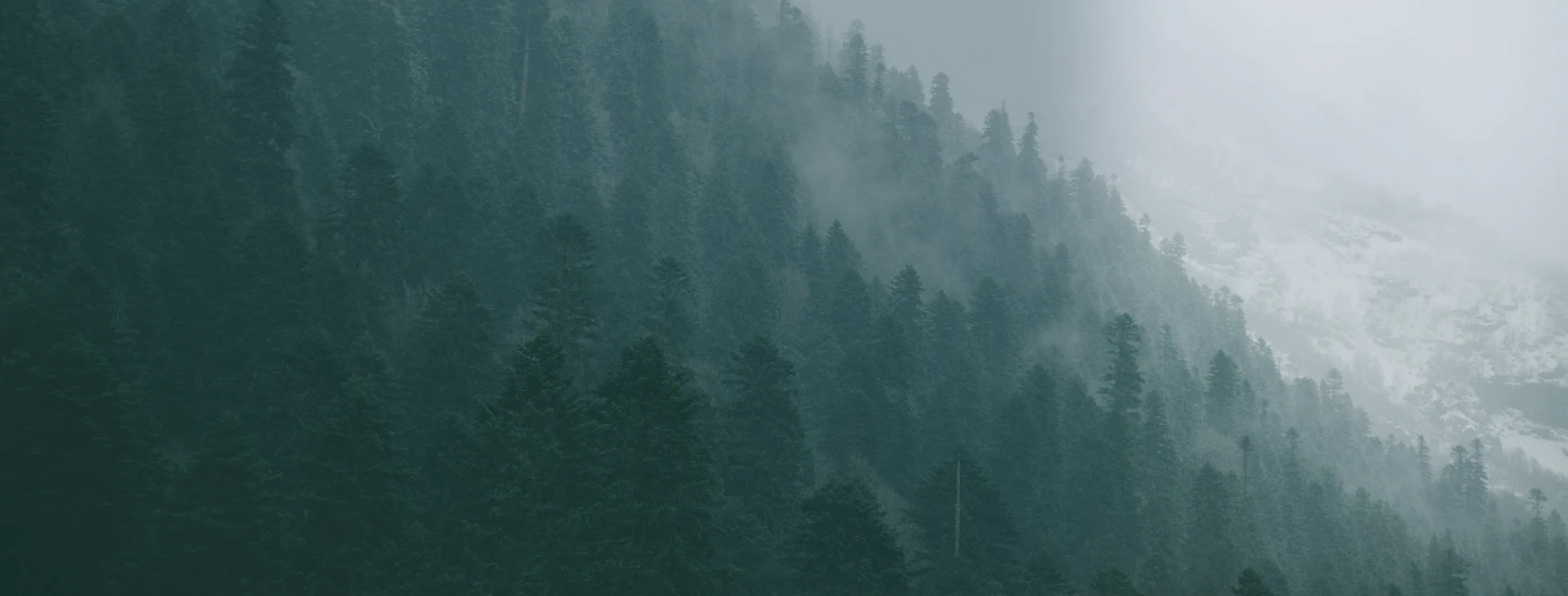
Sign up to our newsletter
For more travel inspiration delivered straight to your inbox just fill in your details here
Exploring Vietnam’s Most Epic Natural Wonders
Vietnam is one of the most popular tourist destinations in the world because it has so much to offer. Besides beautiful cities and rice paddies, the country features some of Earth’s most breathtaking natural treasures. From wildlife-rich national parks to breathtaking limestone peaks, this country is a must-visit for all nature lovers.
One of the highlights of Vietnam’s natural wonders is its national parks. These protected areas are like magical kingdoms, home to a diverse range of wildlife and breathtaking landscapes. Imagine trekking through dense forests, hearing the calls of exotic birds, and spotting monkeys swinging from tree to tree. Vietnam’s national parks offer incredible opportunities to immerse yourself in the beauty of nature, away from the hustle and bustle of city life.
In this article, we’ll explore some of the most beautiful places in Vietnam that should be on your bucket list.
Vietnam’s National Parks and Landscapes Explored
Ha long bay.

Ha Long Bay is probably one of Vietnam’s most popular tourist attractions. This area features several limestone mountains protruding from a calm, blue sea, making it attractive.
Most people like visiting this area since it offers a perfect spot for outdoor activities. One of the things you’re likely to take pleasure in is kayaking through the bay’s imposing karst islands as you enjoy the up-close view of the spectacular terrain. This area also boasts challenging and scenic routes, perfect for rock climbing and hiking .
You can also take a boat tour across Ha Long Bay to enjoy the stunning scenery. Additionally, you’ll get an opportunity to visit some of its limestone islands, such as the well-known “Surprise Cave,” known for its enormous stalagmites and stalactites. A boat tour can be a day excursion or an overnight trip where you get to sleep on the boat and witness amazing sunrises and sunsets.
Besides the breathtaking landscape and exciting outdoor activities, Ha Long Bay has a rich cultural history, and it was even designated a World Heritage Site by UNESCO. The bay and its adjacent islands feature indigenous fishing communities with a unique culture and have lived there for centuries. Visiting the region allows you to experience the cultural heritage of other communities and learn new things.
Mui Ne Sand Dunes

Mui Ne is conveniently located on Vietnam’s south-central coast. This area features huge white and red sand dunes. The “white dunes” lie on the northeastern portion of the main strip, while the “red dunes” are to the north.
Mui Ne sand dunes cover a wide area, offering an ideal hand or foot sandboarding spot. These dunes also have slopes with varying steepness for leisurely or adrenaline-pumping rides, depending on your skill level or personal preference. Try “dune bashing” on a quad bike to make things more interesting.
If you want more fun, visit the dunes late in the afternoon or early evening. This allows you to see the breathtaking colors as the sun sets over the desert environment. Remember to pack enough water and sunscreen since the dunes can get extremely hot.
Ba Be National Park

Ba Be National Park should be at the top of your list when choosing the places to visit during your trip to Vietnam. Located in the country’s mountainous northern region, it is centered around Ba Be Lake, the largest natural freshwater lake in the country.
Ba Be National Park boasts some of Vietnam’s most spectacular and diverse terrain, including steep limestone mountains, large valleys, and caves. This area also contains waterfalls, lakes, and green forests with a wide range of unique plants and animal species, making it an ideal destination for nature lovers.
The best way to enjoy the Ba Be National Park experience is by trekking or cycling through the forest. You can also go kayaking or hiking, depending on your preference.
Cuc Phuong National Park

Cuc Phuong National Park is a very old and special place in Vietnam. It is located in the northern part of the country and has many beautiful things to see. The park has big forests with tall trees and colorful plants.
You can find many different animals there, including some very rare ones like the Delacour’s langur. It is a leaf-eating monkey that is native to the forests of northern Vietnam. It is known for its striking appearance, with black fur covering most of its body and a white face.
People who love nature can go on guided walks in the park to explore and enjoy the peacefulness of the jungle. Cuc Phuong National Park is a great place to see and learn about Vietnam’s amazing plants and animals.
Hang Son Doong Cave

Hang Son Doong Cave, also known as Mountain River Cave, is the biggest cave in South East Asia and the entire world. It’s more than 660 ft tall, 16,400 ft long, and 500 ft wide in numerous spots.
Hang Son Doong Cave was discovered by Ho Khanh, a hunter from a jungle settlement in the early 1990s, making it one of the latest discoveries in the region. In 2009, he led some British explorers to the cave, and they were amazed at how big it was, declaring it the largest in the world.
In 2013, the cave was opened for tourists worldwide, provided they have a valid Vietnam evisa . Since then, Hang Son Doong Cave has become a popular destination for tourists worldwide. Therefore, you have to book in advance before visiting the area.
One of the things that attracts people to this cave is the massive caverns with a unique setting, including rivers and forests. It also has unusual “doline” formations, which are enormous sinkholes created by erosion and tall stalagmites and stalactites.
Exploring the Hang Son Doong Cave is physically engaging. You’ll be required to wade through underground rivers and walk through the jungle. Therefore, you have to be physically fit. Also, you have to know how to swim. Spend at least four days in the cave so you can explore many spots.

Tam Coc, also known as “Ha Long Bay on land,” s located in Ninh Hai Commune, Hoa Lu District, Ninh Binh Province. This place is about 62 miles from Hanoi, making it easily accessible. The best way to reach Tan Coc from Hanoi is through a shuttle or train.
This area features three caves, including Hang Ca, Hang Hai, and Hang Ba, formed millions of years ago due to cliff erosion. It’s part of the larger Trang An Scenic Landscape Complex UNESCO World Heritage Site that attracts tourists from around the world. Other features that make this region attractive are the stunning limestone cliffs, large valleys, and mountains covered in lush rainforest.
The best way to experience the beauty of Tam Coc is by taking a boat ride or hiking. When visiting, stop at specific points to take pictures and videos for future memories. If you visit during summer, start early in the morning since the area normally receives heavy rainfall in the afternoon, affecting your overall experience.
Mount Fansipan

Mount Fansipan, often known as “The Roof of Indochina,” is approximately 13 310 miles tall, making it the highest point in Indochina, comprising Vietnam, Laos, and Cambodia.
If you’re an adventure-seeker, Mount Fansipan is one of the best tourist attraction sites to visit when you go to Vietnam. As you climb to the highest point, you’ll enjoy viewing breathtaking views of the surrounding area. Additionally, the walk offers a rare chance to see endangered bird species, including:
- Plumbeous Water-Redstar
- Black-headed Greenfinch
- Golden Breasted Fulvetta
Mount Fansipan features rough terrain with extremely steep and slippery sections. Sometimes, during Winter, it even snows there . Therefore, you should prepare for the hike adequately by carrying the appropriate hiking gear. Also, ensure you learn about the mountain’s environment and history in advance and hire a local tour guide who knows the region well for safety reasons.
Mekong Delta

The Mekong Delta was formed when the massive Mekong was divided into nine rivers in southern Vietnam. This area is mainly characterized by miles of productive rice terraces and winding river canals. Additionally, it has a large mangrove forest with many bird species.
The best way to explore this region is by taking day tours to popular villages such as My Tho, Tre, and Cai Be. These villages are famous for their handicrafts, regional cuisine, and traditional music, offering a genuine experience of Vietnamese culture.
You can also leisurely boat ride along the river canals that pass through picturesque riverbank villages, floating markets, and Buddhist shrines. On lucky days, you may spot water buffalo grazing on the lush rice fields. Make a quick stop at the rice fields to observe traditional rice farming practices and expand your knowledge.
Dong Van Rock Plateau

Dong Van Rock Plateau is home to a number of geological and stratum heritages that bear witness to the evolution of the Earth’s crust over time. When you visit this area, you’ll be blown away by the untouched natural scenery.
Most areas are covered with snow-white plum blooms and bright yellow canola flowers, which normally bloom during spring. If you want to get the chance to experience the beauty of purple heart flowers, visit the area between October and November.
Other areas of the plateau are mainly covered by rice fields. When rice ripens during summer, the region turns into a beautiful golden-yellow hue. This phenomenon is often referred to as the “golden season” or “harvest season” in Vietnam.
Ban Gioc Waterfall

If you are looking for a beautiful place to visit, consider Ban Gioc Waterfall. It’s formed by the water flowing from Quay Son River, creating an impressive scenery for photography.
This tourist destination site is 187 miles away from Hanoi , making it accessible by bus or train. Alternatively, you can rent a car from various car rental providers for convenience and flexibility.
The best time to visit Ban Gioc Waterfall is between June and September. During this period, the area experiences rainfall, making the waterfall pour a lot of water. Ensure you reach the place by noon when the upstream dam is allowed to flow fully for a more exciting experience. Use a bamboo raft to get close to the waterfall and experience the spray of water on your face and enjoy an up-close view of the white foam created by the rushing water.
In the dry season, the waterfall has an entirely different vibe. The area is normally peaceful and quiet, and the golden rice fields at the waterfall’s base create a romantic scene, perfect for couples.
When is the best season to travel and visit Vietnam?

The best season to travel to Vietnam and explore its national parks and landscapes varies depending on the region and park you wish to visit.
In general, the dry season is often considered the ideal time for outdoor adventures and nature exploration. For the northern national parks, such as Cuc Phuong National Park, the best time is during spring (March to April) and autumn (September to November) when the weather is mild and pleasant.
In central Vietnam, the dry season from February to August is recommended for optimal conditions. Southern national parks and places like Miu Ne can be visited year-round due to the consistently warm climate.
Still, the dry season from December to April is preferable to avoid heavy rainfall.
Remember to check the specific weather patterns, park regulations, and yearly events beforehand to plan your visit accordingly and fully enjoy Vietnam’s magnificent national parks and landscapes.
Final Words

Vietnam features one of the best natural wonders on Earth, and some are yet to be discovered. These attraction sites offer the best endless opportunities for outdoor activities and allow you to appreciate the beauty of nature.
Ultimately, the choice of which national park to visit depends on your preferences and the region you plan to explore in Vietnam.
To get the best experience, ensure you plan your journey in advance and research everything you need to know about the country. Whether you’re an adventure seeker, a wildlife enthusiast, a hard-core foodie , or simply someone who appreciates the beauty of nature, Vietnam has something for everyone . So, get your Vietnam visa today and prepare for an epic journey ahead.

- Destinations
- Japan Guides
- Hiking Guides
- Gear Guides
- About/Contact
Top 10 Natural Wonders In Vietnam
- by Jonny Duncan
- October 31, 2023 November 5, 2023
These natural wonders in Vietnam, a country of breathtaking beauty and diverse landscapes, captivate the hearts and minds of travellers from around the world.
From the emerald waters of Halong Bay to the lush terraced rice fields of Sapa, Vietnam’s natural wonders offer a spectacular tapestry of sights and experiences.
Natural Wonders In Vietnam
Whether you’re a nature enthusiast, an adventure seeker, or simply someone in search of serene and picturesque surroundings, Vietnam’s natural wonders provide a stunning backdrop for unforgettable journeys and exploration.

Often referred to as the “Bay of Descending Dragons,” Halong Bay is renowned for its emerald-green waters and towering limestone karsts and islets and is easily one of the most famous natural wonders in Vietnam.
The bay covers an area of approximately 1,553 square kilometres and is home to nearly 2,000 limestone formations of varying sizes and shapes. The picturesque seascape creates a mesmerizing backdrop for cruises and other activities.
Halong Bay is best explored by taking a boat cruise. There are various types of cruises available, from luxury cruises to more budget-friendly options.
These cruises often include stops at caves, grottoes, and fishing villages, as well as opportunities for activities like kayaking and swimming.
Among the most famous caves are Sung Sot Cave (Surprise Cave) and Thien Cung Cave (Heavenly Palace Cave), which feature impressive stalactites and stalagmites.
Halong Bay is also home to several floating fishing villages where people live and work on the water. Visiting these villages gives you insight into the traditional fishing way of life in the bay.
Halong Bay is a must-visit destination for travellers seeking natural wonders in Vietnam.
Ninh Binh Province

Often referred to as “Halong Bay on land,” Ninh Binh features stunning karst formations and limestone caves. The Tam Toc and Trang An areas are particularly famous for their boat tours through this breathtaking scenery.
Ninh Binh’s most distinctive feature is its karst landscape, which is similar to that of Halong Bay. The region is characterized by towering limestone karsts, lush rice paddies, and winding rivers, creating breathtaking natural scenery.
Trang An, a part of Ninh Binh Province, is a UNESCO World Heritage Site. It is renowned for its karst formations, intricate cave systems, and serene waterways. You can take boat tours through the limestone caves, offering a unique and tranquil experience.
Tam Coc is famous for its karst formations, which you can explore by taking a boat ride along the Ngo Dong River. The boat trip passes through caves and takes you amidst the stunning natural scenery.
Located in Ninh Binh, Cuc Phuong is Vietnam’s oldest and one of its most important national parks. It’s known for its diverse flora and fauna, including a primate rescue centre and a turtle conservation program.
Ninh Binh’s scenic countryside is perfect for biking and hiking adventures. You can explore the rice fields and villages by bicycle or go trekking in the surrounding hills.
Ninh Binh is an ideal destination for travellers seeking natural beauty, cultural heritage, and outdoor activities.
Sapa Rice Terraces

The Sapa terraces located in North Vietnam are a testament to the ingenuity and hard work of the local ethnic minority communities and have made Sapa a popular destination for travellers seeking natural wonders in Vietnam.
The Sapa rice terraces are a series of stepped, hillside rice fields that stretch across the Hoàng Liên Son mountain range in northwest Vietnam. The terraces are known for their lush, green landscapes and stunning vistas.
The terraces are primarily used for the cultivation of rice, which is the staple food of the region. The local people use traditional farming methods and water buffalo to tend to the rice paddies.
Sapa is home to several ethnic minority groups, with the Hmong, Red Dao, and Tay people being the most prominent. These communities have been cultivating rice in the terraced fields for generations and have a deep connection to the land.
The beauty of the Sapa rice terraces varies throughout the year. In the spring, the fields are flooded and prepared for planting, creating a beautiful reflection in the water. In the summer, the fields are a vibrant green, while in the fall, they turn golden as the rice ripens.
Sapa is a popular destination for trekking and hiking enthusiasts. There are various trekking routes that take you through the terraced fields and offer opportunities to interact with local communities.
Sapa and its rice terraces are not only a stunning natural attraction in Vietnam but also a cultural gem, offering an authentic experience of rural life in Vietnam’s northern highlands.
Ban Gioc Waterfall

Ban Gioc Waterfall, also known as Detian Falls, is one of the most impressive and picturesque waterfalls in Southeast Asia.
It is located in the northeastern part of Vietnam, near the border with China, and it is often considered one of the most beautiful waterfalls in the region. Ban Gioc Waterfall is part of the Quay Son River, which serves as the natural border between the two countries.
The waterfall is known for its spectacular natural beauty. It is a massive, multi-tiered waterfall surrounded by lush greenery and dramatic limestone karsts. The sight of the cascading water against the backdrop of the karst formations is breathtaking.
Ban Gioc Waterfall is approximately 30 meters (98 feet) in height and has a width of about 300 meters (984 feet), making it the widest waterfall in Vietnam.
The waterfall’s appearance changes throughout the year. During the rainy season, from June to September, it is at its most powerful and dramatic, with strong currents and mist rising from the falling water. In the dry season, the waterfall may have multiple smaller streams and pools.
Cao Bang Province offers various other natural attractions, including Nguom Ngao Cave and the karst landscapes of the region. It’s an ideal destination for those interested in outdoor activities, such as trekking and exploring caves.
Mekong Delta

The Mekong Delta, often referred to as the “Rice Bowl” of Vietnam, is a vast and fertile region in the southern part of the country.
It is a complex network of waterways, lush green fields, and vibrant communities, making it one of the most unique and important areas in Vietnam.
The Mekong Delta is formed by the Mekong River as it flows into the South China Sea. It covers a vast area, including 12 provinces and one municipality, and has a complex network of rivers, canals, swamps, and islands.
The Mekong Delta is the agricultural heart of Vietnam. It is responsible for producing a significant portion of the country’s rice, fish, and various fruits and vegetables. The fertile soil and abundant water supply make it an ideal location for agriculture.
Life in the Mekong Delta revolves around the water. Many of the locals live in traditional houses on stilts and rely on boats and canoes for transportation. The waterways serve as both highways and a source of livelihood.
The Mekong Delta is famous for its floating markets, where boats and canoes serve as both shops and homes for traders. These markets are bustling with activity, selling fruits, vegetables, seafood, and more.
The Mekong Delta offers opportunities for eco-tourism, including boat tours, cycling, and homestays in traditional villages. You can explore the unique landscapes and experience the local way of life.
The region is also known for its diverse flora and fauna. It is home to many bird species, and the Can Tho Catfish, a critically endangered species, can be found in the Mekong River.
The Mekong Delta is a fascinating and vibrant region that offers a unique glimpse into the agricultural, cultural, and natural richness of Vietnam and is a must-visit area for exploring the natural wonders of Vietnam.
Mui Ne Sand Dunes

Mui Ne Sand Dunes, also known as the Mui Ne Red Sand Dunes and White Sand Dunes, are natural attractions located in the coastal town of Mui Ne, in the Binh Thuan Province of Vietnam.
Mui Ne is a popular coastal resort town situated in the southeastern part of Vietnam, roughly 200 kilometres (124 miles) east of Ho Chi Minh City.
The Red Sand Dunes are located closer to Mui Ne town and are known for their reddish-brown colour. They are particularly striking during sunrise and sunset when the sunlight casts beautiful hues on the sand.
The White Sand Dunes are located further away from Mui Ne and are known for their bright white sand. They are larger and cover a larger area compared to the Red Sand Dunes.
Both sets of dunes offer breathtaking views of the surrounding landscape. The stark contrast between the golden sand dunes and the lush greenery of the nearby Lotus Lake is particularly captivating.
The Lotus Lake is an oasis located near the White Sand Dunes. The contrast between the sparkling blue water and the surrounding white sands is visually striking, and the lotus flowers in the lake add to the scenery’s charm.
The Mui Ne Sand Dunes are a unique natural wonder in Vietnam, providing a stark contrast to the country’s lush landscapes and coastal beauty.
Phong Nha-Ke Bang National Park

Phong Nha-Ke Bang National Park is a UNESCO World Heritage Site located in Quang Binh Province in central Vietnam. It is renowned for its remarkable karst landscapes, extensive cave systems, and rich biodiversity.
The park is characterized by its limestone karst formations, which have been eroded over millions of years to create a unique landscape of hills, caves, and underground rivers.
Phong Nha-Ke Bang is home to some of the world’s largest and most magnificent cave systems. The most famous is Son Doong Cave , which is the largest cave on Earth by volume.
Son Doong Cave is one of the most iconic features of the park. It was only discovered in 2009 and is known for its enormous chambers, underground jungles, and a river running through it. It’s a challenging and sought-after destination for cave exploration.
Other notable caves include Hang En, Paradise Cave, and Phong Nha Cave. These caves are a paradise for caving enthusiasts and explorers.
The park is rich in biodiversity, with numerous species of plants and animals. It’s home to many rare and endangered species, including the Saola, a critically endangered forest-dwelling mammal.
Paradise Cave is famous for its intricate and extensive cave formations. It’s easily accessible and well-lit, making it a popular attraction if you want to explore a beautiful underground world without the more strenuous trekking required for some of the larger caves.
Phong Nha-Ke Bang National Park is a fantastic destination for outdoor enthusiasts. There are many opportunities for trekking, hiking, and biking in and around the park, allowing you to explore the lush landscapes and local villages.
The park is committed to sustainable tourism practices, with efforts to protect the environment, wildlife, and local communities. Visitation to some areas of the caves is restricted to minimize the impact on the delicate ecosystems.
The dry season is generally the best time to visit, as the caves are more accessible and the weather is more favourable for outdoor activities.
Phong Nha-Ke Bang National Park is a must-visit destination for nature lovers, adventure seekers, and those interested in the wonders of cave systems.
Phu Quoc Island

Phu Quoc Island, located in the Gulf of Thailand, is the largest island in Vietnam and is known for its stunning natural beauty, white sandy beaches, and relaxed tropical atmosphere.
Over the years, it has become a popular tourist destination, drawing visitors with its picturesque landscapes and a range of recreational activities.
The island is famous for its pristine beaches with soft, white sand and clear turquoise waters. Some of the most popular beaches include Long Beach (Bai Truong), Sao Beach (Bai Sao), and Ong Lang Beach.
Phu Quoc offers excellent opportunities for snorkelling and scuba diving. The waters around the island are teeming with marine life, colourful coral reefs, and shipwrecks. There are several diving schools and operators on the island.
Phu Quoc is home to two national parks: Phu Quoc National Park and Kien Giang Biosphere Reserve. These parks offer hiking and trekking opportunities through lush forests, and you can spot various wildlife and plant species.
Explore traditional fishing villages on the island, where you can observe daily life, buy fresh seafood, and take boat trips to fish in the surrounding waters.
Phu Quoc is one of the more beautiful and relaxed places to visit out of these natural wonders in Vietnam.
Cat Ba Island

Cat Ba Island is the largest island in Halong Bay and is known for its stunning natural beauty, rugged landscapes, and a mix of outdoor activities and relaxation.
Cat Ba Island is adjacent to the more famous Halong Bay, but it is separated from the latter by the smaller Lan Ha Bay. The island and its surrounding waters offer similar scenic karst landscapes, limestone formations, and emerald waters.
The island is home to Cat Ba National Park, which covers nearly half of Cat Ba Island’s area. The park features lush forests, hiking trails, caves, and diverse wildlife. The park’s highest peak, Ngu Lam Peak, offers panoramic views of the island and Lan Ha Bay.
Cat Ba Island is a paradise for outdoor enthusiasts. You can enjoy activities such as hiking, rock climbing, cycling, kayaking, and snorkelling. The island’s rugged terrain provides ample opportunities for adventure.
Cat Ba Island has several beautiful beaches, including Cat Co Beach 1, Cat Co Beach 2, and Cat Co Beach 3, which are easily accessible from Cat Ba Town and offer opportunities for swimming and relaxation.
Monkey Island, located near Cat Ba, is home to a colony of wild macaque monkeys. You can take a short boat ride to the island and observe the monkeys in their natural habitat.
The Cat Ba Archipelago includes not only Cat Ba Island but also numerous smaller islands and islets, making it an ideal place for island-hopping and exploration.
Phan Xi Păng (Fansipan)

Phan Xi Păng, often referred to as Fansipan, is the highest peak in Vietnam and the entire Indochina Peninsula. It is located in the Lào Cai Province in the northern part of the country, near the border with China.
Fansipan is a popular destination for trekking and adventure enthusiasts, offering stunning natural beauty and the opportunity to conquer the highest point in the region.
Fansipan is part of the Hoàng Liên Son mountain range in the Lào Cai Province, not far from the town of Sapa. It stands at 3,147.3 meters (10,326 feet) above sea level.
The trek to Fansipan’s summit is one of the most challenging and rewarding adventures in Vietnam. There are multiple routes to the top, varying in difficulty and duration.
The most common and less strenuous route is the Tram Ton Pass trail, while the more challenging and steeper route is the Sin Chai trail.
The trek to Fansipan offers breathtaking views of the surrounding landscapes, including terraced rice fields, dense forests, and the Hoàng Liên Son mountain range. The summit provides panoramic vistas of the region.
If you prefer a less strenuous way to reach the summit, there is a cable car system known as the Fansipan Legend, which was opened in recent years. It’s one of the world’s longest and highest cable car routes, providing convenient access to the top.
Fansipan is considered the “Roof of Indochina,” and its summit holds cultural and spiritual significance for local ethnic minority communities. Trekkers often encounter Hmong and Dao people living in the region.
The weather on Fansipan can be quite unpredictable, with colder temperatures and occasional rain even during the dry season. You should be prepared for varying weather conditions.
It’s important to note that trekkers need to register and obtain permits before ascending Fansipan, and it’s advisable to hire local guides who are familiar with the terrain.
Fansipan is not only a challenging trekking destination but also a place of immense natural beauty and cultural significance.
These natural wonders in Vietnam showcase the country’s astonishing variety of landscapes, from coastal beauty to mountainous grandeur, and they offer an incredible array of experiences for travellers looking to explore the outdoors and marvel at the wonders of nature.
There are plenty of natural wonders in Vietnam to see but these are the main ones you should plan to visit.
For more on Vietnam take a look at this article about Hue and Hoi An .
Share these natural wonders in Vietnam:

Related Posts:

Keep in the loop with an occasional email of my latest and updated travel guides.
You have successfully subscribed, leave a reply.
Your email address will not be published. Required fields are marked *
This site uses Akismet to reduce spam. Learn how your comment data is processed .

Pin It on Pinterest

19 of the Most Beautiful Places to Visit in Vietnam
Disclosure: This article contains affiliate links, meaning when you make a purchase, I earn a small commission. Affiliate links cost you nothing to use, and help keep my content free. It’s a win-win! For more information see the Disclosure Policy .
So, you’re thinking about exploring Vietnam, but you’re not quite sure where to start?
Do you go north? Do you go south? Can you cover the whole country in the time you have?!
So many questions! Luckily, I have the answers.
With so many stunning places, planning your trip can feel a bit overwhelming. But fear not because I’m here to give you a little inspiration on Vietnam’s most beautiful spots.
I have been living in Vietnam for the last 7 years and have explored Vietnam from top to bottom. I have seen some pretty sweet spots, and still have so much more to uncover!
Before you start packing your bags and daydreaming of pho and banh mi, let’s talk about making your trip truly spectacular.
So, why do travelers flock to Vietnam? Here’s the lowdown:
Beaches and Coastline: With over 3,000 kilometers of coastline, Vietnam is an excellent spot for beach lovers, offering everything from secluded coves to beachside resorts.
Rich History: The history of Vietnam is a saga of ancient empires, colonial influences, and a resilient spirit. This rich heritage is alive in every city alley and ancient ruin.
Natural Beauty: From the limestone islands of Halong Bay to the landscapes of Phong Nha-Ke Bang National Park, Vietnam’s natural wonders are UNESCO-acknowledged and truly incredible.
Culinary Adventures: Vietnamese cuisine is a reason all on its own to visit. The food here is some of the best in the world , particularly the street food.
Why does all this matter?
Understanding what makes Vietnam so special will not only make your trip better, but ensure you’re investing your time in experiences that click with you.
By the time you finish reading this article, you will have a much better concept of the places to go around Vietnam.
Below are 19 of the most beautiful places to visit in Vietnam that you might want to add to your itinerary.

Sapa sets itself apart with its unique blend of nature and culture up in the northern highlands.
Sapa is a must-visit in Vietnam for a couple of solid reasons. It’s got a cool mix of beautiful landscapes and a chance to hang out with local ethnic groups.
It’s not just another pretty place; it’s where you can get off the beaten track, trek through rice terraces, and actually learn something about the country’s culture straight from the people who make it what it is. If you want to see what Vietnam is really about beyond the cities, Sapa’s where it’s at.
Why Visit Sapa?
1. Rice Fields and Scenery
The rice terraces in Sapa are something else. You never know what you might see, in fact, once in the rice fields of Sapa I got to watch a goat give birth! They’re not just nice to look at, but also tell a story of the local communities, the Hmong and Dao, who have lived and worked this land for generations.
2. Local Cultures
Sapa is a melting pot of Vietnam’s ethnic minority groups. The markets, traditional clothing, and festivals offer a look into a way of life that’s deeply connected to this region. Engaging with these communities offers an authentic peek into their traditions and way of life.
3. Adventure
For those looking for a bit of adventure, Sapa delivers with options to climb Fansipan (Vietnam’s highest mountain), explore waterfalls, and go on treks.
A Little Advice Before You Go:
When you are in Sapa, take it slow and appreciate the small moments. You will see things in Sapa that you won’t see in other places in Vietnam.
That being said, it is extremely touristy . The main city seems to be overflowing with tourists and locals trying to sell knick-knacks. Keep that in mind when you are there.
Planning A Visit To Sapa
A trip to Sapa doesn’t require an elaborate plan, but being a little prepared can help. Whether venturing out on your own or joining a guided trek, dressing for the cooler, misty weather is key. For more information on traveling to Sapa – check out this article.
HA LONG BAY

Ha Long Bay is definitely a spot you can’t skip when you’re mapping out your Vietnam journey. Here’s why it stands out as a top destination and one of the most beautiful places to visit in Vietnam.
Why Visit Ha Long Bay?
- Iconic Seascapes: Those towering limestone karsts and isles spread out across the bay aren’t just cool to look at; they’re literally what postcards are made of. Cruising through these waters gets you up close to some seriously epic natural architecture.
- Adventure and Chill: Whether you’re up for some adventure like kayaking and exploring caves or just want to chill on a cruise deck and take in the view, Ha Long Bay has you covered.
- Cultural Vibes: Beyond the natural beauty, there’s a chance to see some local life on the floating villages and get a taste of the region’s seafood.
Halong Bay Travel Advice
Here’s the Thing about visiting Ha Long Bay…
Ha Long Bay is one of those places that you hear about and think, “It can’t be that cool, can it?” But then you get there, and it’s like, “Okay, yeah, this is pretty amazing.”
It’s a blend of adventure, relaxation, and sheer natural beauty that you don’t find just anywhere.
All of that does come with a price. It is probably the most visited and most touristy place in Vietnam. Know that going in. Despite the fact that there are travelers everywhere, I still think every traveler to Vietnam should visit.
Planning a Visit to Ha Long Bay
Visiting Ha Long Bay doesn’t need a ton of planning, but picking the right cruise or tour can make a big difference. There are day trips from Hanoi if you’re tight on time, but an overnight stay on a boat is best for the full experience. Just make sure to check the weather and go for a reputable company to get the most out of it.
Book a Tour
BAN GIOC WATERFALL

Ban Gioc Waterfall is one of those spots in Vietnam that isn’t as widely known, but a place that you shouldn’t miss. Here’s the lowdown on why it’s a must-see:
This place is not your average waterfall. Sitting on the border between Vietnam and China, Ban Gioc is the largest waterfall in the country and easily one of the most impressive in all of Asia. It’s the kind of scene that makes you stop and think, “Wow, this is real.”
Why Visit Ban Gioc Waterfall
- Sheer Magnitude: First off, the sheer size and power of the falls are awesome. I, personally, just love a good waterfall.
- Get Close: Unlike some other famous waterfalls, you can get up close and personal with Ban Gioc. You can hop on a bamboo raft and float right up to the misty base of the falls.
- Peaceful and Less Crowded: Ban Gioc’s location, a bit off the usual tourist track, means it’s less crowded. It’s a place where you can actually hear the falls without the noise of too many tourists.
Planning Your Trip to Ban Gioc Waterfall
Getting to Ban Gioc does require some planning. It’s in the Cao Bang province, which is a bit of a ride from Hanoi, but totally doable as a part of a northern Vietnam trip. You might want to consider a guided tour to handle the logistics, especially to learn more about the area’s history and geography on your way there.

Ninh Binh, often referred to as the “Halong Bay on Land,” is a destination in Vietnam that deserves a spot on your travel list. Especially if you are sticking to an itinerary that keeps you around Hanoi.
Ninh Binh is filled with towering limestone karsts jutting out of green rice fields, all connected by rivers. It’s got a landscape that you usually only see in movies – and you did see Ninh Binh in movies . Kong: Skull Island and Pan were filmed in Ninh Binh!
Why Visit Ninh Binh
- Spectacular Scenery: Those limestone mountains are absolutely incredible to see. Even a simple boat ride feels like an adventure into the unknown.
- History and Culture: It’s not all about natural beauty. Ninh Binh is steeped in history, with ancient temples and the old capital of Hoa Lu offering a glimpse into Vietnam’s rich past.
- Active Exploration: Whether you’re biking through the countryside, rowing down the river, or hiking up to Mua Cave for panoramic views, Ninh Binh is a playground for the active traveler.
Planning Your Visit to Ninh Binh
A trip to Ninh Binh fits easily into your Vietnam itinerary , whether you’re looking for a day trip from Hanoi or a few days to really dive deep. Just a couple of hours from the city, it’s accessible but feels worlds apart. If you’re staying overnight, consider a homestay or local guesthouse to really soak in the vibes of the area.
HA GIANG LOOP

The Ha Giang Loop, winding through Vietnam’s northernmost province, is an adventure that should be on every traveler ‘s itinerary. It is one of my favorite experiences in all of Vietnam, and I recommend it to everyone who visits!
Heading off on the Ha Giang Loop is like entering a different world. This route takes you through landscapes that are dramatic and vast. You’ve got winding roads hugging mountain sides, and overlooking valleys that seem to stretch forever.
Why Visit the Ha Giang Loop?
- Mind-Blowing Landscapes: The Loop takes you through some of the most spectacular scenery Vietnam has to offer.
- Cultural Immersion: Traveling the Loop, you’ll explore markets and villages of the Hmong, Tay, and Dao people. It’s a chance to see a way of life different from other parts of Vietnam.
- Adventure at Every Turn: Ha Giang is for those who like a bit of a challenge. Whether you’re navigating the twisty mountain roads by motorbike or trekking to remote villages.
Planning Your Trip on the Ha Giang Loop
Tackling the Loop is doable whether you’re on a tight schedule or have a bit more time to explore. Most start from Ha Giang city, and you can take anywhere from 3 to 5 days (or more) to really take it all in. Renting a motorbike is the way to go for the freedom to stop and soak in the views, but there are also guided tours for those who’d prefer an expert lead.
HOI AN ANCIENT TOWN

Hoi An is an UNESCO Heritage site, and has well-preserved architecture, cute lantern-lined streets, and the Thu Bon River flowing through it all. This place has managed to retain its charm and heritage even while other places are rapidly changing.
Why Visit Hoi An Ancient Town?
- Beauty: The ancient streets of Hoi An, with their mix of influences from China, Japan, and France, are beautiful! If you like to take pictures, this is a great place to do it.
- Culture: Beyond its beauty, Hoi An offers a deep cultural experience. From traditional art forms like lantern making to the famous Japanese Covered Bridge.
- Food: Hoi An has local specialties like Cao Lau and Banh Mi that are as delicious as they are unique to the town.
Planning Your Visit to Hoi An
Putting Hoi An into your Vietnam itinerary is easy, whether you’re coming from the north or the south. The town is accessible and compact, perfect for exploring on foot or by bike. Giving yourself a few days here allows you to soak in the atmosphere, especially if you can catch the lantern festival that happens monthly on the full moon.
Hoi An is one of the most popular tourist destinations in Vietnam. Sometimes I visit and think – “ah! There are so many travelers here.” But it really is a cool little town, so it makes sense that it is so popular! If you want to avoid all of the tourists, you can stay in Da Nang and head over to Hoi An on day trips, as it is only a 20-30 minute drive.
PHONG NHA CAVES

Phong Nha Caves, in Quang Binh Province, is a must-visit for anyone heading to Vietnam, especially if you’re into adventure.
Heading into Phong Nha Caves is literally like stepping into another world. This UNESCO World Heritage site has some of the most impressive caves in the world. It is home to Son Doong Cave, the largest known cave on earth.
Why Visit Phong Nha Caves
- Amazing Cave Experiences : These aren’t your average caves. They’re huge, filled with fascinating rock formations, and in some cases, you can take a boat right through them.
- Loads of Activities : Phong Nha is perfect for more than just caving. You can kayak, trek, and even chill at the nearby beach Dong Hoi. It’s ideal for anyone who likes to stay active and try different things.
- History and Nature: There’s a lot to learn and see beyond the caves. The Phong Nha-Ke Bang National Park is not only a spot with a significant war history but also a place with unique wildlife and plants.
Planning Your Trip to Phong Nha
Adding Phong Nha to your itinerary is something you’ll be glad you did. It’s a bit of a journey from Hue or Danang, but completely doable and totally worth it. Giving yourself a couple of days here means you can dive deep into exploring the caves and maybe take on a couple of treks.
Phong Nha is becoming more and more popular on the tourist trail, but it isn’t so, so popular yet. There is still a bit of a mysteriousness knowing that many travelers from outside of Vietnam still haven’t made it here.
If you want to go on a multi-day trek into Son Doong Cave, you will need to book well in advance. It is also not a cheap experience. There is only one company, Oxails Adventures , that makes their way into the cave. I know a handful of people who have done it and they have nothing but high praises. The money was well spent.
MEKONG DELTA

The Mekong Delta is a region that offers a glimpse into the lifeblood of Vietnam, where the Mekong River winds its way to the sea through a network of tributaries and islands.
Visiting the Mekong Delta puts you straight into a world where water is at the center of everything. It’s a place of lush landscapes, floating markets, and communities that have adapted to life on the water. Here, the pace of life flows with the river, offering quite the contrast to Vietnam’s cities.
Why Visit the Mekong Delta
- Unique Culture and Lifestyle: Life in the Delta is unique, with floating markets, stilt houses, and boats of all shapes and sizes. It’s a chance to see a different side of Vietnamese culture , closely tied to the river.
- Diverse Ecosystems: Beyond its cultural richness, the Delta is home to diverse ecosystems, including mangroves and wetlands that are full of wildlife. Bird watchers and nature lovers can find plenty to explore.
- Culinary Experiences: The region’s cuisine is fresh, with seafood playing a big role. Trying local specialties, especially at a floating market, is a must-do.
Planning Your Trip to the Mekong Delta
Incorporating the Mekong Delta into your trip is a smart move. If you are coming from HCMC, it’s accessible for a day trip. But it’s worth spending a few days if you have the time.
HAI VAN PASS

The Hai Van Pass, separating Da Nang and Hue, is a road trip that should definitely be on your Vietnam itinerary.
It is one of my favorite drives in all of Vietnam.
Riding or driving the Hai Van Pass throws you right into one of Vietnam’s most scenic routes. It’s a stretch of road where every turn gives you a view of the ocean or mountains.
Why Drive the Hai Van Pass
- Epic Views: The views from the Hai Van Pass are hard to beat. You’ve got the South China Sea on one side and mountains on the other. It’s the kind of place where you want to keep pulling over just to take it all in.
- A Sense of Adventure: Whether you’re biking, motorcycling, or driving, the Hai Van Pass adds a real sense of adventure to your trip. It’s about 21 kilometers of winding roads.
- Historical Significance: The pass has played an important role throughout Vietnam’s history, serving as a strategic military lookout and dividing line between ancient kingdoms.
Planning Your Trip over the Hai Van Pass
Incorporating the Hai Van Pass into your Vietnam trip is a great choice whether you’re making your way between Da Nang and Hue or looking for a day trip from Da Nang. If you’re not up for driving or riding yourself, there are plenty of tours that let you experience the pass from the comfort of a passenger seat or back of a motorbike.
BEACHES OF PHU QUOC

This lesser known island in the southernmost part of Vietnam has some of the best beaches in the whole country. The sand is clean, the water’s clear, and it’s all pretty laid-back.
Why Visit Phu Quoc’s Beaches
- Awesome Beaches: Seriously, the sand is super soft, and the water is so clear you can see your feet. Plus, there are enough beaches around that you can find your own spot easily.
- Water Activities: If you’re into snorkeling or diving, the coral reefs here are legit. Kayaking’s also an option if you want to stay on top of the water. Basically, if you like doing things in the ocean, you’re all set.
- Awesome Sunsets: Every evening, the sunsets on Phu Quoc are awesome. Grabbing a drink and watching the sky change colors is pretty much a perfect way to end the day.
Planning Your Trip to Phu Quoc
Getting to Phu Quoc is easy from any of the main hubs in Vietnam. Spend a few days or a whole week – it’s up to you. It’s the kind of place where you can kick back and forget about your worries for a while.
MUI NE SAND DUNES

Mui Ne’s sand dunes are something you might not expect to find in Vietnam. You’ve got these massive hills of sand right by the coast, making for some seriously cool landscapes. It’s like a little piece of the desert has just dropped into Southeast Asia.
Why Visit the Mui Ne Sand Dunes
- Unique Scenery: The dunes themselves are impressive. There are the White Dunes that are vast, rolling sands, and then there’s the Red Dunes that catch the light in amazing ways, especially at sunrise and sunset.
- Fun Activities: Ever tried sandboarding? You can here. There are also dune buggy rides over the red dunes. Mui Ne is also well known for it’s kiteboarding. There are lots of kiteboarding schools/classes you can join
- Photo Ops: For anyone into photography, the dunes are a cool spot to come. The way the light plays with the shapes of the sand makes for some epic shots.
Planning Your Visit to the Mui Ne Sand Dunes
Heading to Mui Ne is easy from anywhere in the south. You can get a private car or bus from HCMC or Da Lat. If you’re coming from the north, there are direct flights to Mui Ne from Hanoi.
The Mui Ne Sand Dunes offer something a bit different and are a fun way to experience the natural beauty of Vietnam.
CAT TIEN NATIONAL PARK

Cat Tien National Park is a bit of an off the beaten path location that is perfect if you like nature and/or adventure.
It’s a protected area that is preserving the diverse ecosystems and wildlife of the region. There are dense jungles, and a chance to spot some wildlife that’s hard to find anywhere else in the country.
Why Visit Cat Tien National Park
- Diverse Wildlife: This park is where you can come to see wildlife like birds, reptiles, and even larger mammals like gibbons and the endangered Asian elephant.
- Jungle Treks and Trails: There are loads of trails and treks, ranging from easy walks to full-on multi-day hikes. It’s a great way to get up close with the natural beauty of the park and really disconnect from the hustle of everyday life.
- Conservation Efforts: Visiting Cat Tien is a chance to learn about and support conservation efforts in Vietnam. The park is a critical area for biodiversity and visiting helps support the work being done to protect these natural habitats.
Planning Your Trip to Cat Tien National Park
Getting to Cat Tien takes a bit of planning since it’s not right next to the major tourist spots, but it’s accessible from Ho Chi Minh City and other locations in southern Vietnam. You can do it in a day trip from HCMC, but is better if you have at least an overnight.
Just make sure to pack for the jungle – think bug spray, long sleeves, and good walking shoes.

Pu Luong is my go to spot to just get away from all of the busy-ness that makes up Vietnam’s cities. It is a spot that is not on the tourist trail at all. I only know of expats and local Vietnamese who go to Pu Luong.
It’s a place where you can truly connect with the natural beauty of Vietnam, with plenty of opportunities for trekking, cultural immersion, and simply unwinding in nature.
Why Visit Pu Luong
- Stunning Natural Scenery : The terraced rice fields and lush greenery of Pu Luong are incredibly beautiful. I can just sit at a guest house and look at nature all day.
- Trekking and Exploration: Whether you’re up for an easy walk or a challenging hike, Pu Luong has trails that deliver. It’s a chance to explore Vietnam’s rural beauty on foot, with paths leading you through small villages. In October the Vietnam Trail Running Series has their Vietnam Jungle Marathon here. Worth checking out if you’re a runner!
- Cultural Immersion: This area is home to ethnic Thai communities, offering a glimpse into a way of life that’s maintained its traditions over the centuries. Staying in a homestay and interacting with locals is a highlight, giving you a deeper understanding of the region’s culture.
Planning Your Trip to Pu Luong
Incorporating Pu Luong into your Vietnam adventure is a choice you’ll thank yourself for, especially if you’re looking to blend relaxation with a bit of outdoor activity. It’s relatively easy to reach from Hanoi, making it an ideal stop if you’re exploring Northern Vietnam.
GANH DA DIA

If you’re on the hunt for something truly unique in Vietnam, Ganh Da Dia is a spot that you might enjoy. It’s not your typical tourist destination, and here’s why it stands out:
Ganh Da Dia, located along the coastline of Phu Yen Province, offers a natural spectacle unlike any other. Thousands of basalt columns, neatly stacked next to each other as if meticulously arranged by hand, creating a mesmerizing landscape that looks almost otherworldly. This geological marvel is a rare sight, not just in Vietnam but globally, making it a must-visit for those intrigued by nature’s oddities.
I have never personally visited Ganh Da Dia, but when asking around about beautiful places to visit in Vietnam, this came up a lot!
Why Visit Ganh Da Dia
- Unusual Geological Formations: The main draw here is the sight itself – a vast expanse of tightly packed, hexagonal stone columns that stretch out into the sea. It’s a result of ancient volcanic eruptions.
- Off the Beaten Path: Ganh Da Dia isn’t as well-known as some of Vietnam’s other natural attractions, which means you can enjoy exploring without the crowds. It’s a peaceful place to take in the power and beauty of nature.
- Photographer’s Dream: For anyone who loves photography, this place is a goldmine. The contrast of the dark rocks against the blue sea and sky makes for some stunning shots, especially at sunrise or sunset.
Planning Your Visit to Ganh Da Dia
Adding Ganh Da Dia to your itinerary is a great way to see a different side of Vietnam. It’s a bit out of the way, in Phu Yen Province, but accessible by motorbike, car, or part of a guided tour from nearby cities like Quy Nhon or Nha Trang. Spending a few hours here is enough to explore and take in the sights, making it an easy addition to your travels through the country.
CON DAO ISLANDS

For those traveling through Vietnam and in search of an island getaway that combines natural beauty with history, the Con Dao Islands are worth a stop.
The Con Dao Islands offer a mix of stunningly clear waters, pristine beaches, and dense tropical forests, all wrapped up with an interesting history. Once known for their harsh prison camps during the French colonial era and the Vietnam War, today these islands stand as a quiet escape.
Why Visit Con Dao Islands
- Natural Beauty: The real stars here are the untouched beaches and the clear, turquoise waters that surround the archipelago. Whether you’re snorkeling, diving, or just soaking up the sun, the natural setting here is top-notch.
- Rich Historical Significance: Beyond the landscapes, Con Dao has a deep history. Visiting the old prison complexes offers a somber but important insight into the struggles faced here.
- Wildlife and Conservation: The islands are also a hotspot for biodiversity, with the chance to see rare species and efforts to conserve marine life. From turtle hatching programs to protected national park areas, it’s a great place for nature lovers.
Planning Your Visit to the Con Dao Islands
The Con Dao Islands have direct flights from Ho Chi Minh City and Hanoi. These islands are somewhat remote but entirely worth the effort. A few days here allow you to unwind, explore the natural and historical sites, and even engage with conservation efforts.
There are some very high end hotels on this island, like Six Senses Con Dao, where celebrities come to completely get away from it all. I have never stayed here, but it’s on my list!
DRIVE FROM DA LAT to NHA TRANG: THE ROUTE OF SEAS AND FLOWERS

Another one of my favorite drives in Vietnam is the drive from Da Lat to Nha Trang (or vice versa). I recently learned it is called the Route of seas and flowers.
DaLat is a cozy, cool-weather spot with its French colonial vibes in the hills. And Nha Trang is a sunny, busy beach town. It’s like getting the best of both worlds in one shot.
Why make the Road Trip
- The Views: You’ll cruise through pine forests, coffee plantations, and forests and then suddenly, you’re looking out at these open, beautiful coastal views.
- From Cool to Coastal: Starting off in the cool, laid-back atmosphere of DaLat and ending up in the warm, lively Nha Trang gives you a taste of the diversity Vietnam’s got to offer.
- Stops Along the Way: There’s no rush, right? Take your time. Pull over at a waterfall, grab a coffee from a roadside stand, and just soak it all in. The drive’s as much about these little moments as it is about getting to Nha Trang.
Planning Your Drive from Da Lat to Nha Trang
Throwing this drive into your Vietnam plans is easy, particularly if you are on a southern itinerary. I have done this route both on a motorbike and in a car, and the motorbike is just so much better! There are also tours that will take you. It is easily doable in a day. It is about 130km of driving, and should take 3-4 hours depending on how much you stop.
I also know people who have done this on a bicycle – another good adventure!
HO CHI MINH CITY

Ho Chi Minh City, or Saigon as it’s still affectionately known, is the southern heart of the country. It’s a place filled with energy and history and delicious foods and colonial architecture and motorbikes – so many motorbikes.

Why Visit Ho Chi Minh City
- Non-stop Energy: From the moment you step into the city you’ll feel how it’s alive, vibrant, and there’s always something happening.
- A Dip into History: The city’s got layers. Places like the War Remnants Museum and the Reunification Palace offer a glimpse into Vietnam’s recent past, while the Notre-Dame Cathedral Basilica of Saigon and the Central Post Office show its colonial heritage.
- Food!: The street food here is incredible. From pho and banh mi to more adventurous eats. The street food of HCMC is the same, but different to other parts of the country.
Planning Your Trip to Ho Chi Minh City
Whether you’re starting here to kick off your trip or winding down, the city’s got an international airport, making it super accessible. Give yourself a few days at least – there’s so much to see, do, and eat, you won’t want to rush it.
CAT BA ISLAND

If you’re mapping out your Vietnam adventure and love the idea of island vibes mixed with a bit of everything, then Cat Ba Island is a spot worth checking out.
Cat Ba Island is the largest in the Cat Ba Archipelago and has a combo of stunning natural landscapes, adventurous activities, and spots perfect for just chilling out.
It’s part national park, part adventure playground, and entirely beautiful.
Why Visit Cat Ba Island
- Natural Beauty: First off, the landscapes here are epic. Lush green hills, clear blue waters, and secluded beaches that make you feel like you’ve discovered your own private paradise.
- Outdoor Adventures: Whether you’re into rock climbing, kayaking, or just exploring caves, Cat Ba has you covered. The island is also a gateway to the rest of Halong Bay, so boat tours are a must.
- Eco-friendly Vibes: Cat Ba is big on conservation, with much of the island designated as a national park. It’s a place where you can enjoy Vietnam’s natural beauty and also respect it.
Planning Your Trip to Cat Ba Island
Cat Ba is accessible to get to, much more so now than it was 10 years ago when I went for the first time! It offers a variety of accommodations from chill hostels to nicer resorts, and can be a great base for exploring Halong Bay more broadly.
Spending a few days gives you enough time to explore what the island and surrounding waters have to offer.
THE OLD QUARTER OF HANOI

The final spot on my list of most beautiful places to visit in Vietnam is a destination that is near to my heart.
Hanoi’s Old Quarter is like stepping into a different era. Narrow streets crammed with shops, street vendors, and that unmistakable buzz of motorbikes weaving through. It’s where traditional Vietnamese culture meets modern life, and somehow, it all just works.
Even after 7 years of living here, I go to the Old Quarter (OQ as we call it) regularly just to get lost.
Why Visit Hanoi’s Old Quarter
- So Much Action: From the break of dawn till way past sunset, the Old Quarter is alive. Whether you’re hunting for the best pho, looking to shop, or just wanting to experience the atmosphere.
- History Around Every Corner: This place is drenched in history. There is ancient architecture, temples in between cafes, and streets that have seen generations come and go. It tells the story of Hanoi, all within a few square kilometers.
- The Food : I can’t talk up the street food enough. Eating your way through the Old Quarter is an adventure on its own. From local favorites to dishes you didn’t even know existed.
Planning Your Trip to Hanoi
Adding Hanoi’s Old Quarter into your itinerary is a no-brainer. It’s the heart of the city, easily accessible, and packed with accommodations. Give yourself a few days if you can; there’s so much to see, do, and eat, you won’t want to rush it.
FINAL THOUGHTS: MOST BEAUTIFUL PLACES TO VISIT IN VIETNAM
We’ve covered quite a bit in this guide, and I hope you’ve got a solid list of must-visit spots for your Vietnam adventure. Before we wrap up, there are a few key points I really want to highlight again:
- Vietnam is a country of incredible diversity. Each destination offers something unique, making a well-thought-out itinerary crucial to experiencing what you’re most excited about.
- Don’t rush through the cities and sites. Vietnam is rich in culture, history, and natural beauty, with plenty to see and do. Taking the time to really explore and appreciate these places will make your experience all the more rewarding.
- To make the most of your trip, looking into organized tours can be a huge time-saver. I’ve sifted through options to recommend some that offer genuine, quality experiences, often leaving from major cities and covering many of the highlights mentioned in this guide.
P.S. – Don’t forget to check out the “Vietnam in One Day” guide I mentioned. It comes with videos packed with insider tips. Give it a look – it’s a great way to kickstart your planning. (COMING SOON)
Katie McGrain is a Vietnam Trip Planning Expert. She has lived in Hanoi, Vietnam since 2017, and has explored just about every corner of this country. She provides female travelers to Vietnam with resources, ideas, and guides on where to go and what to do. Her on the ground research, planning and advising helps women have a safe, memorable and authentic trip to Vietnam.

21 of the Most Beautiful Places in Vietnam to Visit
Here is the ultimate list of the most beautiful places in Vietnam that you must visit. We are currently on a mission to visit all 58 provinces and tick off all the incredible sites each province has to offer. You can find all the best places to visit in Vietnam by region; north, central, and south. You will find popular backpacker hotspots and hidden gems mainly visited by locals. You will find everything from mountainous regions, and beach destinations, to cultural escapes.
The most beautiful places in Vietnam in the north
Northern Vietnam is blessed with stunning mountains, incredible nature, and unique culture. You will find plenty to keep you occupied for your journey in this region. Northern Vietnam has a total of 23 provinces. In this section, you will find the best provinces to visit, significant landmarks, and activities.
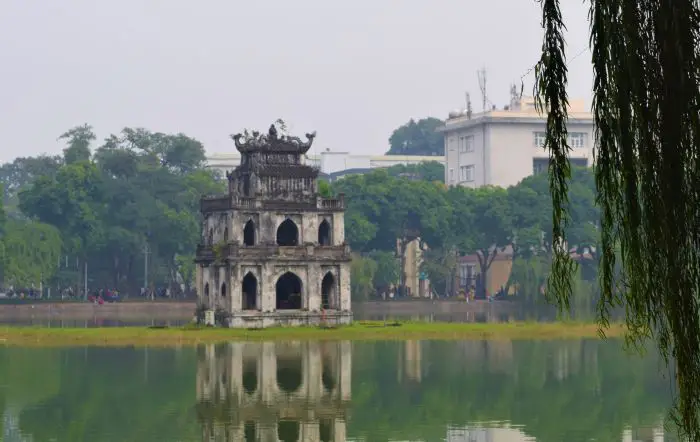
Disclosure: Wander Vietnam contains affiliate links. If you click on these links and make a purchase, we will earn a small commission at no extra cost to you. You can find our full disclosure policy and privacy policy here.
Hanoi, the capital city of Vietnam, is an enchanting destination with a rich history and vibrant culture. Hanoi is steeped in history, with landmarks and monuments that reflect its past. Make sure to visit The Temple of Literature, Ho Chi Minh Mausoleum, and Hoa Lo Prison. For charming lakes and green spaces, take a stroll around Hoan Kiem Lake, located in the heart of the city. Hanoi is also famous for its street food culture. Don’t miss the opportunity to try local dishes like pho (Vietnamese noodle soup), banh mi (Vietnamese sandwich), bun cha (grilled pork with noodles), and egg coffee. Make sure to explore the bustling street food markets like Dong Xuan Market or the Night Market , which are delightful experiences in themselves.
Recommended duration: 2 – 3 nights
Places to visit / landmarks: Temple of Literature, Ho Chi Minh Mausoleum, Hoa Lo Prison, Hoan Kiem Lake, Train Street.
Activities: Take a food tour, party in the Old Quarter
Accommodation: Acoustic Hotel & Spa or Nexy Hostel
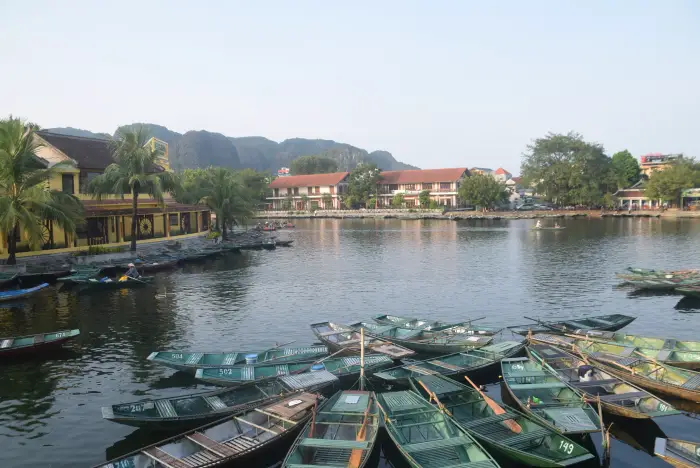
Ninh Binh is a beautiful province known for its stunning natural landscapes and rich cultural heritage. Ninh Binh is home to Trang An Landscape Complex, a UNESCO World Heritage Site. This area boasts a magnificent karst landscape with limestone cliffs, caves, and rivers, making it perfect for boat tours and exploring the stunning surroundings. As well as Trang An, visitors also opt to stay in the Tam Coc scenic area. Tam Coc is known as the “Halong Bay on land”. Tam Coc offers a breathtaking experience with its limestone caves, rice paddies, and serene river cruises. You can take a boat ride along the Ngo Dong River , passing through caves and admiring the surrounding scenery. For history enthusiasts, a visit to the ancient capital of Hoa Lu is a must. Experience the rich cultural heritage by exploring the ancient temples and learning about the fascinating history of Vietnam.
Recommended duration: 2 nights
Places to visit / landmarks: Trang An Landscape Complex, Tam Coc scenic area, Bich Dong Pagoda, Hoa Lu Ancient Capital, Bai Dinh Pagoda, Hang Mua Cave
Activites: Boat rides, cycle through the rice paddies, try the local speciality; goat meat
Accommodation: Hotel Tam Coc Golden Rice or The Banana Tree Hostel
Quang Ninh (Ha Long Bay)
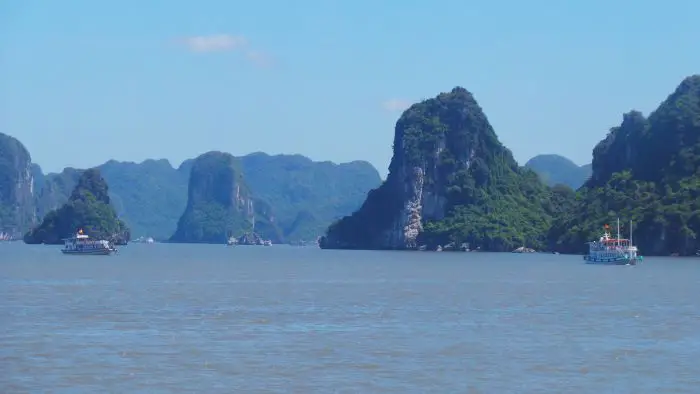
Quang Ninh Province is home to one of Vietnam’s most famous attractions; Ha Long Bay. Ha Long Bay, a UNESCO World Heritage site, is a place where nature’s artistry is on full display. It is a natural beauty of Vietnam. Picture yourself surrounded by thousands of limestone karsts and isles rising dramatically from the emerald waters, creating a captivating and ethereal landscape that feels like something out of a dream. For those seeking adventure, Ha Long Bay offers a plethora of exciting activities. Such as kayaking through hidden lagoons and discovering secluded beaches and secret caves.
Recommended duration: 2 days, 1 night on a Ha Long Bay cruise
Activites: Kayaking, relaxing, enjoying seafood treats
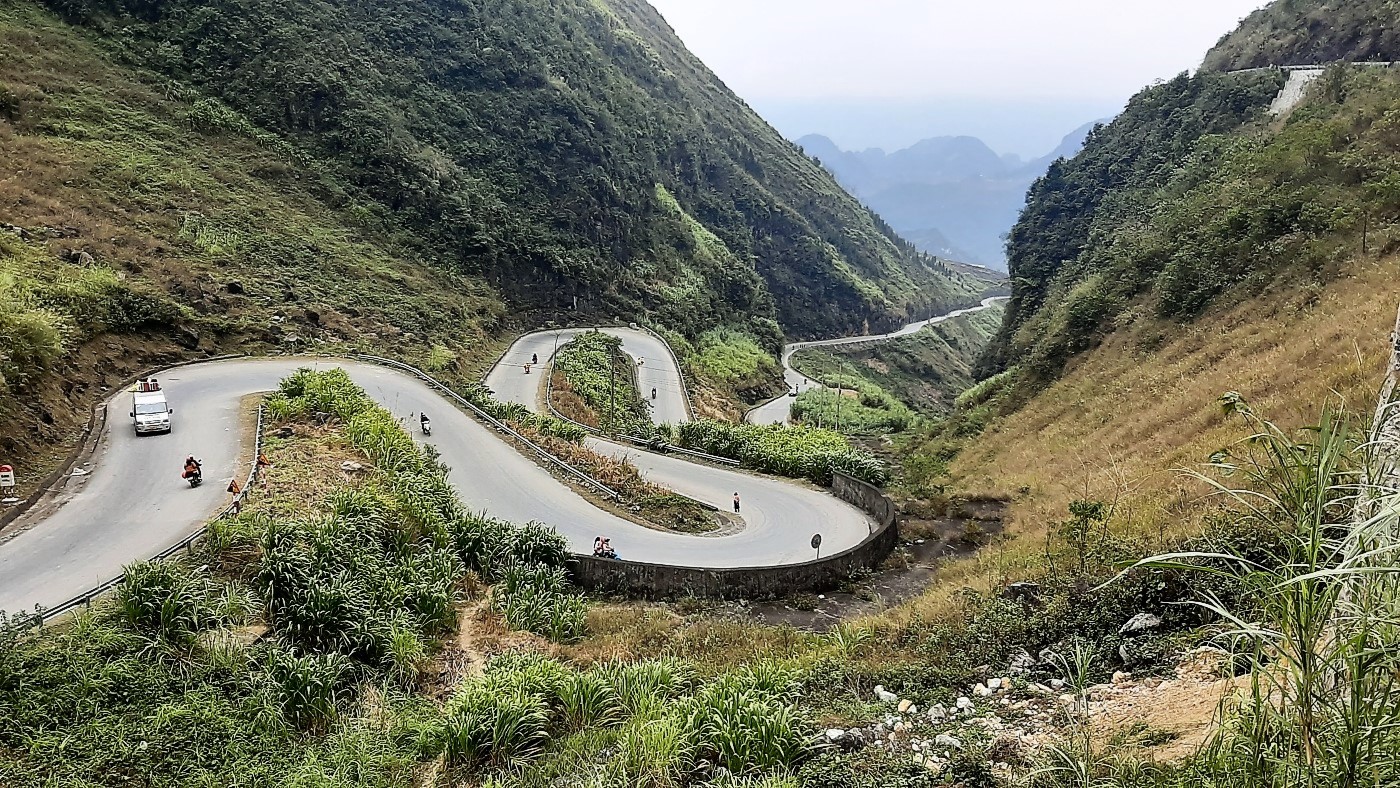
The most famous, and undoubtedly one of the most upcoming tourist spots in Vietnam is the Ha Giang Loop . The route is often completed on a motorbike; by yourself, as part of a tour group , or with an experienced local rider. The Ha Giang Loop is a breathtakingly beautiful and off-the-beaten-path destination in northern Vietnam. The Ha Giang Loop is renowned for its stunning landscapes, with towering limestone mountains, deep valleys, and winding roads that offer panoramic views at every turn. The landscape is dotted with terraced rice fields, colourful hill tribes villages, and dramatic rock formations, creating a truly awe-inspiring sight. The region is home to various ethnic minority groups, such as the Hmong, Dao, and Tay. Interacting with these communities and learning about their traditions and way of life is an enriching experience. You can visit local markets, try traditional foods, and even stay in homestays to immerse yourself in their culture.
Recommended duration: 3 – 5 nights depending on how many stops you want to make
Places to visit / landmarks:
Activities: Motorbiking, boat ride on Nho Que River
Accommodation: A range of guesthouses
Lao Cai (Sapa)
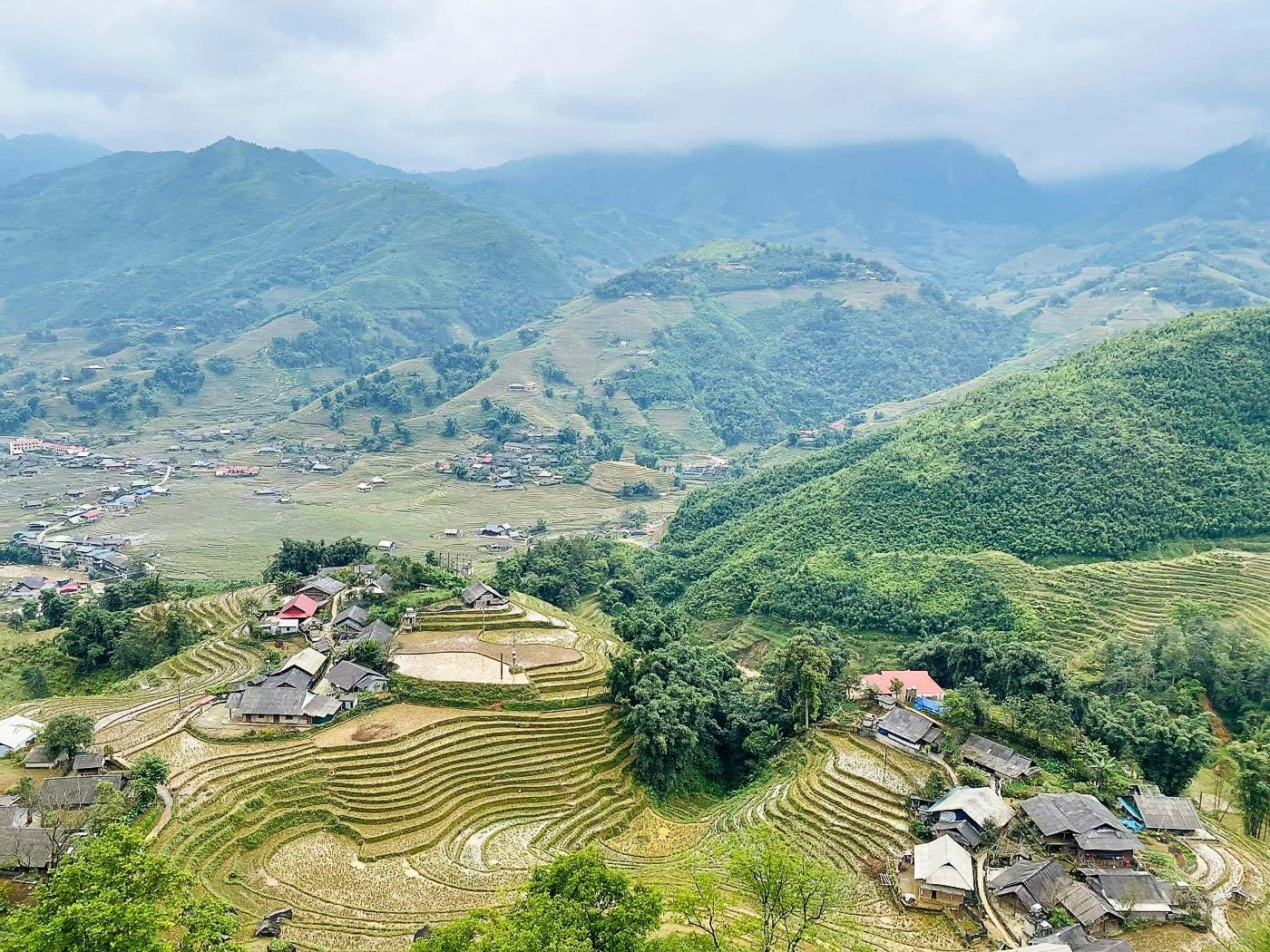
Sapa is known for its breathtaking scenery, with terraced rice fields, lush mountains, and picturesque valleys. The views are especially stunning during the rice harvesting season (September to October) when the fields turn golden yellow. Trekking is a popular activity in Sapa. You can explore surrounding villages and visit ethnic minority communities. Popular trekking routes include Fansipan Mountain, Muong Hoa Valley, and Cat Cat Village. On these trekking routes, you can learn about the ethnic minority groups, including the Hmong, Dao, and Tay people. Sapa is also home to Fansipan Mountain, the highest peak in Vietnam. It is known as the “Roof of Indochina”. For adventure thrill-seekers, you have the option to climb the 3,147-meter mountain. Alternatively, you can take a cable car ride to enjoy the scenery without physical exertion.
Places to visit / landmarks: Visit ethnic minorities as part of a tour , Fansipan Mountain, Sapa town centre
Activities: trekking tours and enjoying local delicacies
Accommodation: Pistachio Hotel or May Ho Hotel
Hai Phong (Cat Ba)
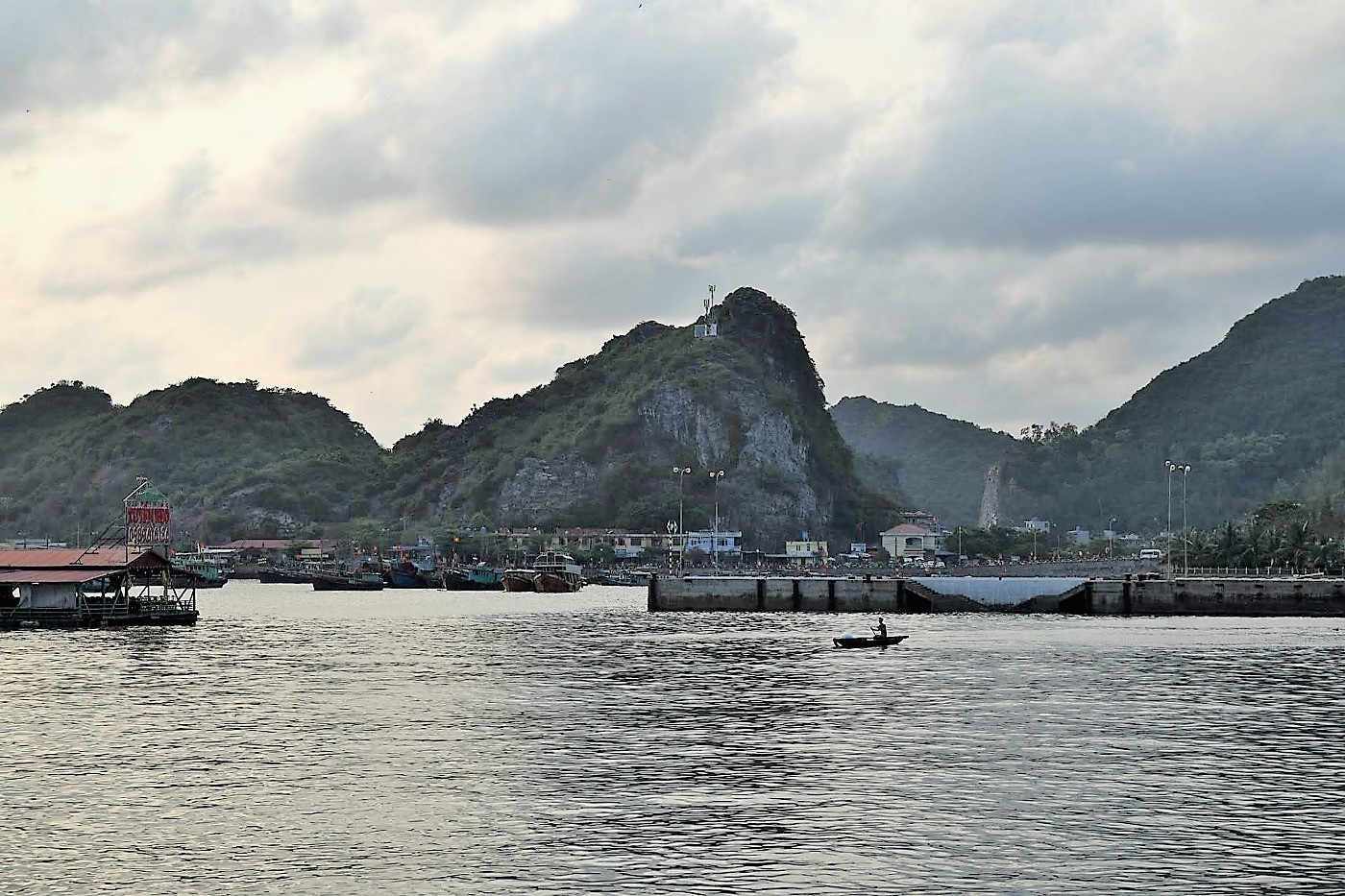
Cat Ba is the largest of a complex of islands belonging to Hai Phong City. The island is a perfect base for exploring the breathtaking Halong Bay. Take a boat tour or cruise, kayak through the limestone karsts, and visit the hidden caves and floating fishing villages. The island is also home to Cat Ba National Park. This national park is a UNESCO Biosphere Reserve and home to a diverse ecosystem. Hike through the lush forest trails, spot rare wildlife like the Cat Ba langur (one of the world’s most endangered primates), and enjoy panoramic views from the mountain summit. Other popular activities visitors enjoy on Cat Ba Island are relaxing on the beaches, rock climbing opportunities, cycling or motorbiking along scenic coastal roads and enjoying the tranquillity of the countryside.
Places to visit / landmarks: Ha Long Bay, Cat Ba National Park
Activities : Take a boat trip, hiking, rock climbing, relaxing
Accommodation: Cat Ba Friendly Family Hotel or Cat Ba Backpacker Hostel
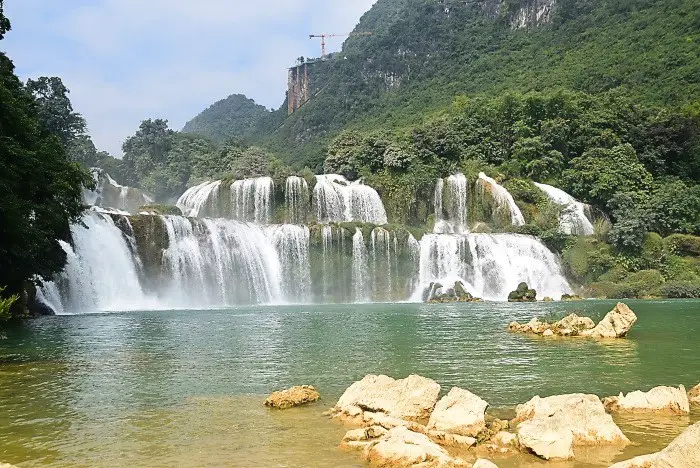
Cao Bang is renowned for its breathtaking landscapes, including the Ban Gioc Waterfall , one of the most beautiful waterfalls in Vietnam. The region is also home to serene lakes, lush forests, and picturesque mountains, making it a paradise for nature lovers. If you are an adventure seeker, Cao Bang offers various outdoor activities. You can trek through the rugged mountains, explore caves, go kayaking or rafting in the rivers, or even try rock climbing. The region’s diverse terrain provides ample opportunities for adrenaline-pumping adventures.
Places to visit / landmarks: Ban Gioc Waterfall, Nguon Ngao Cave, Angel Eye Mountain
Activities : Trekking, motorbiking, kayaking
Accommodation: Primrose Homestay or Yen Nhi Homestay Ban Gioc
Hoa Binh (Mai Chau)
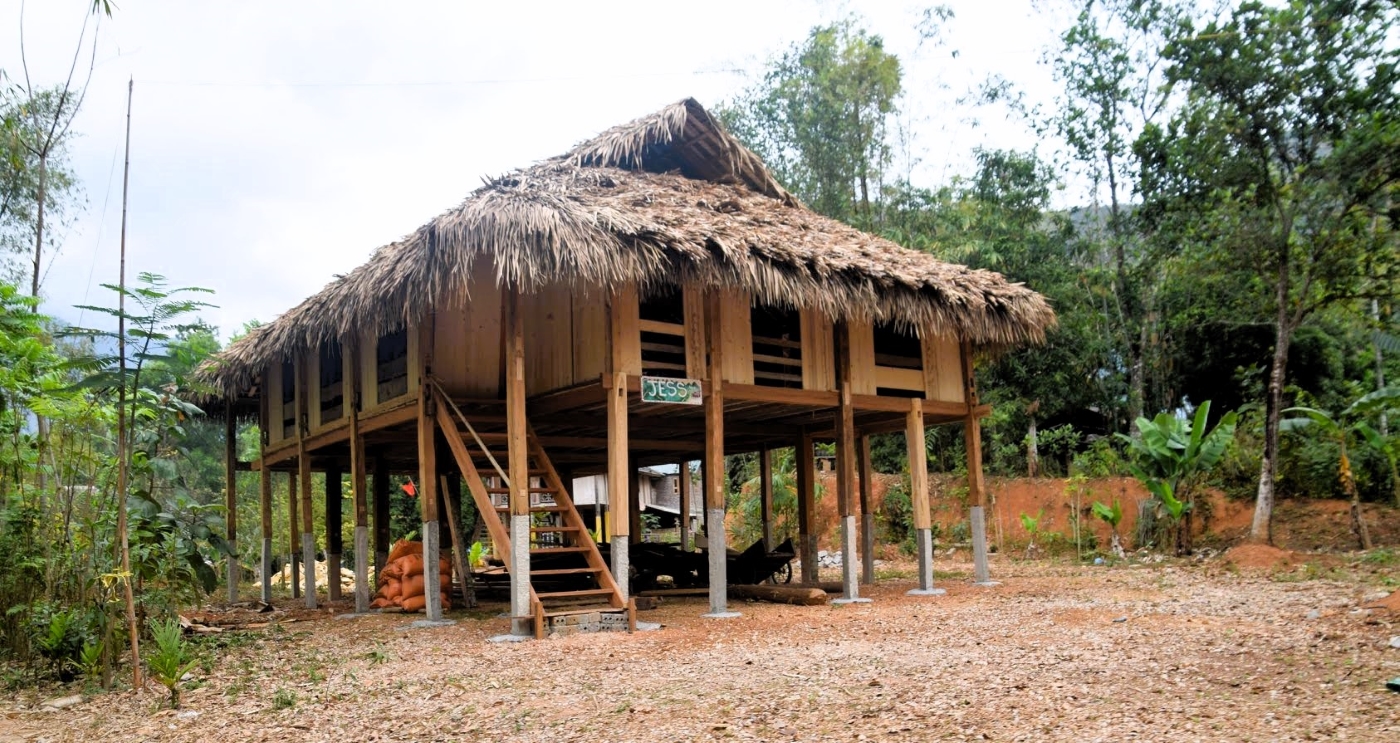
Mai Chau is a beautiful rural district located in the Hoa Binh province of Vietnam. It is known for its stunning landscapes, surrounded by lush green rice paddies, towering limestone mountains, and peaceful valleys. The region is home to the White Thai ethnic minority group, who have preserved their traditional way of life for centuries. You can immerse yourself in their unique culture, witness their traditional dances, music, and handicrafts, and even stay in a traditional stilt house overnight. It is the perfect location to experience a homestay with a local family. It allows you to get a deeper understanding of the local culture, customs, and daily life.
Places to visit / landmarks: Hang Chieu Cave, Hoa Binh Lake
Activities : Cycle Mai Chau Valley, sleep in a stilt house
Accommodation: Mai Chau Mountain View Resort or Mai Chau Hideaway Lake Resort
Son La (Moc Chau)
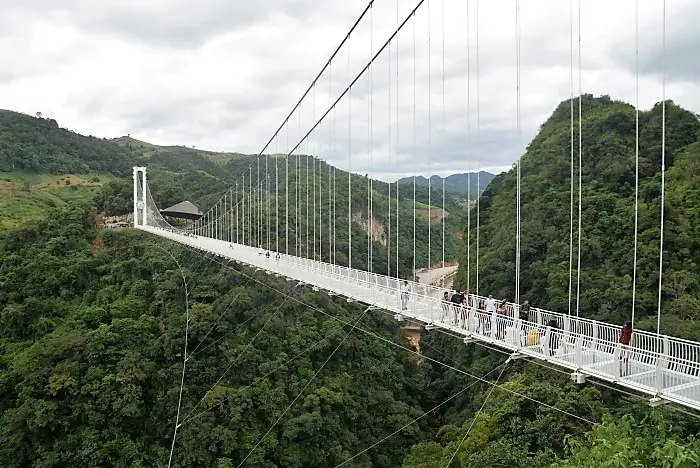
Moc Chau is a beautiful highland district located in Son La Province. It is famous for its stunning natural landscapes, including rolling hills, green tea fields, flower gardens, and ethnic minority villages. Moc Chau is renowned for its tea plantations, producing some of the best quality green tea in Vietnam. Visitors can explore the tea gardens, learn about tea production, and even participate in tea harvesting and processing activities. In addition, there are many ethnic minority villages in Moc Chau, such as the White Thai, H’Mong, and Dao communities. Popular attractions in Moc Chau include Moc Chau Island , home to the Guinness World Record glass bridge, the Moc Chau Plateau, Dai Yem Waterfall, Pha Luong Peak, and the heart-shaped tea hill.
Places to visit / landmarks: Moc Chau Island, Dai Yem Waterfall, Bat Cave, Chi Lon Village
Activities : Walk the glass bridge, take photos, indulge in BBQ & Hotpot, photoshoot at tea plantations
Accommodation: MAMA’s House
Thanh Hoa (Pu Luong)
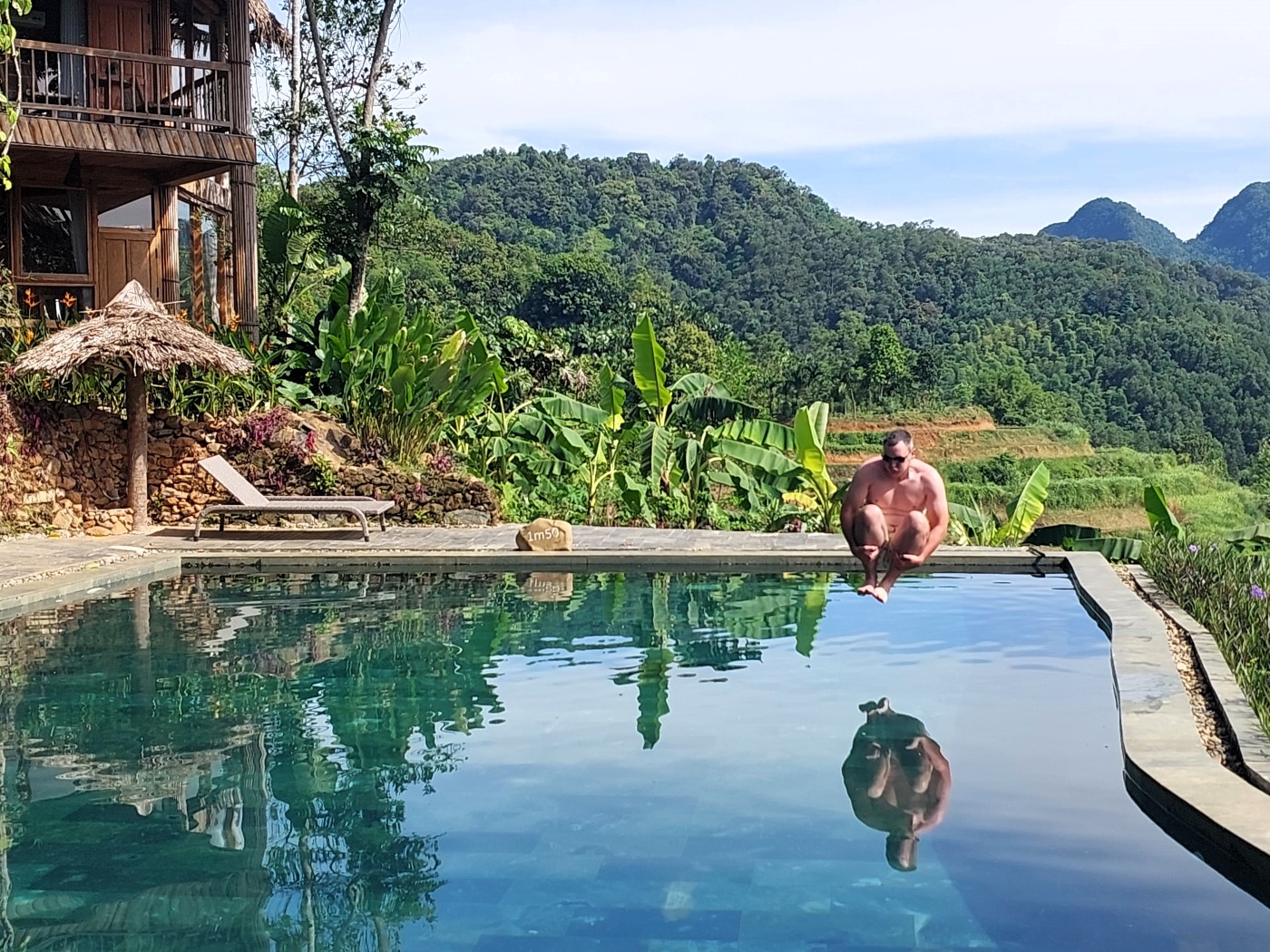
Pu Luong is a nature reserve located in the Thanh Hoa province. It is known for its breathtaking landscapes, lush rice terraces, and traditional ethnic minority villages. The area is popular among nature lovers and adventurers seeking an authentic and off-the-beaten-path experience in Vietnam. Pu Luong offers a variety of outdoor activities such as hiking, trekking, cycling, and exploring the local villages. The reserve is home to several ethnic minority groups, including the Thai and Muong people, who have preserved their unique traditions and way of life. There are also several scenic waterfalls in Pu Luong, such as the Hieu Waterfall and the Kho Muong Waterfall, where visitors can swim and relax in the natural pools.
Places to visit / landmarks: Pho Doan Market, Thac Hieu Waterfall
Activities : Bamboo rafting, eating local cuisine, relaxing in a resort
Accommodation: Pu Luong Natura
Phu Tho (Viet Tri City)
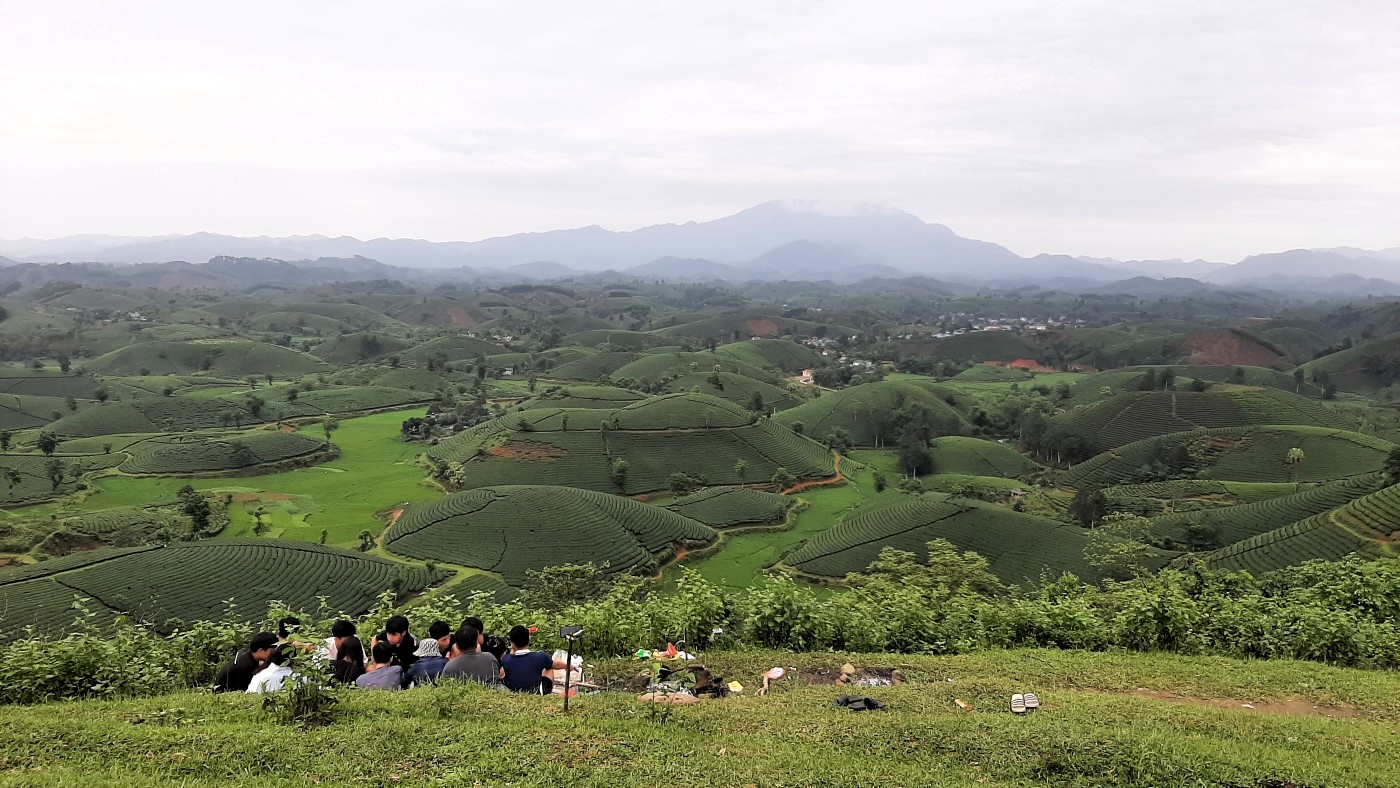
Phu Tho is certainly an off-the-beaten-path destination in Vietnam. The main city in Phu Tho province is Viet Tri City, which is ideal to base yourself when exploring this province. One of the main attractions is Hung Kings Temple. This is one of the most important historical and cultural sites in Vietnam, dedicated to the legendary Hung Kings who are considered the founders of the nation. The temple complex is surrounded by beautiful landscapes and offers a chance to learn about Vietnamese history. The best time to visit is during the annual festival, held around April 7th each year. The festival includes traditional ceremonies, processions, and folk performances, and attracts visitors from all over the country. Other attractions include Xuan Son National Park and Long Coc tea fields. Both are great places for outdoor enthusiasts. You can hike through lush forests, explore caves, go bird-watching, or enjoy a picnic amidst scenic waterfalls.
Places to visit / landmarks: Hung Kings Temple, Xuan Son National Park, Long Coc tea fields
Accommodation: Saigon Phu Tho Hotel
Vinh Phuc (Tam Dao)
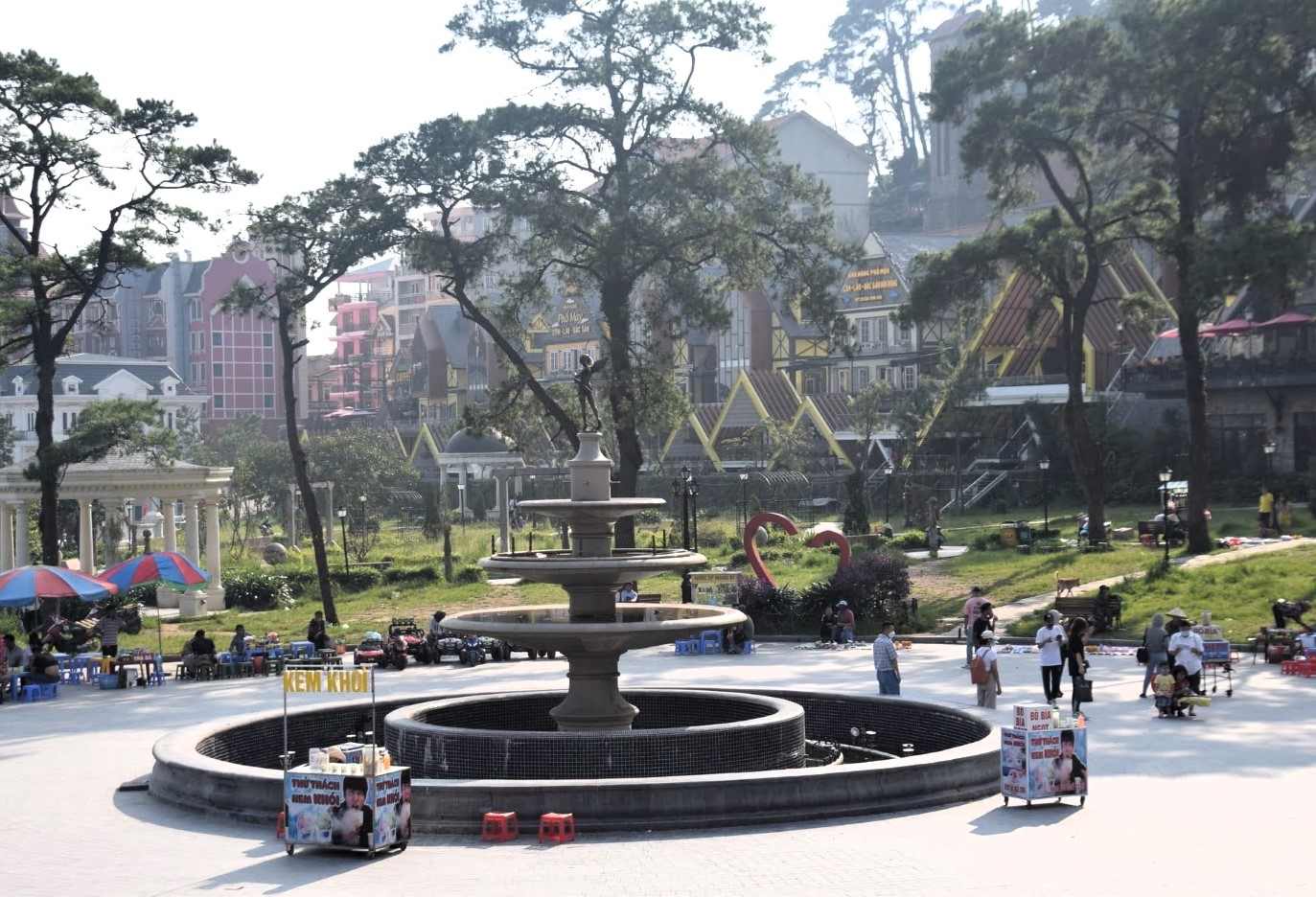
If you’re looking for unique places to visit in Vietnam, Tam Dao should certainly be on the list. Tam DaoTam Dao is a mountainous area located about 50 kilometres away from Hanoi. It is well-known for its cool climate, beautiful scenery, and lush green forests. Tam Dao National Park national park is an excellent place for nature lovers and adventure enthusiasts. You can hike through the forest, enjoy the fresh mountain air, and spot various species of plants and animals. The town itself is inspired by the French colonial era. When you arrive, it is like you have been transported to Europe. One of the main attractions is Tam Dao Stone Church, which offers a unique blend of European and Vietnamese architectural styles.
Places to visit / landmarks: Stone church, Sky Gate viewpoint, Tam Dao Castle, Silver Waterfall, Rock Cafe
Activities : Sample the cuisine, visit the night market, hiking
Accommodation: Camellia Luxury Hotel or Hung Trang Hotel
The most beautiful places in Central Vietnam
If you’re travelling in Central Vietnam, you’re in for a treat of beach bars, lanterns, old towns, snorkelling, and much more. Central Vietnam has a total of 19 provinces.
Thua Thien-Hue Province (Hue)
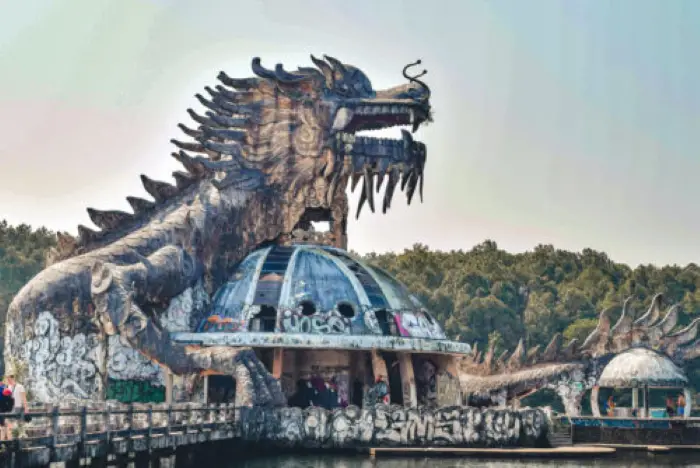
Hue is a beautiful city located in central Vietnam, known for its historical significance, cultural heritage, and stunning landscapes. The number one attraction in Hue is the Imperial City, which was once the residence of the Nguyen Dynasty emperors. Along the Perfume River, you can discover the elaborate royal tombs of the Nguyen Dynasty. Popular ones include the Tomb of Khai Dinh and the Tomb of Tu Duc. Other activities include taking a boat ride on the Perfume River with a stop off at the popular Thien Mu Pagoda, an iconic symbol of Hue located on the riverbank. In recent years, another popular attraction is Hue’s abandoned water park .
Places to visit / landmarks: Hue Imperial City, Royal Tombs, Thien Mu Pagoda
Activities : Boat ride on the Perfume River
Accommodation: Vinpearl Hotel or Bon Ami Hostel
Quang Nam (Hoi An)
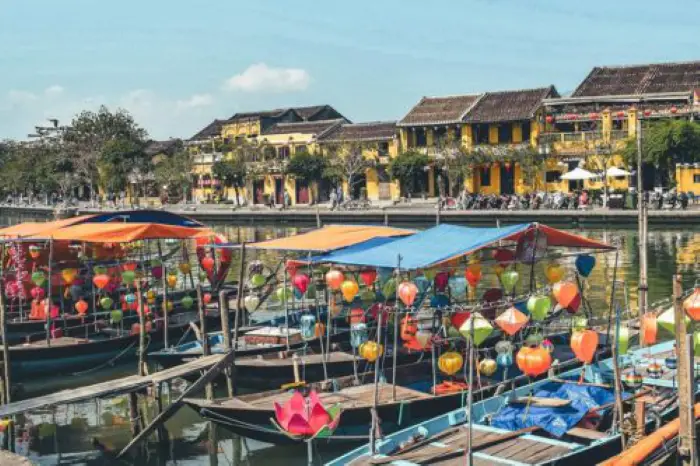
Hoi An is a charming and picturesque city, known for its well-preserved Ancient Town. With plenty of things to do in Hoi An , you could spend weeks here. It is also one of the best tourist places in Vietnam. Hoi An’s Ancient Town is a UNESCO World Heritage Site for good reason. It offers a glimpse into the city’s rich history with its well-preserved architecture, narrow streets, and historic buildings dating back to the 15th century. The town’s unique blend of Vietnamese, Chinese, Japanese, and European influences makes it a truly fascinating place to explore. Hoi An is a melting pot of cultures, and this is evident in its diverse traditions, customs, and festivals. You can witness traditional ceremonies, visit old temples, and even participate in lantern-making or traditional Vietnamese cooking classes.
Recommended duration: 4 nights
Places to visit / landmarks: Ancient Town, Japanese Bridge, An Bang beach
Activities : Basket boat ride , cooking class, lantern making, get clothes tailor-made
Accommodation: Cozy Savvy Boutique Hotel or Backhome Hostel & Bar
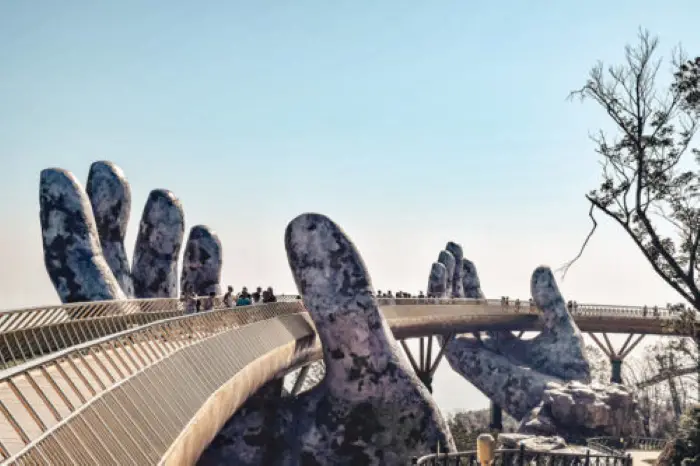
Da Nang is a vibrant city known for its beautiful beaches, stunning landscapes, and rich cultural heritage. One of the most popular and stunning beaches in Danang is My Khe Beach, where you can spend the day relaxing. Enjoy swimming, sunbathing, or even trying out water sports like surfing or jet-skiing. A short drive away you will find Marble Mountains. The Marble Mountains are a cluster of five limestone and marble hills. Climb to the top for panoramic views, visit ancient pagodas, and explore stunning caves filled with Buddhist shrines. By night, enjoy Da Nang’s iconic Dragon Bridge, Every weekend, the bridge comes to life with a spectacular fire and water show. If you’re looking for a day trip just outside of Danang City, consider heading over to Sun World Ba Na Hills , a french inspired town and home to the Instagram-worthy hand bridge.
Places to visit / landmarks: Marble Mountains, Sun World Ba Na Hills, Dragon Bridge
Activities : Relax on the beaches
Accommodation: Sofiana My Khe Hotel or The Secret Garden
The most beautiful places in Vietnam in the south
South Vietnam boats a range of scenery, from the concrete jungle of Ho Chi Minh City to the mountainous lover’s paradise of Dalat. With plenty of attractions to explore, you’re sure to have an incredible time. Southern Vietnam has a total of 17 provinces.
Ho Chi Minh City
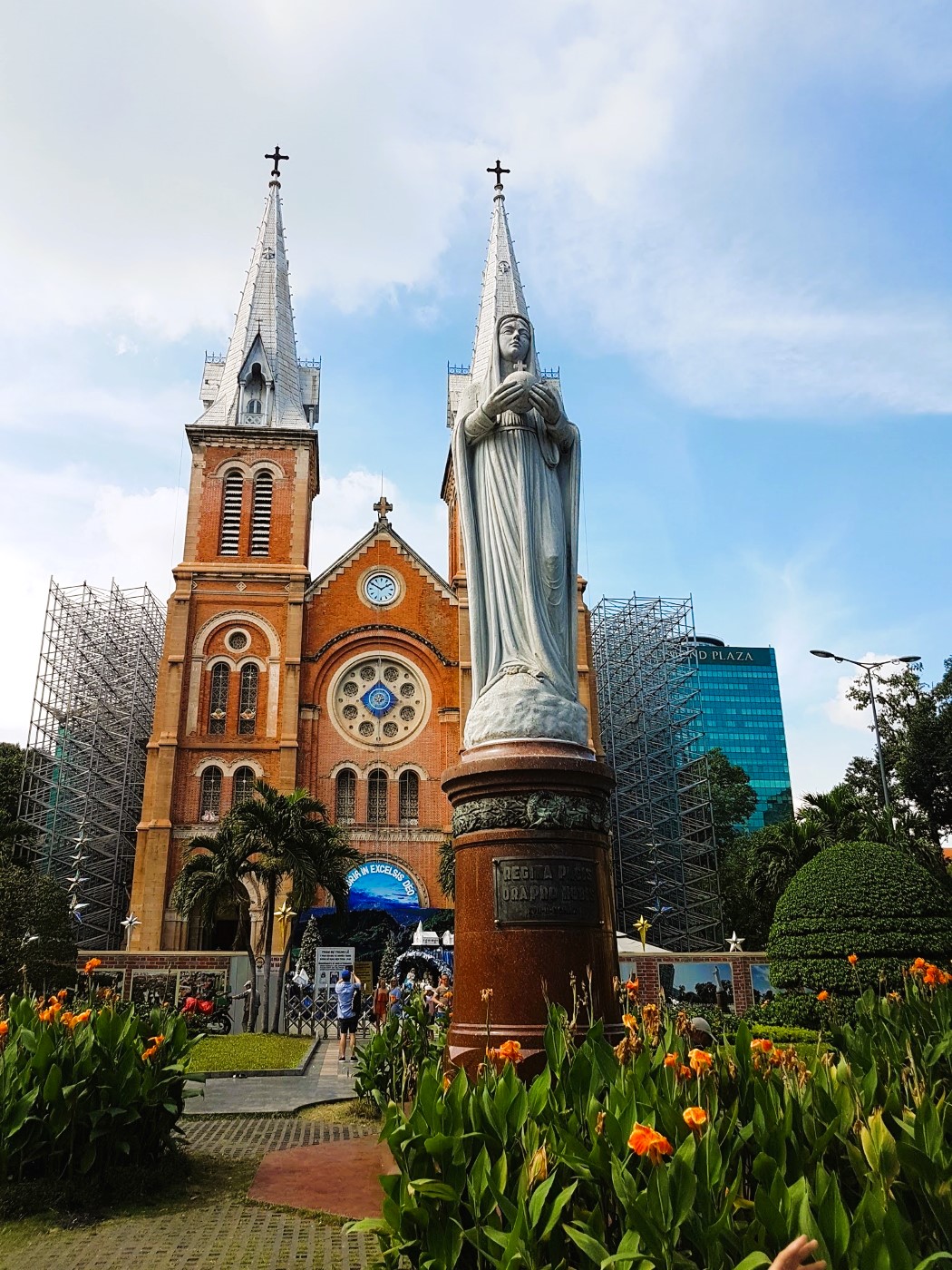
Ho Chi Minh City, formerly known as Saigon, is a vibrant and bustling city. It is the largest city in the country and offers a wide range of activities and attractions for visitors to enjoy. Firstly, you should take a visit to the War Remnant Museum. This museum provides a glimpse into the history of the Vietnam War through various photographs, artefacts, and exhibits. It offers an emotional and thought-provoking experience. Take the opportunity to explore the Cu Chi Tunnels . These underground tunnels played a significant role during the Vietnam War. Take a guided tour to learn about their construction, purpose, and how they were used by Viet Cong soldiers. As well as learning about history, make sure to take advantage of the shopping opportunities in famous markets such as Ben Thanh Market. Enjoy evening strolls around Nguyen Hue Walking Street, or party the night away on Bui Vien.
Recommended duration: 3 nights
Places to visit / landmarks: War Remnant Museum, Ben Thanh Market, Bui Vien, Nguyen Hue Walking Street, Cu Chi Tunnels, Bitexco Tower
Activities: Food & motorbike tour
Accommodation: Sedona Suites or Saigon Fantastic Hostel
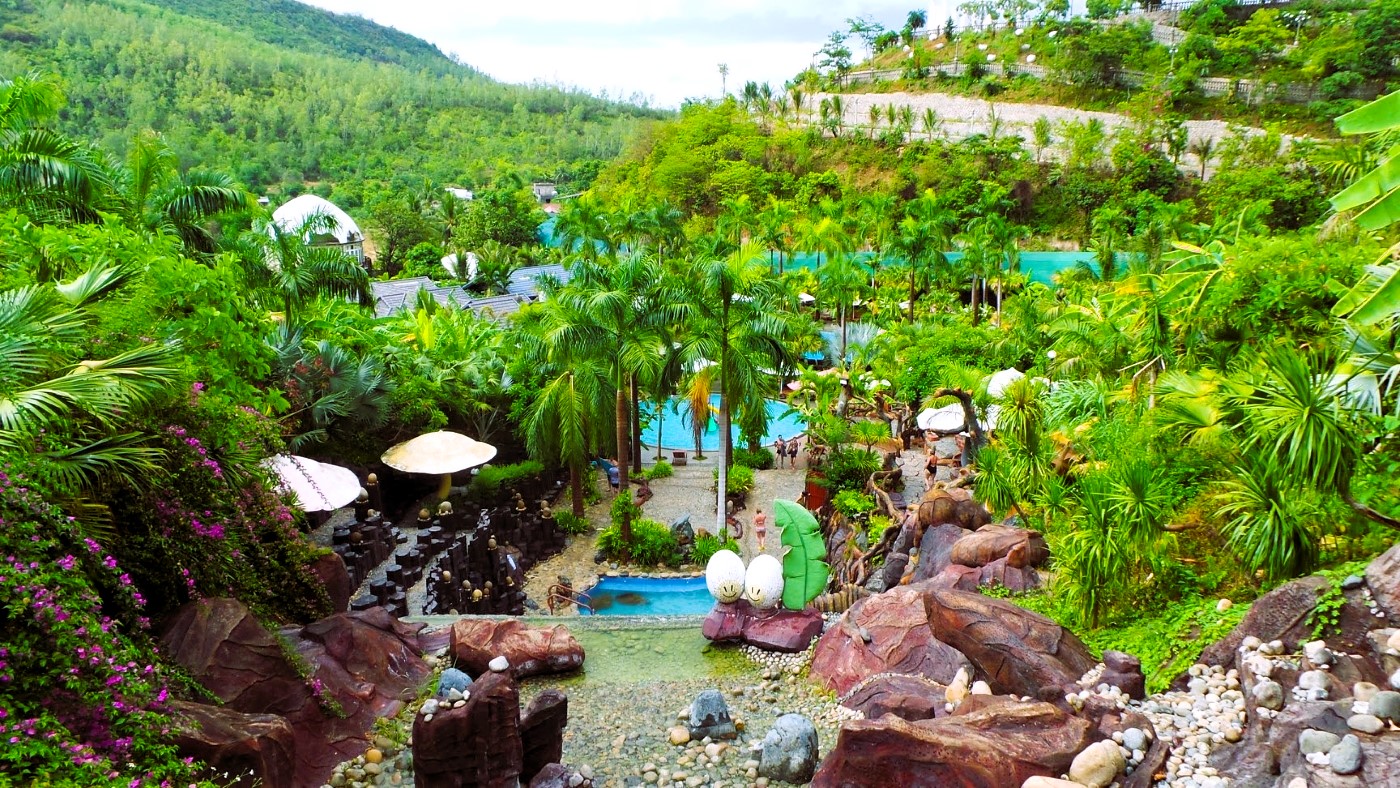
Are you yearning for a beach vacation in a tropical paradise? Look no further than Nha Trang, Vietnam’s coastal gem that promises to inspire and captivate you with its stunning beauty. The pristine white sands and crystal-clear turquoise waters of Nha Trang’s beaches are simply breathtaking. Relax under the warm sun or take a refreshing dip in the ocean while marvelling at the picturesque surroundings. Hop on a boat tour from Nha Trang and explore the nearby islands dotted amidst the sea. Hon Mun Island is renowned for its vibrant coral reefs, making it an ideal spot for snorkelling or scuba diving enthusiasts. Discover marine life like colourful fish, turtles, and even rare seahorses as you immerse yourself in this underwater wonderland. For a cultural aspect, discover the rich history and culture of Nha Trang by visiting iconic landmarks such as the Po Nagar Cham Towers. These ancient Hindu temples were built between the 7th and 12th centuries.
Places to visit / landmarks: Egg Mud Baths, Po Nagar Cham
Activities : Snorkelling, boat trips, relaxing
Accommodation: Queen Ann Hotel or Mojzo Inn
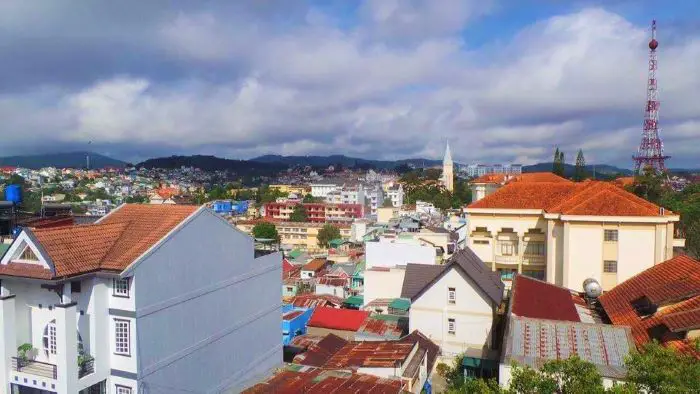
Dalat boasts breathtaking scenery that will leave you awe-inspired at every turn. From lush green valleys to cascading waterfalls, this region is blessed with abundant natural beauty, there’s plenty to see and do . The mesmerizing landscapes include the serene Tuyen Lam Lake, the vibrant flower gardens of Valley of Love, and the majestic Elephant Waterfall – all waiting to captivate your senses. Stepping into Dalat feels like entering a time capsule due to its well-preserved French colonial architecture dating back to the early 20th century. Explore iconic landmarks such as Bao Dai Summer Palace or Domaine de Marie Church. If you’re seeking adrenaline-pumping activities, Dalat offers an exhilarating canyoning expedition, the opportunity to conquer the challenging Langbiang Mountain or go mountain biking through scenic trails.
Places to visit / landmarks: Clay Tunnel, Linh Phuoc Pagoda, Crazy House, Elephant Falls, Flower Garden
Activities : Trekking, canyoning, eat Dalat pizza, explore by scooter or bicyle, Boat ride on the lake
Accommodation: Original Kens Backpacker Hostel or Dalat Backpackers Hostel
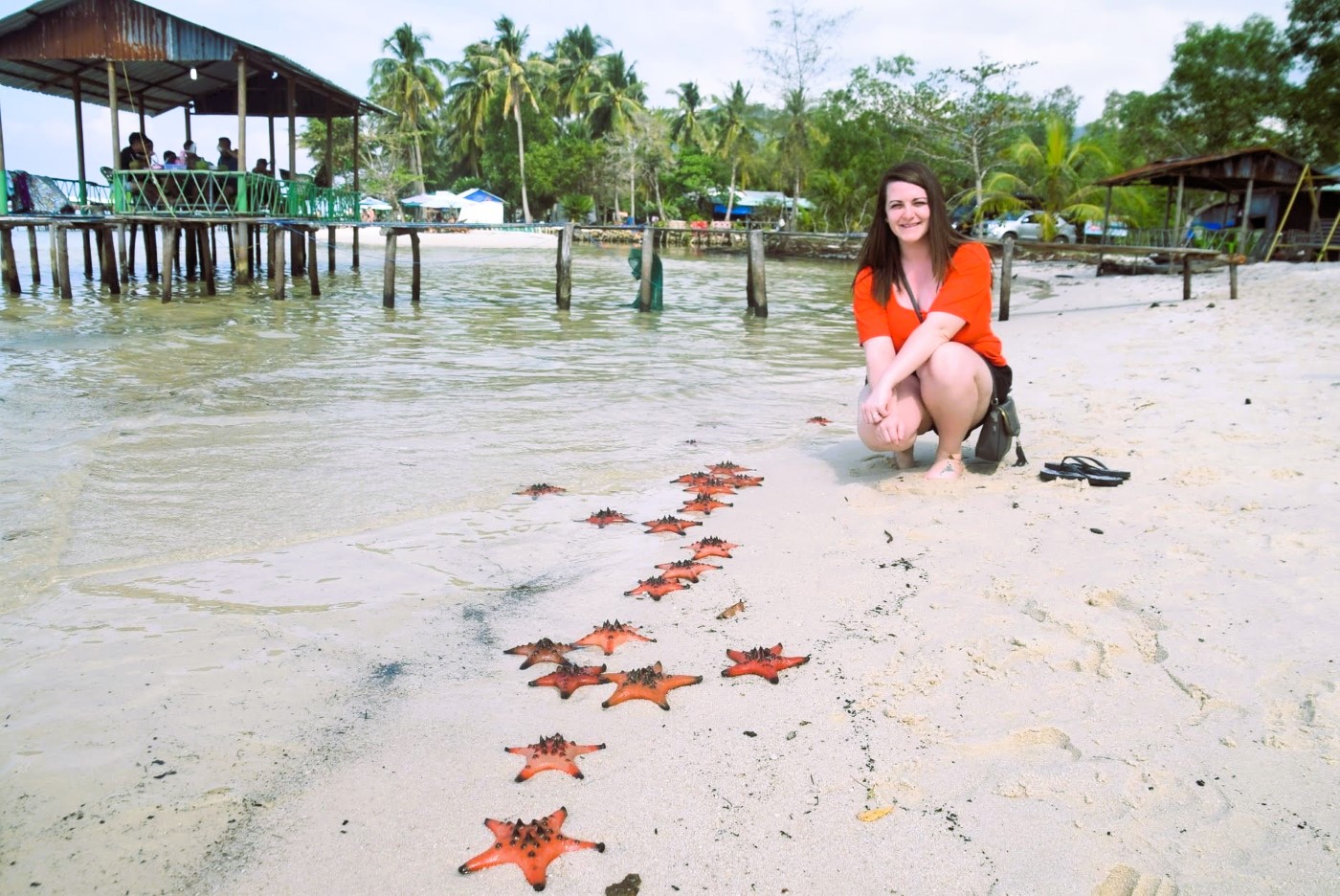
Phu Quoc boasts some of the most picturesque beaches in Southeast Asia. Long Beach (Bai Truong) stretches for over 20 kilometres, offering soft white sands and calm turquoise waters perfect for snorkelling excursions , swimming or simply sunbathing. Sao Beach (Bai Sao) is another popular spot known for its powdery sand and stunning palm-fringed coastline. Whether you’re seeking relaxation or adventure, Phu Quoc’s beaches have something to offer everyone. Aside from its beautiful beaches, Phu Quoc Island is home to lush forests and diverse wildlife that nature enthusiasts will find captivating. Explore the mesmerizing Phu Quoc National Park, where you can hike through dense jungles and discover rare plant species amidst cascading waterfalls. Don’t miss a visit to Suoi Tranh Waterfall, which offers a refreshing dip in its natural pools after an invigorating hike.
Places to visit / landmark s: Long Beach, Sao Beach, Phu Quoc National Park, Aqutopia Waterpark, Suoi Tranh Waterfall
Activities : Swimming, snorkelling
Accommodation: Sunset Beach Resort & Spa or Fortuna Hotel
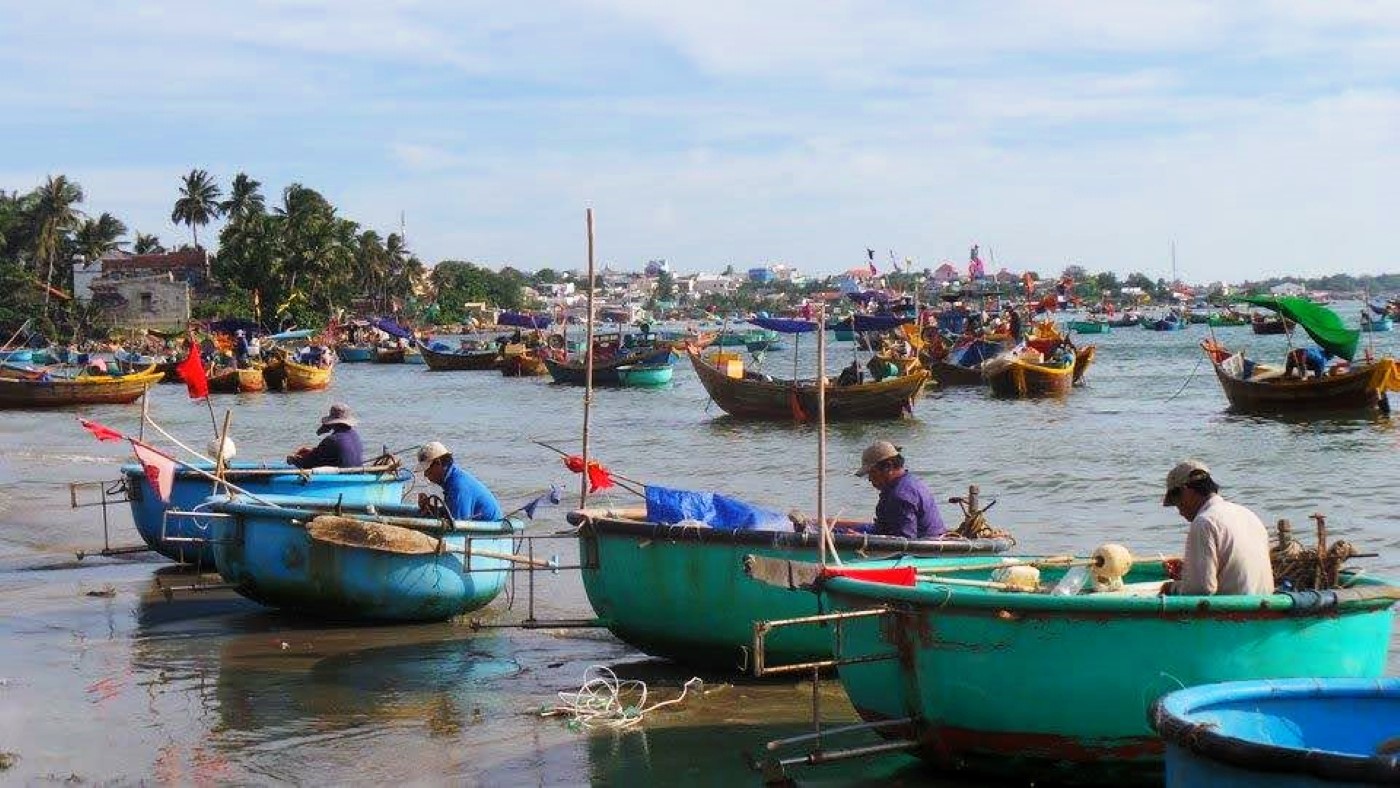
Mui Ne boasts some of Vietnam’s most picturesque beaches with pristine white sand and crystal-clear turquoise waters. Whether you want to relax under palm trees while sipping on a refreshing coconut or engage in thrilling water sports like kiteboarding or windsurfing, these idyllic beaches offer something for everyone. Mui Ne’s sand dunes are also something to marvel at. The red and white dunes contrast as they create an ethereal atmosphere during sunrise or sunset – perfect for photography enthusiasts! A stone’s throw away you will find the Fairy Stream. Immerse yourself in nature’s whimsy at Fairy Stream – a small, magical water stream surrounded by towering cliffs adorned with vibrant colours and patterns. There is even the option to explore Mui Ne and the attractions by jeep. You can book your jeep tour here .
Places to visit / landmarks: Red and white sand dunes, Fairy Stream
Activities : Relaxing on the beaches, snorkelling, watersports, enjoy seafood delicacies
Accommodation: Victoria Phan Thiet Beach Resort & Spa or Mui Ne Ocean House
Mekong Delta
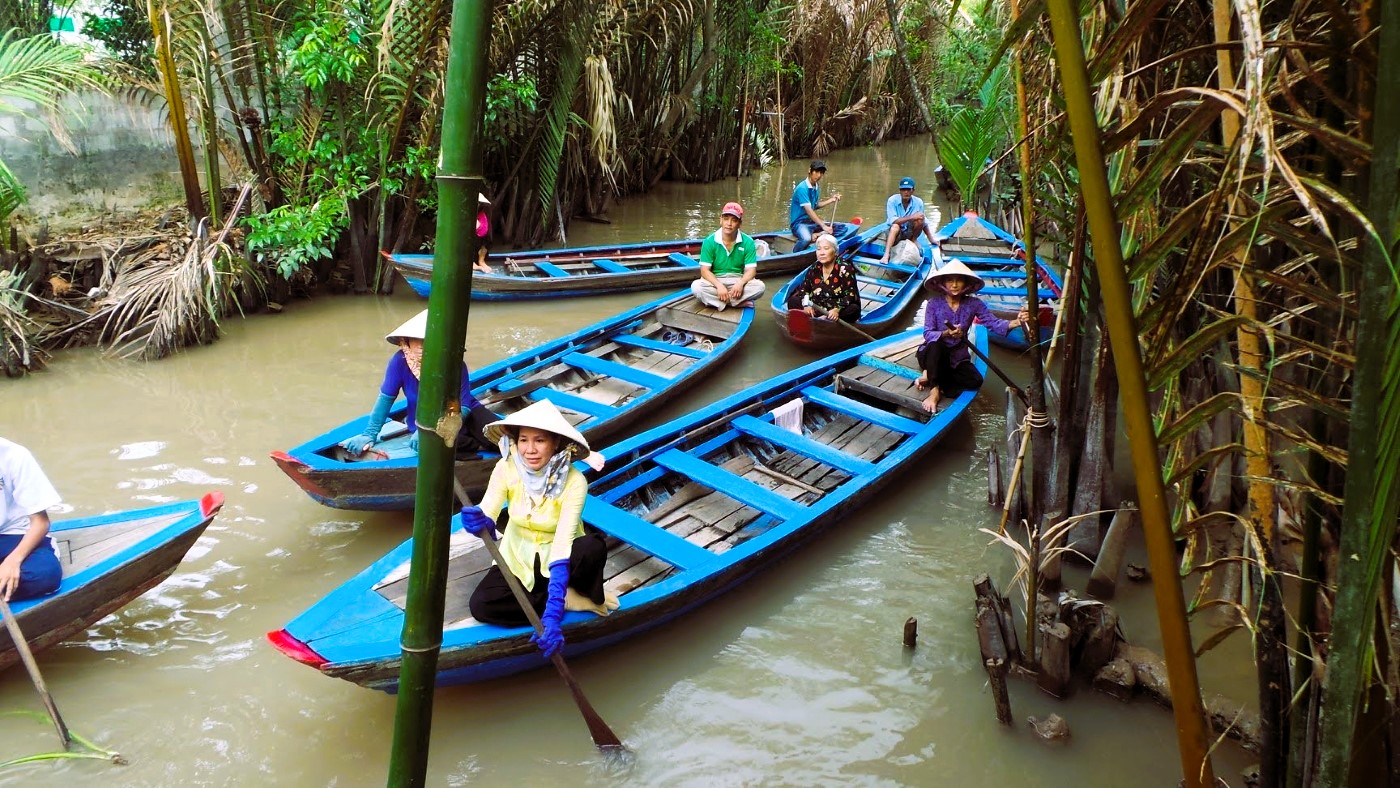
A trip to the Mekong Delta is not to be missed when in Vietnam. The Mekong Delta is home to a diverse mix of ethnic communities, each with its own distinct traditions and customs. Explore local villages along the riverbanks, witness traditional handicrafts being made by skilled artisans, and savour authentic Vietnamese cuisine prepared with fresh ingredients sourced from the delta’s fertile lands. Prepare to be awestruck by nature’s masterpiece as you cruise along the winding waterways of the Mekong River. Marvel at lush rice paddies stretching endlessly across the horizon, dotted with coconut groves and fruit orchards laden with tropical fruits like mangoes and dragon fruits. The mesmerizing blend of verdant landscapes against azure skies will leave you enchanted at every turn.
Places to visit / landmarks: Floating Market, Ben Tre
Activities : Boat rides, witness handicrafts being made, learn about the ethnic minorities
Accommodation: The Mekong Delta can be explored by day trip from Ho Chi Minh City , or you can book overnight tours to the Mekong Delta with overnight accommodation included
Essential resources for travelling in Vietnam
Travel Insurance – It’s a good idea to have insurance, particularly if you’re going to be riding a motorbike. Our personal choice is Safteywing . You can opt for automatic monthly payments, just like a subscription. It can be purchased whilst already travelling and there is no cap on travel duration.
Visa – You are highly likely to need a visa for Vietnam. iVisa is a fantastic website that is super easy and quick to use. You can quickly make a visa application online.
Accommodation – Booking.com is our go-to when looking to pre-book accommodation online. Booking.com tend almost always to have the best rates and a FREE cancellation policy for most properties.
Overland transport – Our go-to website for overland transport is Bookaway . They have routes all over Vietnam and host a range of transport modes and companies. It is easy to book online and have your ticket sent to your phone.
Tours & Activities – If you want to book tours and activities for Vietnam online, make sure to check out Get Your Guide . Get Your Guide takes the stress out of booking activities abroad. You will also find a range of benefits, such as skip-the-line passes, lunch included in your tours, and so much more.
Leave a Comment Cancel reply
You must be logged in to post a comment.
- Vietnam Tours
- Vietnam Travel Guide
- Where to Go in Vietnam
Best Nature & Wildlife Destinations in Vietnam

- ~ mins read
Vietnam has been blessed with over 3,000km of coastline, pristine forests, mountain ranges, and some of the planet’s most impressive limestone pinnacles and plateaus. Combine all this and you have the best nature tourism location in Southeast Asia. There’s no shortage of ways to explore all of Vietnam’s natural habitats. From national parks, to protected reserves, to pristine islands and archipelagos — Vietnam has every aspect of nature covered.
Check out our top destinations in Vietnam for nature and wildlife tourism in 2021!
- Stani Christina
- From Germany
- From Australia
- Mladen Asllani
- From New Zealand
8 Best Nature Destinations in Vietnam
For nature-lovers and outdoor enthusiasts, here are the top 8 must-visit destinations in Vietnam:
1. Ninh Binh

One of the most fascinating landscapes in Vietnam, Ninh Binh is usually overlooked for more famous places. The iconic limestone pinnacles of Vietnam jut out of rice fields in this area, giving it the name “Ha Long Bay on land”. The Van Long Nature Reserve here is an absolutely pristine wetland surrounded by the famous limestone cliffs. There are also several caves to explore including the Mua Cave and Trang An. Lastly, the Cuc Phuong National Park is over 200 sq. km of lush tropical forest and one of the country’s most important protected areas. Vietnam’s rural and authentic side is more affordable and accessible at Ninh Binh.
- Good to know: Entrance fee and boat trip in Van Long is less than USD $5. The National Park entrance fee is roughly USD $2*.
2. Cham Islands

A cluster of eight islands laying 2 hours by boat off the coast of Hoi An are the Cham Islands. Hon Lao is the largest, the only inhabited island, and the one that is the most active. A UNESCO World Biosphere Reserve, the islands boast extensive forests, water coconut palms, rice paddies, coral reefs and marine life. Ideal for beach bums, visitors can scuba dive or snorkel the pristine waters, lounge on white sand beaches, or purchase local handicrafts.
- Good to know: The islands can get overcrowded during the day because of day-trippers, which is why it is recommended to stay overnight. Enjoy the beaches and the waters when most of the visitors have left.

Trekkers and those who prefer to be out in nature instead of beating the city streets will find their emerald-green haven in Sa Pa. Located in northern Vietnam, Sa Pa is known as the trekking mecca of the country. Cool weather, sprawling tiered rice paddies, hiking trails, and village culture are the highlights of a few days spent deep within Vietnam’s Hoang Lien Son mountain range. Spend a night in a local homestay for a truly authentic experience.
- Good to know: The easiest way to get to Sa Pa is by overnight sleeper train from Hanoi. The journey takes about 8 hours and prices vary depending on the class of ticket booked, between USD $20 and $35* for one way.
4. Ha Long Bay

Eerie and enchanting, Ha Long Bay is one of Vietnam’s most recognizable UNESCO sites. The famous bay is composed of roughly 1,600 limestone karsts topped with vivid greenery jutting up from the emerald-green water. A boat cruise through Ha Long Bay is an absolute must while in Vietnam. Budget and backpacker friendly trips, daily tours, overnight excursions, and luxury cruises can all be booked from Hanoi, roughly 3.5 hours away by car.
- Good to know: Cruise costs can range from USD $5 for half-day tours to USD $250* for overnight luxury trips, making Ha Long Bay affordable regardless of budget.
5. Phong Nha-Ke Bang National Park

Nestled cozily in the middle of the Annamite Mountains, Phong Nha-Ke Bang may be Vietnam’s best national park. The massive area has been declared a UNESCO World Heritage Site for its limestone plateau formations, tropical forests, extensive cave systems, grottos, and underground rivers. This park houses Hang Son Doong, the world’s largest cave explorable only via guided tour. Dark Cave boasts a zipline through the surrounding forest and a swim into the cave’s entrance. Paradise Cave has an uber-impressive collection of stalagmites and stalactites. The most popular, Phong Nha Cave, can be penetrated up to 1,500m via boat tour.
- Good to know: There is no general admission fee into the park itself. Entrance prices to the caves can range from USD $7 to $20*.
6. Ba Be National Park
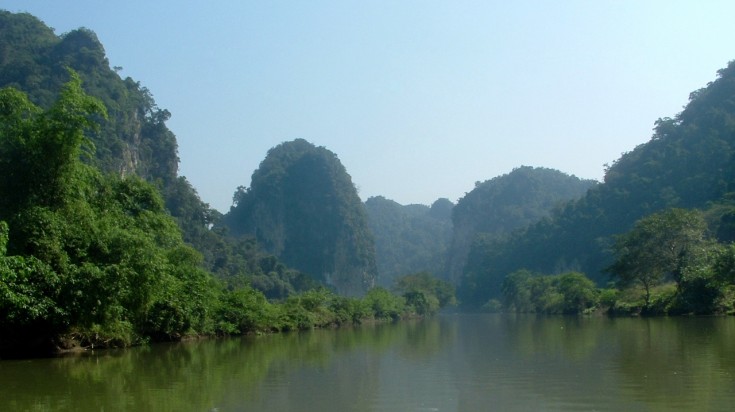
This park, located 180 kilometers north of Hanoi, is like a less-discovered version of Ha Long Bay. With the glassy Ba Be Lake and endless limestone karsts, Ba Be National Park is an untouched piece of Vietnam’s natural beauty. Expect jaw-dropping waterfalls, valley and mountain trekking, cave explorations, and stunning landscape heavily draped in vibrant green vegetation. Trekking, kayaking, cycling, hiking, and mountaineering dominate the activities here.
- Good to know: Entrance to the park is a mere USD $1*, but all activities inside come with an additional fee.
7. Cat Ba Archipelago

This archipelago is made up of 367 islands, the largest of which is Cat Ba, most of which is a national park. This island has made a name for itself as the adventure capital of Vietnam. The most stunning aspect of Cat Ba is the enthralling green carpet that covers much of the landscape. The never-ending hills and mountains also make it a trekker’s dream come true, including a 29km trail that rewards with stunning views over Ha Long Bay. Hailed as one of the most biodiverse areas in the country, Cat Ba is definitely one of Vietnam’s finest creations.
- Good to know: Park entrance is under USD $2. Hiring a trekking guide costs around USD $5*.

This southern Vietnamese beach town has a lot more to offer than its pretty 12km long coastline. Mui Ne is known for its impressive red and white sand dunes that lie just outside the city center. The windswept dunes can be explored on foot or by a 4-wheeler (rented on site). Fairy Stream also deserves an honorable mention. This 1-hour nature trek through the stream’s vibrant orange clay bed is a sure-fire way to get in touch with the natural world. The contrast of the bright blue sky, orange rocks, and emerald-green shrubbery is picture perfect.
- Good to know: The easiest way to access these sites is via guided tour which can hit all three attractions in one day. Entrance to Fairy Stream and both dunes are free. Tours run about USD $10* per person.
6 Best Wildlife Destinations in Vietnam
Nature aside, Vietnam also has many wildlife attractions. Many of them have become a huge tourism opportunity for the country. Check out the top 7 below:

Less than 322km off the coast of Ho Chi Minh, the Con Dao archipelago is a special location where Green Turtles, Hawksbill Turtles, and Leatherback Turtles come to nest. The protected Con Dao National Park provides a safe place for these turtles to lay their eggs after they make the long migration from the Philippines. The most popular islands to witness this are Bay Canh, Tre Lon, Cau, and Tai. Lucky visitors may even be able to assist in releasing newly hatched turtles into the sea!
- Good to know: Nesting season is between April to October, with the peak running from June to September.
2. Cuc Phuong National Park

Bird-watchers should definitely not miss the opportunity for some excellent spotting and photographs at Vietnam’s oldest national park. Located in Ninh Binh, Cuc Phuong National Park is composed of dense tropical forest and limestone mountains. The park boasts over 2,000 plant species, 336 bird species, 122 species of reptiles and amphibians, and 135 species of mammals. Many of the bird species found here are considered rare or endangered, like Chestnut-necklaced partridge and Red-collared woodpecker.
- Good to know: There is a 4-day/3-night bird watching tour that allows for 2 full days of bird spotting as well as a trip to the Van Long Nature Reserve.
3. Nam Cat Tien National Park

Located in Vietnam’s transition zone between the Mekong Delta and Truong Son Mountain Range, the Nam Cat Tien National Park has an impressive collection of plants and animals. From night safaris to crocodile safaris, this is your chance to see many of the park’s primates and other fascinating animals up close. Gibbons and Langur monkeys, porcupines, wild pigs, plus many endangered birds, are the highlights. Trekking, cycling to local villages, cruising along Crocodile Lake, visiting the Endangered Primates Species Center, and staying in an authentic homestay are some of the other activities here.
- Good to know: Take a well-rounded package that includes a Crocodile Lake trek, night safari, accommodation, and a guided tour of the park, lasting 2 days and a night!
4. Can Gio Mangrove Biosphere Reserve & Monkey Island
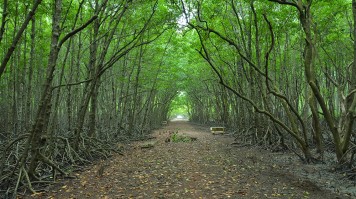
Embark on a day trip from Ho Chi Minh to the Can Gio Mangrove region for your chance to explore the wildlife and learn about the history of this UNESCO designated space. Touring the mangrove and salt marsh forests by boat gives ample opportunity for spotting wildlife along the way like crocodiles and colorful birds. Then head to monkey island for your chance to see dozens of wild monkeys in their natural environment! The Bat Lagoon and Tang Bong Tower are also included in organized tours.
- Good to know: Learn more details about the wildlife, biodiversity, and history and impact of the war on the area at the Can Gio Museum.
5. Pu Mat National Park

This park is one of the highest diversity nature areas in northern Vietnam and recognized by UNESCO as a World Biosphere Reserve. 115 kilometers northwest of Vinh, it is quite close to the Laotian border. Pu Mat’s 180,800 forested hectares are home to nearly 2,500 plant species (including special medicinal plants and rare wood plants), 93 mammal species, 39 bat species, 361 bird species, 459 butterfly species, 86 reptile and amphibian species, 83 fish species, and over 1,000 insect species. To say this park has abundant flora and fauna would be an understatement. Waterfall trekking, wildlife spotting, camping, kayaking, and visiting traditional villages are all worthy activities when visiting Pu Mat.
- Good to know: Pu Mat is the place to visit if you wish to get off the beaten track, see far fewer tourists, and experience a real piece of untouched Vietnamese nature.
6. Phu Quoc Island
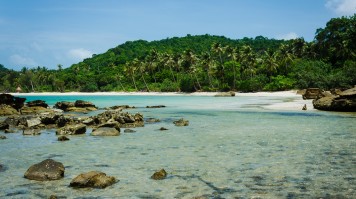
The highlight of a safari on Vinpearl, the southern Vietnamese island of Phu Quoc is accessing the country’s first and only open zoo. Built according to an international safari model, this open zoo preserves and protects rare native species as well as wildlife from other areas of the world. Also, on site is a wildlife park — sprawling grounds with an abundant plant system. Both areas can be toured safari-style creating the perfect set up to view many of the animals and wildlife in their natural habitats.
- Good to know: Admission price here is based on height. For those 1 – 1.4 meters tall the price is USD $22. For those over 1.4m, the price is USD $26*.
Scuba Dive all over Vietnam

Not all of Vietnam’s best nature is above ground. The reefs surrounding the southern hemisphere of the country are worth exploring too. Get your scuba license in the scuba diving hub of Nha Trang and see some awesome Vietnamese marine life while you’re at it. Already a certified diver? Head to Whale Island for lush soft corals and lots of macro life. Another renowned spot is the aforementioned Cham Islands, which claim deep-water pinnacles, diverse coral, and fascinating nudibranch, pipefish, and seahorses.
- Good to know: Nha Trang has some of the most competitive prices in the world forscuba certification and dive packages. If you’re in Vietnam and looking to get certified and do some fun dives, Nha Trang is the place.
Vietnam is a hot-spot for nature tourism thanks to its plethora of national parks and nature reserves. The country has also clearly been a frequent recipient of Mother Nature’s generosity with its gorgeous and complex landscapes and breathtaking seascapes. One thing’s for sure — if you’re a nature buff traveling in Southeast Asia, you’d better put Vietnam on the top of your list.
Related Categories
- How Long To Stay In Vietnam
- Vietnam Travel Advice
- What To Do In Vietnam
- When To Visit Vietnam
- Where To Go In Vietnam
- Previous Post

Popular Destinations
- Europe Tours
- Everest Base Camp Trek
- Italy Tours
- Spain Tours
- Argentina Tours
- Canada Tours
- Sri Lanka Tours
- Chile Tours
- Antarctica Tours
We use cookies to analyze traffic and give you personalized content and ads. It's an essential part of giving you a great site experience. Click on the 'Accept' button if you agree with our use of tracking and analytical cookies. Please refer to our Cookie Policy for more information.

- Culture & Arts
- Ho Chi Minh City
- Attractions
- Phu Quoc Island
- Mekong Delta
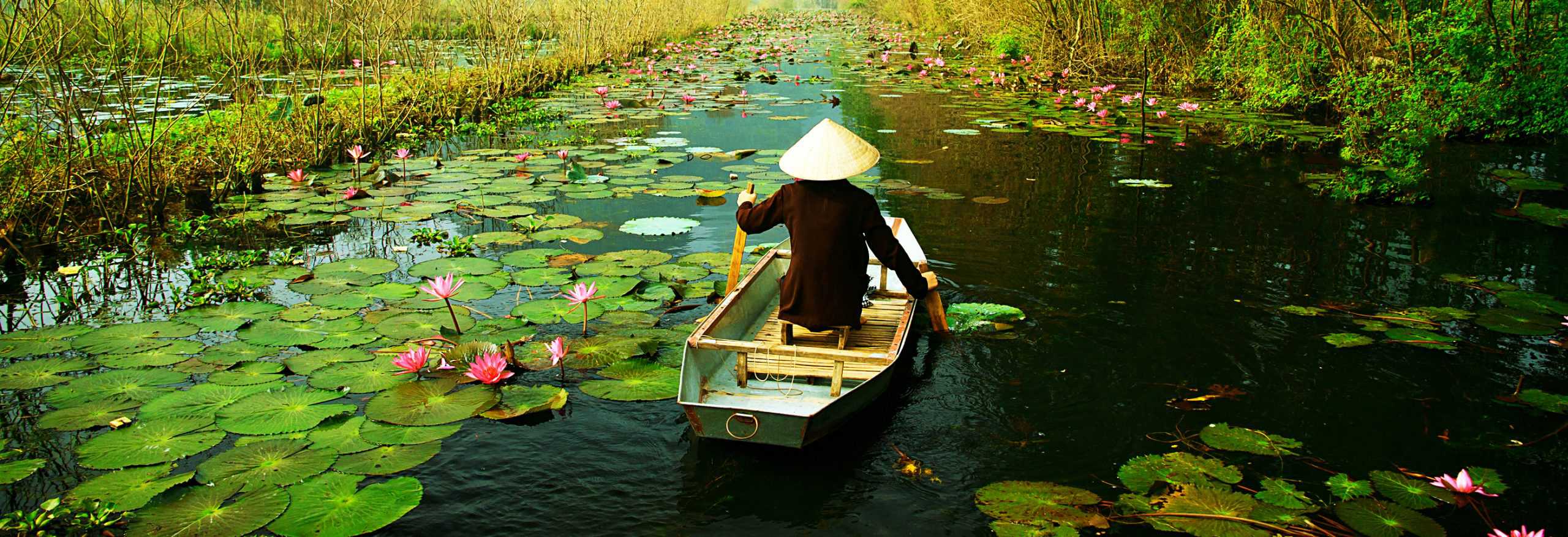
13 Vietnam Off-the-beaten-track Destinations: From North To South
Vietnam is one of the most beautiful countries in Asia. The country attracts a lot of tourists from all over the world by bustling cities, beautiful golden sand beaches, and lush mountains. However, this leads to crowdedness in popular attractions and some places don’t retain their pristine beauty. That’s why many people are looking for Vietnam off-the-beaten-track destinations . So, this article is for you, with all of the most beautiful hidden gems from all the regions of Vietnam.
I. 4 Off-the-beaten-path Destinations in Northern Vietnam
Northern Vietnam, where Hanoi – its capital is located in, boasts for the majestic mountain ranges, centuries-old rice terraces, and interesting ethnic groups with unique cultures. You may have seen the most iconic natural wonders like Halong bay or the craggy mountains in many postcards. But, the real treasures can also be found in the below off-the-beaten-track destinations in Northern Vietnam.
1. Nho Que River
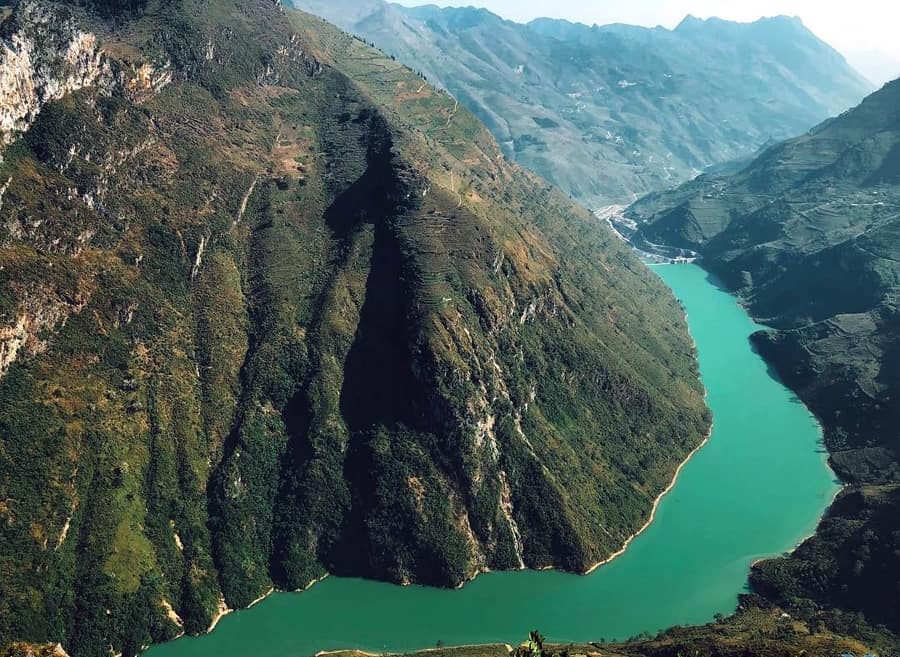
A trip to Ha Giang province would be incomplete without visiting Nho Que River – a beautiful landscape. It is truly a worth seeing off-the-tourist-trail destination for those who want to admire the beauty of Vietnamese mountainous areas but don’t want to visit the touristy Sapa town . The river is 192 km long, taking water from China. Describing this river, there are only fine adjectives including: wild, picturesque, and majestic.
From the peak of the mountains around, you will be able to see the beautiful river like a jade fanciful thread flowing through the 2 lush mountain ranges. The charm of the river still remains as it has just recently been invested in exploiting tourism. Previously, it was used for fishing and hydropower. It will truly be one of the most attractive journeys for you to explore the river’s beauty by a boat.
2. Moc Chau
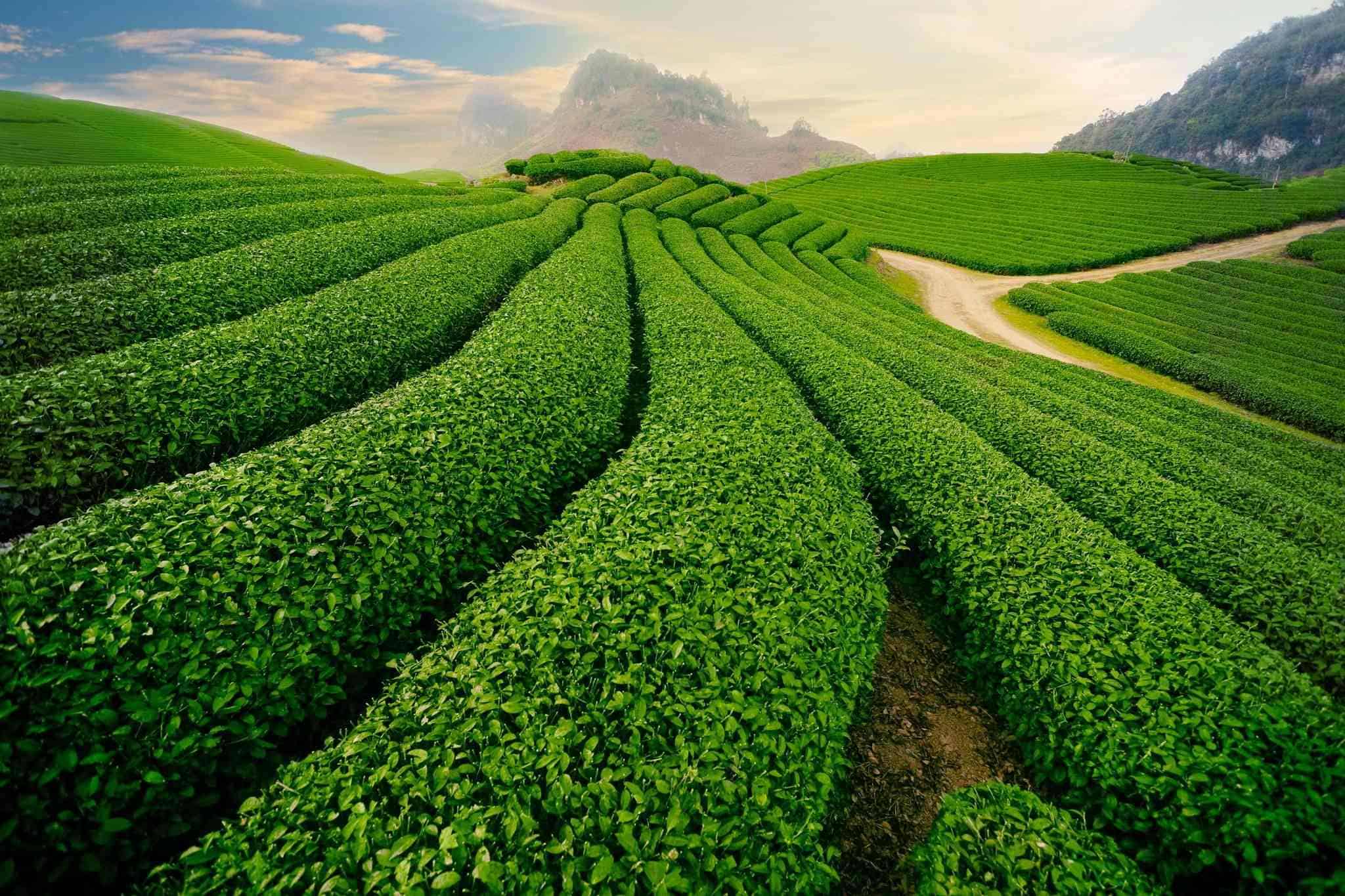
Moc Chau Plateau is a great destination for those who are looking for peaceful landscapes and a relaxing experience. Cool temperatures, tea hills, and ethnic villages, you can find all these in this dreamy plateau which is 200 km from Hanoi. Visiting tea hills is one of the most popular activities in this land of nearly 3000 hectares of green and black tea gardens. The immense vivid hills under the morning sunlight are always a wonderful inspiration for many photographers.
Besides, you can visit nearby Hua Tat village with authentic local culture and breathtaking scenery or admire the romantic beauty of Dai Yem waterfall. If you are lucky enough, you can visit the cauliflower village called Ba Phach in Lunar New Year. During this time, you can get lost in spectacular sights of plump and peach flowers blooming and enjoy the richness of H’Mong and Thai people’s customs and traditions in celebrating the new year. If you like something more adventurous, don’t forget to try trekking Pha Luong mountain with a moderate level of difficulty and wild nature beauty.
3. Pu Luong Nature Reserve
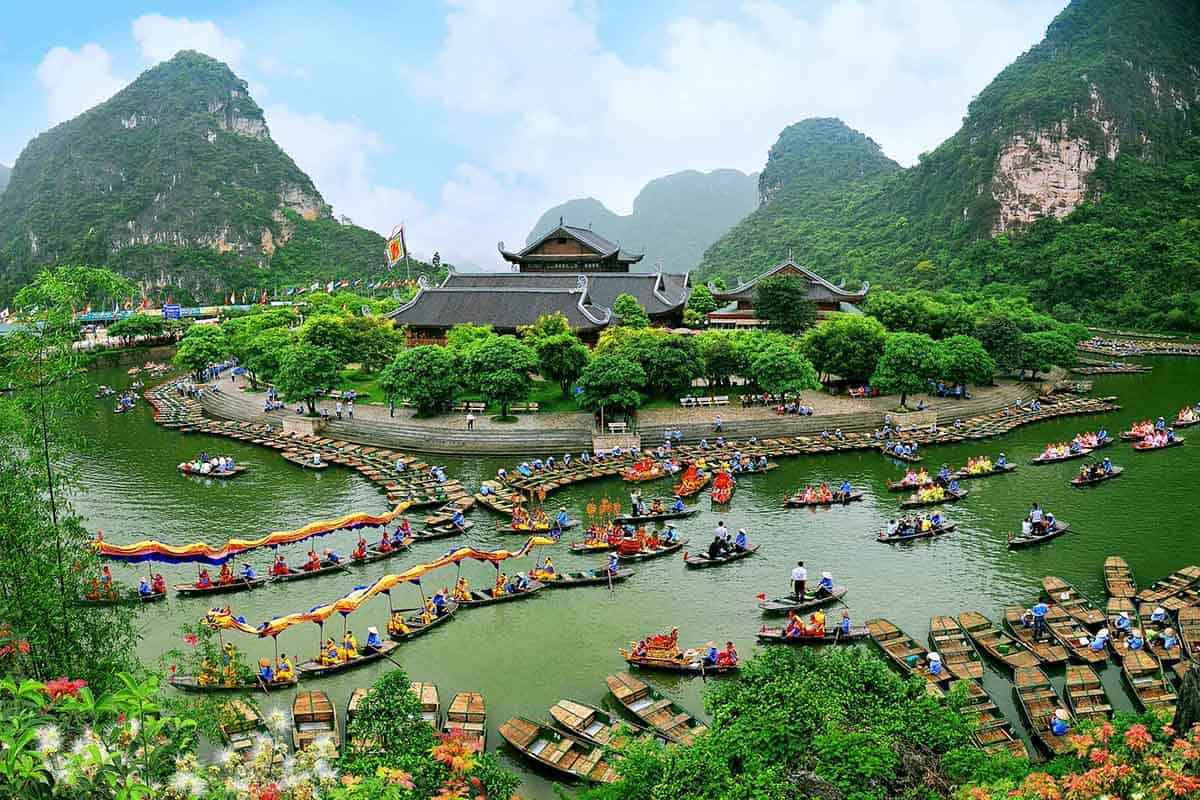
Pu Luong Nature Reserve is one of the less-known eco-friendly trekking spots in Northern Vietnam. Remote, rustic, and supremely beautiful, this is an ideal off-the-beaten-track place where you can feel truly refreshing. In some villages of this nature reserve, you even cannot get 4G connection. It means you really immerse yourself in nature.
About 160 km from southwest of Hanoi, Pu Luong is a wonderful spot for weekend getaways for not only local people but also international visitors. It is well known for the beautiful scenery of 2 mountain ranges on both sides, creating a lush green valley in the middle and dotted with traditional ethnic villages. Coming here, you will get some unforgettable experiences with friendly locals like being invited for a cup of tea or joining a dance after dinner.
- 3), first:(pageNumber == 1 && Math.abs(pageNumber - currentPage) > 3)}">{{ pageNumber }}
4. Ba Vi National Park
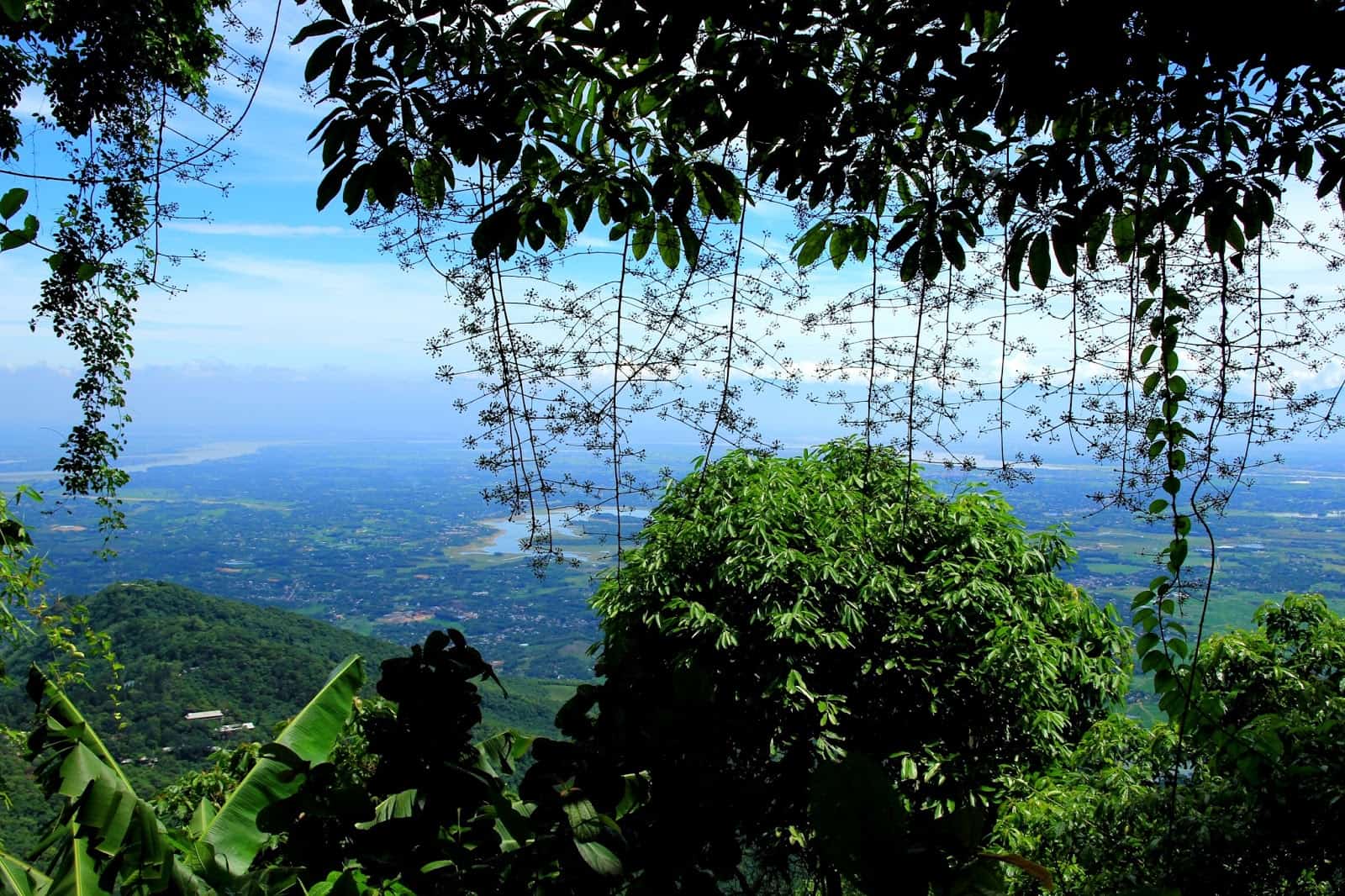
Ba Vi National Park is one of the most outstanding places in Vietnam that offers beautiful natural landscapes and exciting activities for young people. Surrounded by a three-peaked mountain, it offers a relaxing escape from the hustle and bustle of the city with cool fresh air and a mysterious atmosphere of floating clouds and green tropical rainforests. The national park gives you plenty of trekking and sightseeing opportunities in this area of mountains with many trekking trails and mountain slopes.
In addition, there are also some worth-seeing attractions inside the national park like an orchid garden, a bird garden, and a temple. Especially, after 30-minute climbing to the temple, you will have a chance to admire the panoramic view over some valleys. Besides, resorts here also provide you with some special experiences like mud baths, hot springs, wet steam baths.
>>Check Out Our Tour to See Vietnam Northern Highlights !
Ii. 5 off-the-beaten-path destinations in central vietnam.
While northern Vietnam is famous for its spectacular mountain ranges, Central Vietnam boasts for pristine beaches and cultural gems. Though popular places to go are worth visiting, there are still several off-the-beaten-track spots to explore.
1. My Son Sanctuary
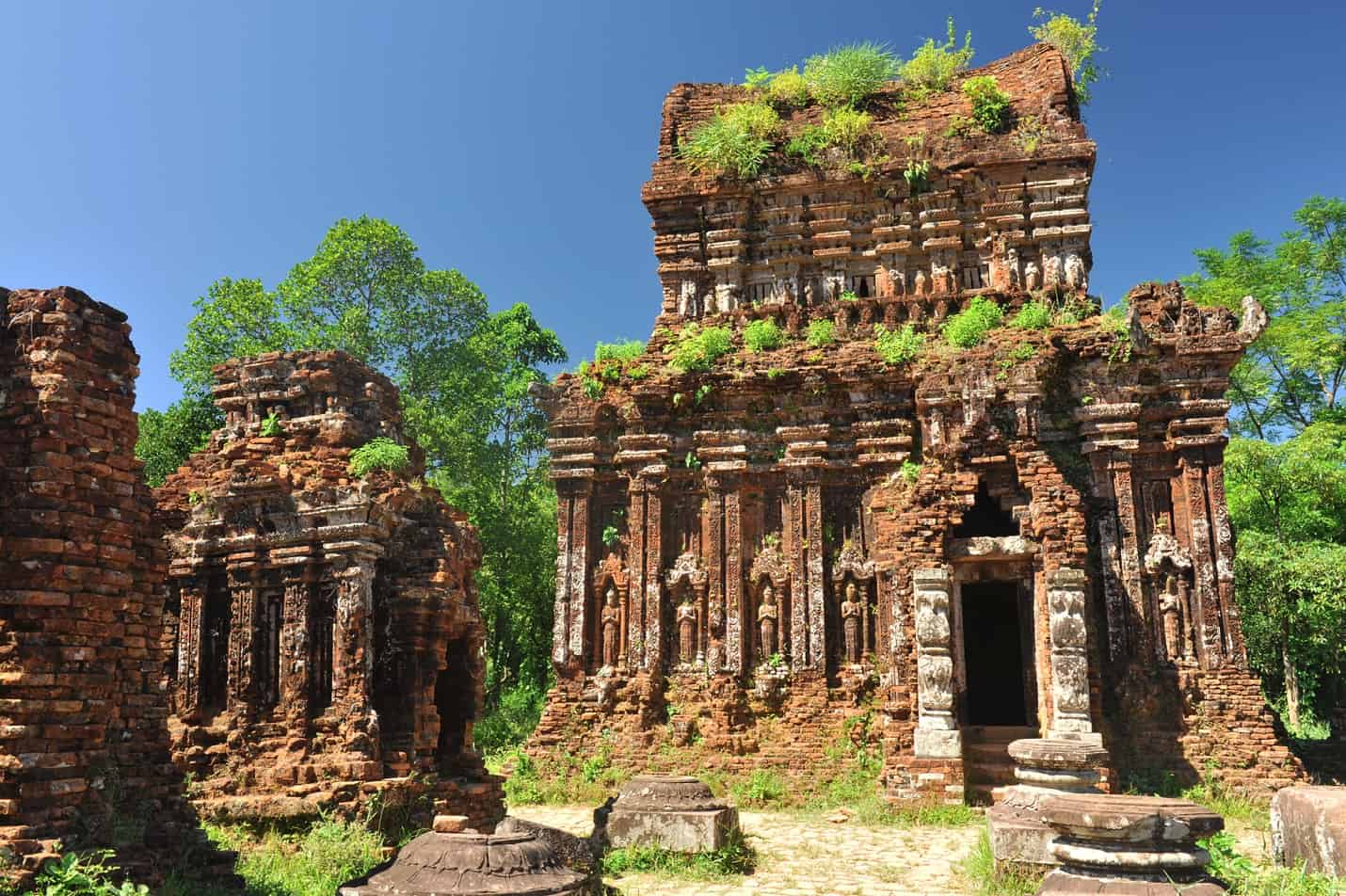
Less than 50 km from Hoi An ancient town , My Son Sanctuary is an extensive collection of Champa ruins amongst the mountains of Quang Nam province. Compared to iconic temples of Angkor, My Son is not quite as extraordinary. However, monuments in this sanctuary are unique and they are truly something you should not miss in your itinerary. The Champa city of My Son bears its historical and cultural significance as it was an important complex occupied from the 4th to the 13th centuries.
There are up to 8 groups of temples and 71 standing monuments in My Son Sanctuary. Throughout the complex, you can find many statues and stelae of Shiva, Vishnu, and Krishna. This proves the great influences of Buddhism on this structure. If you are interested in Champa culture, don’t forget to visit this place on your trip to Vietnam.
2. Hai Van Pass
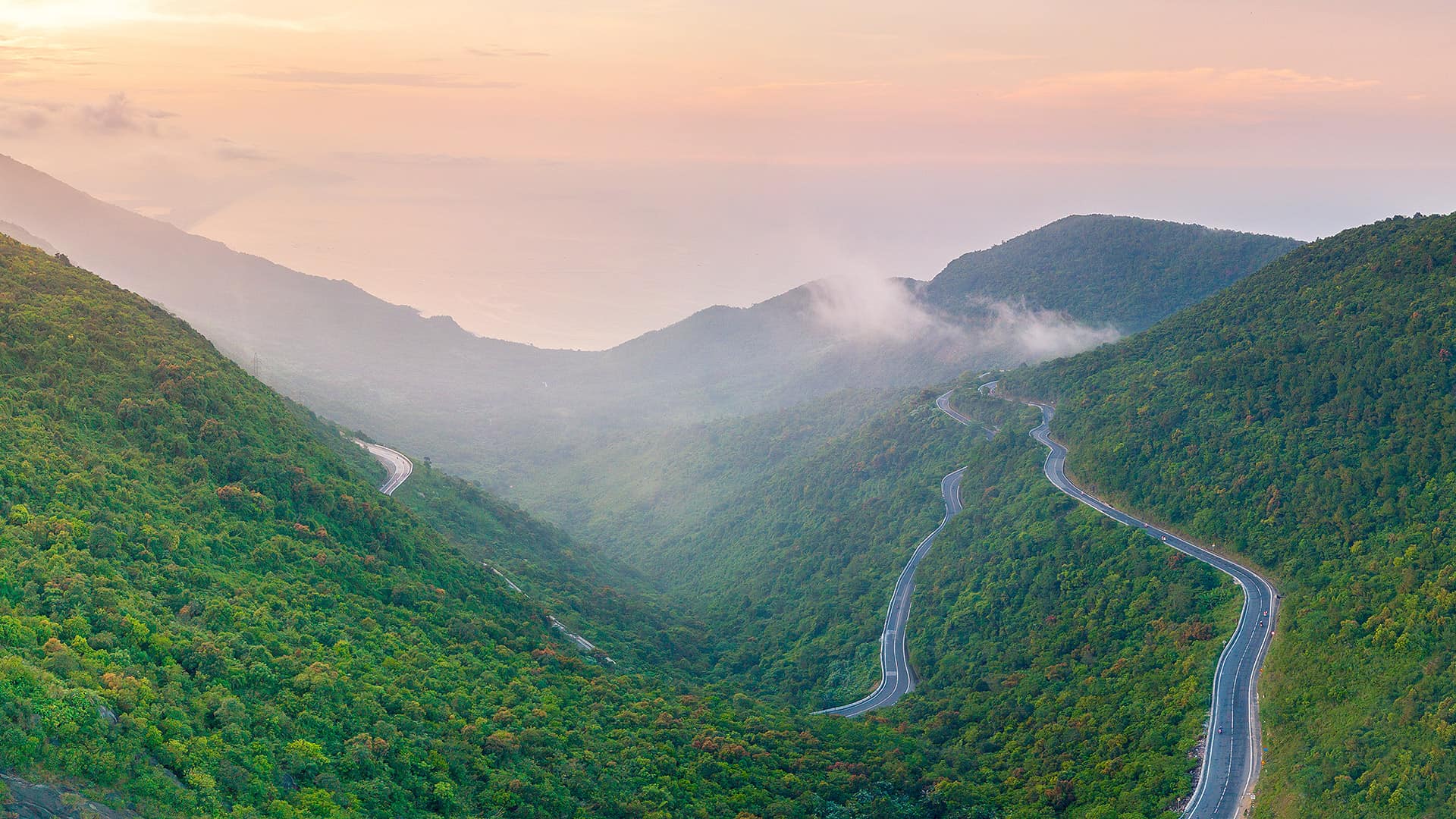
Hai Van Pass , or also known as Ocean Cloud Pass, is a short but scenic route winding around a mountainside above the South China Sea. The pass is very important as it is a climatic divide, a strategic military post in the past, and also a geographic and political boundary among ancient kingdoms. Now, it is a great road that links popular central Vietnam destinations like Danang, Hoi An, and Hue.
Though it’s not the greatest road in the country, it still offers a lot of fun to ride, light traffic, excellent views, and convenient access from several cities. Driving the pass, you will experience 2 feelings: the fear of seeing dangerous bends of the road and the amazement when passing through the clouds and looking at the sea below. So, this place is worth challenging your driving skills.
3. An Bang Ghost Town
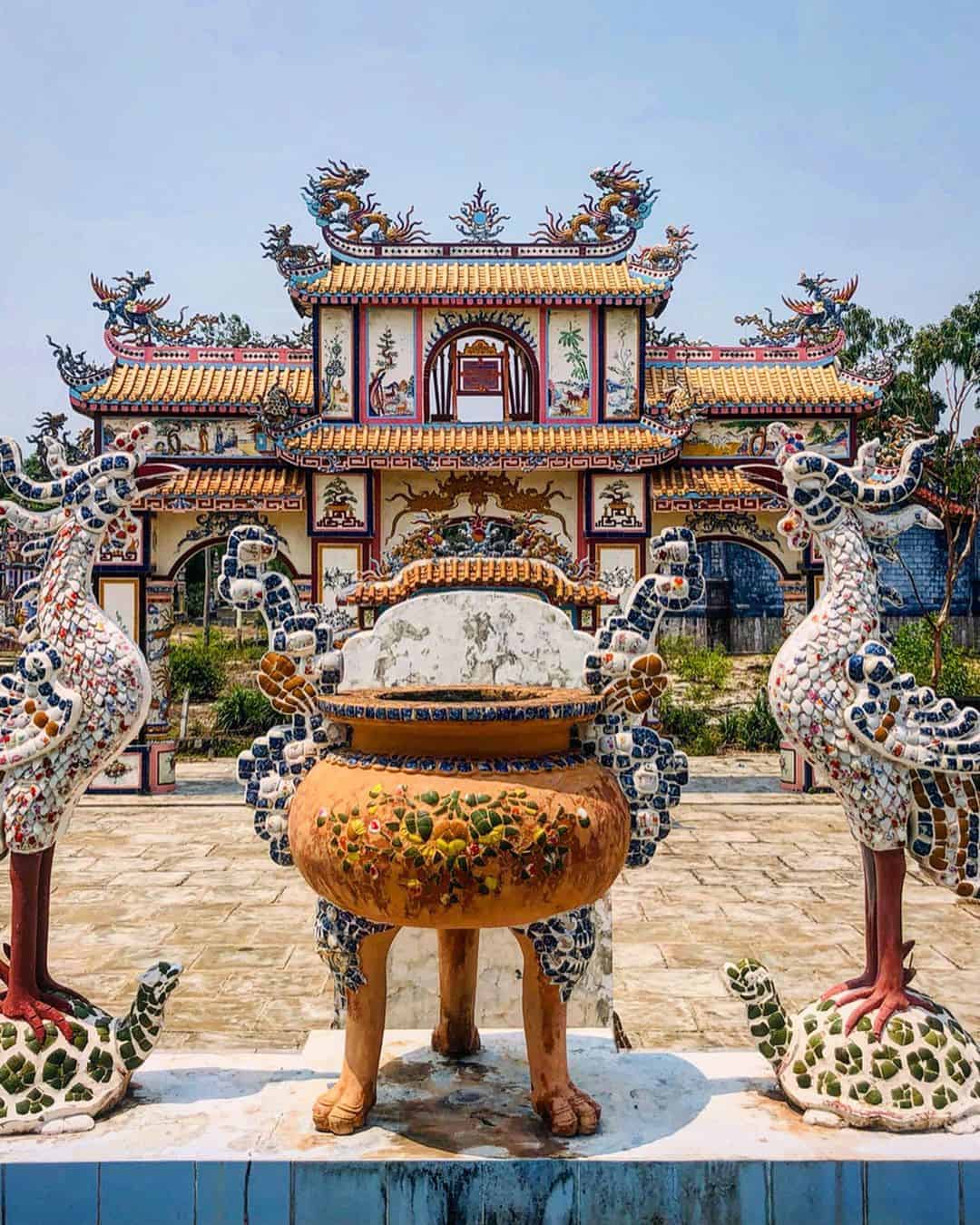
An Bang Ghost Town is located in the village called An Bang in Phu Vang district of Thua Thien Hue province. Following the 49B provincial road, visitors will see this place with hundreds of colossal and colored tombs in all shapes and sizes. The tombs were built by villagers for their ancestors and even sometimes for family members who have not yet died. The cemetery stretches for 3 kilometers in length with hundreds of tombs in different styles like Catholicism, Buddhism, Taoism , Vietnamese, Chinese, and Western, etc.
A tomb here costs from 25.000 to 50.000 USD so the dead can rest in a luxury place. Some of the tombs can be mistaken for mansions as they are too big and beautiful. The regal stone lions are put around and the roof-ridges are often adorned by glittering mosaic dragons. Many tombs are the duplicates of Hue Royal Citadel and Kings’ graves. For example, you can catch images of dragons and phoenixes by glazed terra cotta or potteries on walls.
4. Nui Chua National Park
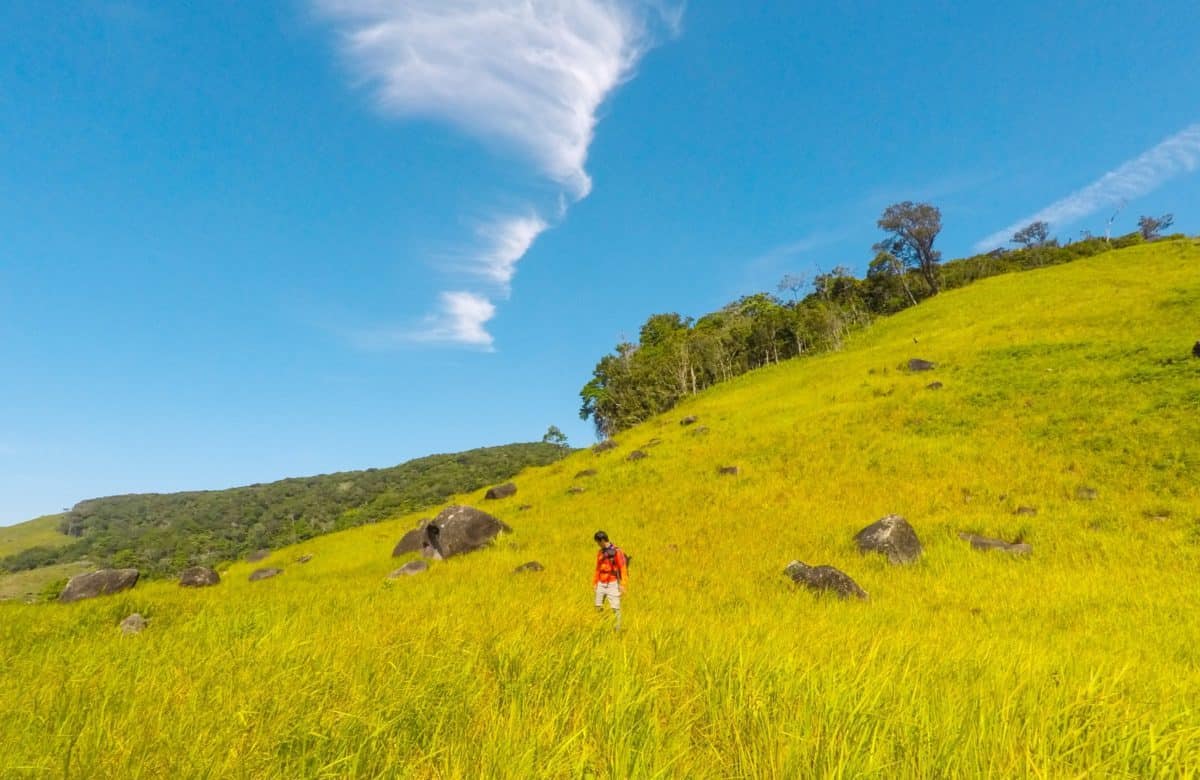
Nui Chua National Park is an off-the-beaten-track destination in South Central Vietnam. Located in Ninh Thuan province, it is one of the largest natural conservation points in Vietnam, covering an area of over 23.400 ha . It is home to a diverse system of creatures and many species here cannot be found in other parts of Vietnam.
Nui Chua National Park attracts tourists with many attractions running along the beaches. You can visit Treo Lake located on the top of the mountain. Though it is located in the driest areas of Vietnam, its water is still blue all year round. After visiting the lake, you can see some relics on the mountain or spend time playing along the beaches.
5. Lak Lake
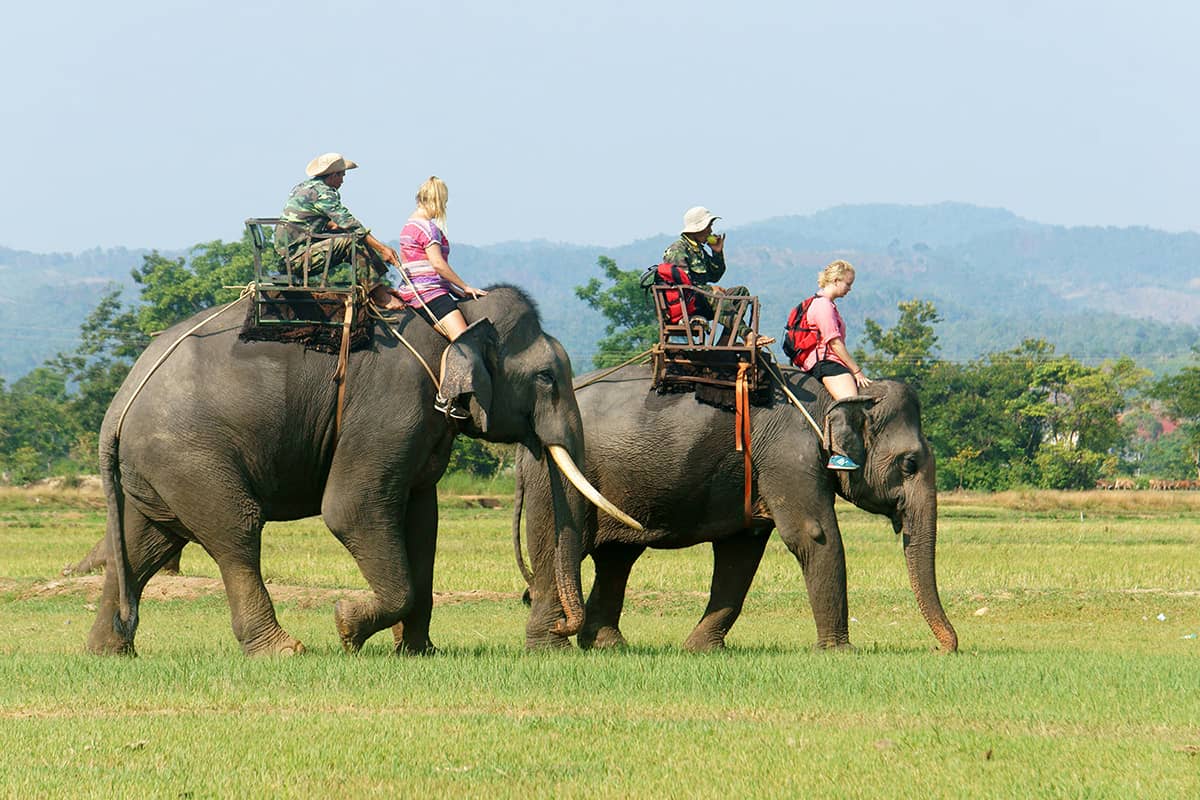
Lak Lake is the largest natural freshwater lake in Central Highland that connects to Krong Ana river. The lake is 5 km wide and its surface is always deep and blue. Surrounded by mountains, the lake has calm water and vast primeval forests with various flora and fauna. Visiting the lake, you can also experience the indigenous culture of central highlands in the nearby villages like Jun and Mo Lieng villages. In these villages, local people still live in traditional long houses with bamboo walls, thatched grass roofs, and having more than 20 elephants.
Not just visiting the lake, visitors will have a chance to enjoy interesting activities like playing gongs , To Rung musical instruments, dancing with ethnic people, riding elephants, and taking a timber boat on the lake. The lake’s environment is protected quite well and you will have a chance to discover 43 species of fish, crabs, shrimps, and snails living in the lake.
III. 4 Off-the-beaten-track Destinations in Southern Vietnam
Looking for not touristy areas in southern Vietnam that give you authentic feelings, check out the below places.
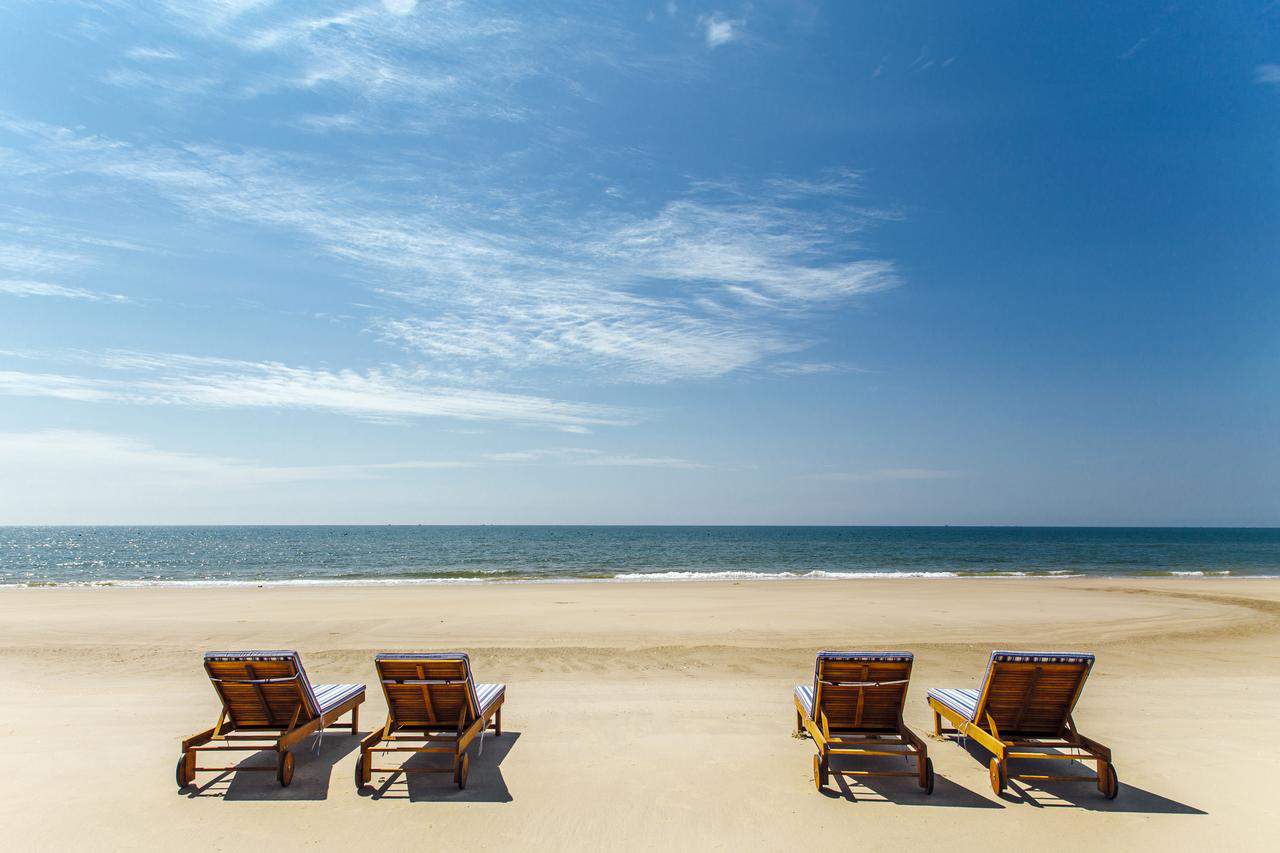
La Gi is a small beach town in Binh Thuan province, located between more popular beach destinations Mui Ne and Vung Tau. With beautiful beaches and peaceful atmosphere, it is a really relaxing place to hang out. There are no modern resorts, luxury hotels and tourist resorts in La Gi, everything here remains pristine which is perfect for you to get away from the noisy and stressful life in big cities.
There are no dull moments even when you spend all day on the beach. Most tourists like wandering along La Gi seashore by bare foot to feel the chilly and smooth sand as well as enjoying the breathtaking beauty of this coastal town. On the beach, you may see friendly local people who mostly earn their living by fishing. Many kinds of seafood are sold right on the beach like squid, crab, lobster, various fishes. Visiting La Gi beach, don’t miss your chance to enjoy grilled gudgeon – a fish specialty in this area.
2. Quy Nhon
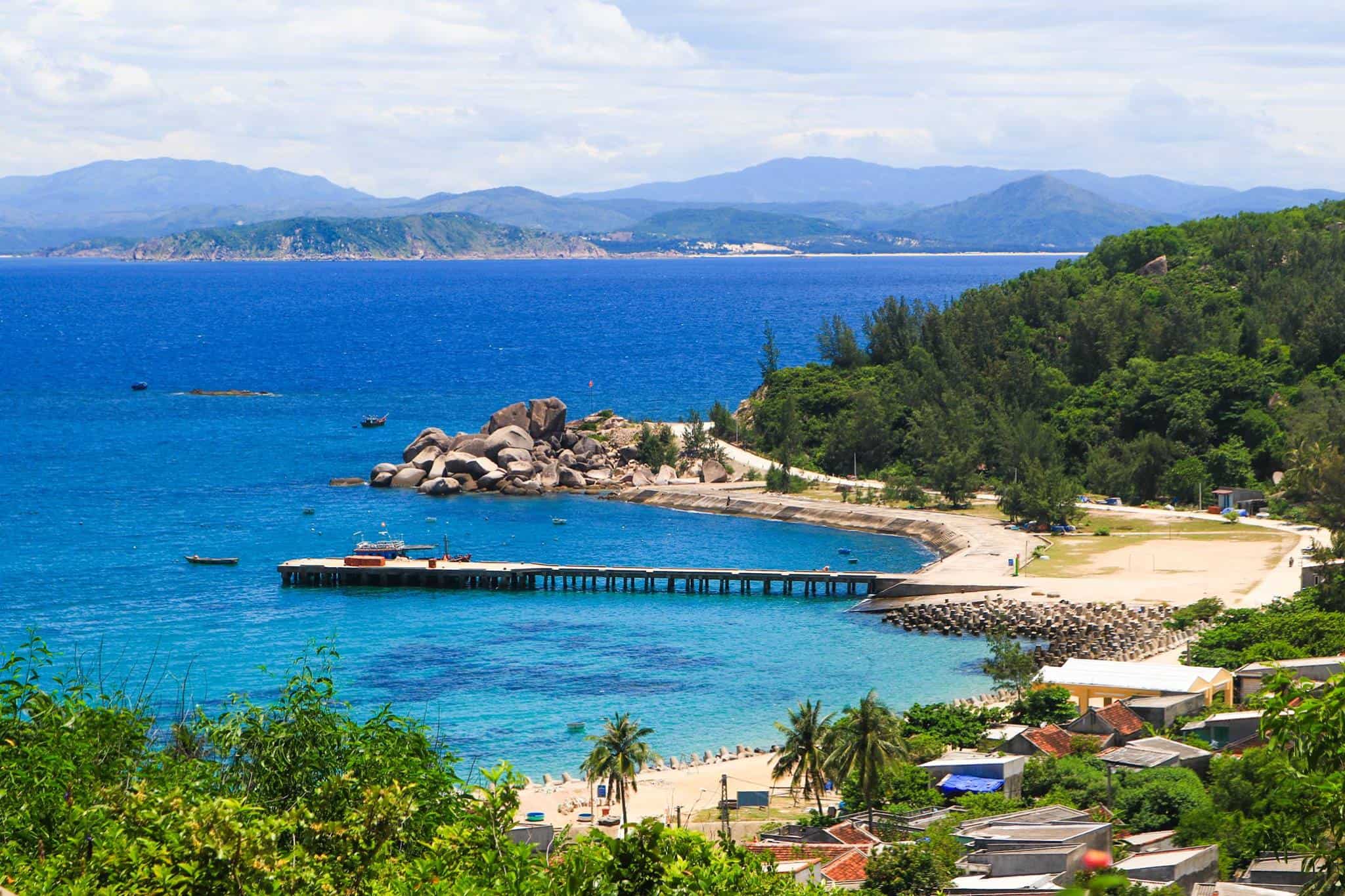
While Vietnam becomes better-known among international visitors, Quy Nhon is still not on the radar of most people. This hidden spot should be on the itinerary of those who want to get to know Southern Vietnam and explore the pristine southern Vietnam beaches as well as the beauty of the country. Despite being a small town, Quy Nhon has a lot to offer and can keep you busy all day. The city is famous for its beautiful and long beaches, namely Bai Xep , Ghenh Rang beach , etc.
You also can easily find some bars and restaurants to grab a cold beer or a quick snack on the beach. Good food is plentiful in the city so you don’t have to worry too much about where to find the food. Besides, if you are a cultural lover, this is also a good place to go. With the highest number of Champa-era ruins, it provides you opportunities to see some impressive Champa towers like Thap Doi and Banh It .
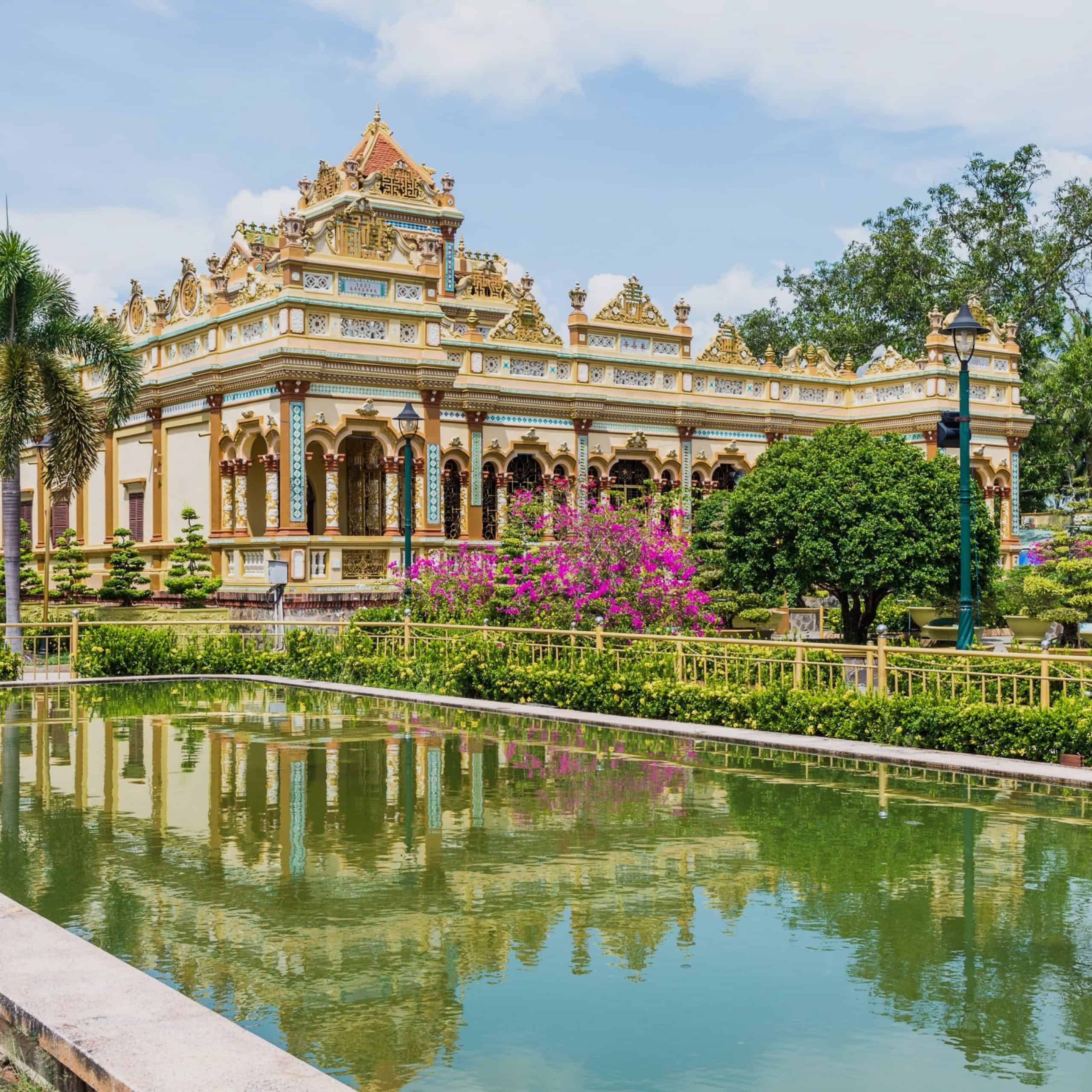
My Tho is your place to go if you are looking for an escape from the hustle and bustle of Ho Chi Minh City. In My Tho, the food is fresher, the air is cooler and life is a little less chaotic. Being the capital city of Tien Giang province, it just takes less than 2 hours from Saigon. Here, you can see Vinh Trang Pagoda with a perfect combination of Vietnamese, Khmer, Chinese, and European styles. The pagoda is well known for its splendid beauty, purity, and solemnity. Or, spend time visiting especially My Tho fruit market , a huge district of exotic fruits and offers many best types of fruits in the Mekong Delta.
Or if you’re a nature lover, Thoi Son island should be on your itinerary. It gives you a strong impression of ancient houses and special cuisine. Renting a boat to the island, you will catch images of gardens, green trees, and enjoy the fresh and cool atmosphere. Local markets also seem to be an interesting place to go where you can try various exotic fruits like durian, mango, longan, and dragon fruit, etc.
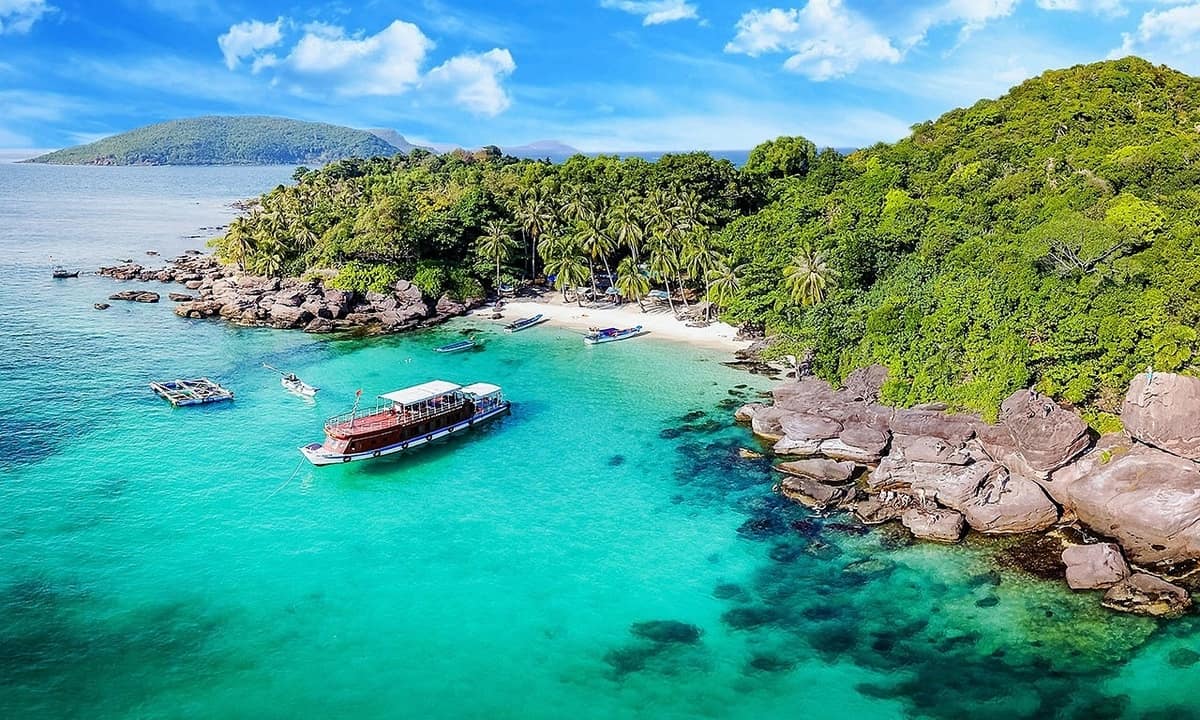
Con Dao Islands are a group of 16 islets just off the southern coast of Vietnam. The island is great for savvy travelers who wish to immerse in nature. Though the place is quite famous for its beauty, not so many people visit the island because it is quite expensive. However, if you love the long sandy beaches with clear water, Con Dao is definitely a good option.
Just wandering around the island, you will find many accessible beaches. Each of them has a wild and unique beauty unlike any other. Some beaches you should visit are Suoi Nong, An Hai, and Dat Doc beaches. In addition to these beautiful beaches, Con Dao island is well known for Con Dao prison – the place that held the most haunting memories of prisoners being tortured in the past. Or, you can visit Con Dao Museum – the repository of many precious items and artifacts.
Which of the above places will be your next destination? Please tell us. Hope these Vietnam off-the-beaten-track will be of help.
Most Popular

Empty Your Pockets with 12 Best Vietnamese Foods That Rock!

10 Best Waterfalls in Vietnam

12 Best Places for Trekking in Vietnam

Top 14 Best Temples in Vietnam to Visit

8 Must-See UNESCO World Heritage Sites in Vietnam
More about top vietnam.

Surfing In Vietnam - The Best Experience No One Should Miss
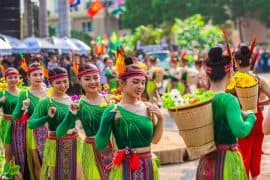
Top 10 Traditional Festivals in Vietnam That Travelers Should Not Miss
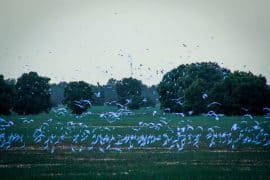
8 Best Vietnam’s National Parks for Wildlife Discovery

Top 10 Things to Do in Vietnam with Kids
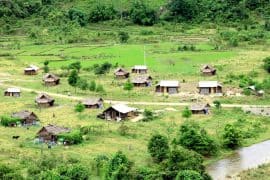
10 Charming Vietnamese Villages to Visit in Vietnam

Is It Really Safe for Solo Female Travelers in Vietnam?
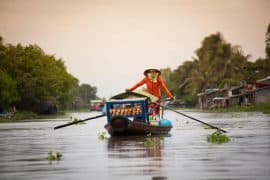
5 Famous Vietnam Floating Markets: Southern Vietnam's Charming Beauty
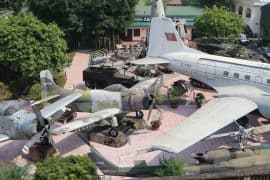
Top 7 Vietnamese Museums Travelers Should Not Miss
Destinations, tours by style.
- Shore Excursions
Travel Guide
- Best Time to Visit
- Getting around
- Transportation
- Best Beaches
- Vietnam Honeymoon
- Travel esim to Vietnam
Our Company
- Responsible travel
- Terms of use
- Privacy Policy
- Recruitment
Connect with us:
- (+84) 989 383 767
- Email: [email protected]
- Hanoi, Vietnam: 23rd Floor, TASCO Building, Pham Hung road, Me Tri, Tu Liem, Hanoi.
- Ho Chi Minh City, Vietnam: 2nd Floor, VIPD Building, No. 4 Nguyen Thi Minh Khai, Da Kao Ward, District 1, HCMC
- Hong Kong: Vietnam discovery Travel Limited Room 1D, 2/F, Fu Tao Building,98 Argyle Street, Mongkok, Kowloon, Hong Kong
Where Do You Want to Go?
- Tell us details of your holiday plan.
- Get multiple quotes from our expert agents, compare, then customize further.
- Select & book the best deal.
- Corrections
A Guide to 6 Natural Wonders of Vietnam
From Ha Long Bay to the Mekong Delta, Vietnam is home to some of the world’s most extraordinary natural wonders.

A long, thin country situated at the eastern edge of mainland Southeast Asia, Vietnam’s topography is spectacular, to say the least. A medley of karst mountains, artisanally crafted rice terraces, and diverse ecosystems, few countries in the world can boast the same variety of pure natural wonderment as Vietnam. Though impossible to fit it all into one article, for those with a love for the artistry of the natural world and its unique relationship with human beings, here is a guide to 6 natural wonders in Vietnam.
1. Ha Long Bay, Quang Ninh

Designated a UNESCO World Heritage Site in 1994, Ha Long Bay is a sublime collection of 1,600 mostly uninhabited karst islands that extend 120 kilometers into the Gulf of Tonkin from the mainland. Protruding from the sea to a height of up to 100 meters, these forest-covered islands collectively form a dramatic and mesmeric seascape unrivaled elsewhere on the planet. In Vietnamese, Ha Long translates to “where the dragon descends into the sea,” where, according to local legend, the unique rock formations were shaped by a noble mountain dragon dropping from the heavens to defend the Viet people from invaders.
A combination of the dragon’s fire and tail subsequently carved out the valleys and crevasses enjoyed by millions of visitors every year. While a more prosaic explanation can be attributed to millions of years of tectonic activity and erosion, it takes nothing away from the sheer magnificence of the scenery.
How to Get There
Get the latest articles delivered to your inbox, please check your inbox to activate your subscription.
Ha Long Bay is located 103 miles from the capital Hanoi and is accessed best by two or four wheels. Trains run but not directly, which means an exhausting 8-hour journey. Overnight boat trips are best organized from Hanoi to avoid the excessively commercialized Ha Long City. Be warned, with Ha Long Bay now a major global tourist destination, ditching the crowds is difficult. However, the few moments you will get alone make it worthwhile, especially for the otherworldly sunsets and sunrises.
When to Visit
The best time to visit is March to May and September to November when temperatures are hospitable, and the rains are absent.
2. The Mekong Delta

Known as the “rice bowl” of Vietnam, the Mekong Delta is one of the world’s largest and most significant. Comprising a vast area of approximately 55,000 square kilometers, the delta is one of the most productive and intensively cultivated areas in Asia and is home to some 20 million Vietnamese. As a result, its biological and cultural significance cannot be understated. A mix of acid green vegetation intersected with innumerable canals and waterways that crisscross the landscape, the delta is home to a truly unique way of life.
Houses either float or are built on stilts, and world-famous markets buoy in the middle of the river and its tributaries. These markets, an example of the way the waters of the Mekong govern all ways of life here, are the product of the tapestry of rice paddies, fruit orchards, and shrimp farms that the river sustains. There is also an enormous range of natural biodiversity here, which makes the delta home to a stunning array of birdlife, aquatic animals, and unique flora and fauna.
While the region is vast, a great place to start is the market town of My Tho, situated one and a half hours south of Ho Chi Minh. Great for a day trip to experience river life, it can also serve as a springboard to delve deeper into the delta or to kick on to the region’s cultural and economic heartland Can Tho (also home to the famous floating markets). Buses and taxis can easily be arranged from Ho Chi Minh City. Again, by far the best way to see the delta is by motorcycle, which will let you experience the essence of local life.
The best time to visit is during the dry season, which runs from December to April. However, despite the rain and humidity, a visit in the wet season (May-November) means the delta will be a lush green water world teaming with life.
3. Trang An Complex, Ninh Binh

Found in the serene Van Long Nature Reserve, seven kilometers west of the regional capital Ninh Binh is the spectacular Trang An Complex . Known as “Ha Long Bay on Land,” this 250-million-year-old geological collection of limestone karsts, grottos, and tropical forests is another UNESCO Heritage Site known for its 200-meter-high rock towers and subterranean cave passages.
The complex also holds important cultural significance as the site of Hoa Lu, Vietnam’s ancient capital under the Dinh Dynasty. Under Emperor Dinh Tien Hoang, the geological landscape of Trang An provided a practical natural barrier to protect the Emperor’s Imperial Citadel. With archaeological evidence of human civilization dating back 30,000 years, Trang An is a fine example of human interaction with the natural environment over the millennia.
One of the best ways to experience Trang An is by taking a boat along the Sao Khe River, where jungle-covered limestone peaks rise on either side amidst verdant green and yellow rice fields. It is no surprise the Park is a favored destination for filmmakers.
Trang An is located 20 kilometers west of the provincial capital Ninh Binh, and 90 kilometers south of Hanoi. Ninh Binh is easily accessed by train or bus from most major Vietnamese cities. The Van Long Nature Reserve is then just a short distance away. There is a host of accommodations both in Van Long and Ninh Binh.
The best time to visit is spring when the temperatures are mild, and the sky is clear. However, for those happy to brace the summer heat, a visit in late May or early June will reward you with fewer crowds and beaming golden rice paddies.
4. Phong Nha National Park, Quang Binh

Located in the middle of the dramatic Annamite Mountain Range, Phong Nha National Park comprises an area of 324 square miles. Protecting over 104 kilometers of caves and underground rivers, it is also one of the oldest and most spectacular limestone karst ecosystems in the world. Phong Nha is also home to a diverse range of aquatic and land-based ecosystems, dense tropical forests, and the largest cave on the planet.
At a length of 5.6 miles and measuring over 200 meters at its widest point, the world’s largest cave, the Son Doong, is vast enough for a jumbo jet to comfortably pass through it. While visitor numbers to the Son Doong are tightly regulated (and prohibitively expensive at $3,000 per person), other caves are more easily accessible and almost as spectacular. With the Phong Nha cave system measuring an astonishing 44.5 kilometers (one of the longest in the world), it houses the Tu Lan, Hang Va, and Hang En caves, which can be explored by overnight tour. The large number of faunae, flora, and animal species found in the park also means Phong Nha is a trekker’s paradise.
With Phong Nha’s popularity soaring both domestically and internationally, there are now plenty of ways the park can easily be reached. The nearest train station and airport are found 45 kilometers east, in Dong Hoi city, which services connections with the rest of Vietnam. The park can also be reached directly from Hanoi by bus.
While the park can be visited all year round, the best time, of course, is in the dry season between April and August. It also makes many of the treks safer. Note that the caves close in the wet season between mid-September and late-November.
5. Ha Giang

Widely regarded as the final frontier of Vietnam’s spectacular natural landscape, Ha Giang is as breathtaking as it is endless. Another UNESCO World Heritage Site situated in the far north of the country, Ha Giang is a mindboggling collection of 1,200-meter karst mountains linked by death-defying mountain passes and dotted with the villages of the H’Mong, Nung, Giay, and Lo Lo, among others.
The region is also another fine example of human’s relationship with the natural world. The Dong Van Karst Plateau is the main draw with its juxtaposition of dramatic karst peaks set amid rice terraces that tumble down the valley walls, while exploration of the surrounding area and the magnificent Vuong Palace will reveal a largely untold history of colonial resistance and opium trading. In a country where mass tourism has begun to firmly take hold, Ha Giang is one final destination in Vietnam, if not the world, where one can embrace and be immersed in a truly unique natural world with little intrusion.
The only way to get to Ha Giang is by road, which means either booking a trip from Hanoi or hiring your own transport. If you pursue the latter, for most, a car is probably the most comfortable way to travel. However, to truly appreciate Ha Giang, it is all about two wheels. Motorcycle hire and tour providers can easily be found in Hanoi or Ha Giang.
The best time to visit is between October and November, as temperatures are cool. May to September is also dry, but it can be hot. Take care in the rainy season between June and August, as the rains make the roads slippery and muddy.
6. Mu Cang Chai, Yen Bai

A symbol of national pride and the country’s agricultural heritage, there is arguably no better portrayal of Vietnam’s natural beauty than Mu Cang Chai. Recently designated by the government as a site of national importance, Mu Cang Chai is layer upon layer of finely tailored rice terraces that snake the landscape with flawless proficiency. Not only a spectacular sight, these collections of terraces are also an integral part of the local culture, some of which have been cultivated for generations.
Timed right, this can be experienced by visitors during the Rice Fields Festival in late September, where one will be exposed to an array of colors, music, and dance. For many, however, the primary reason to visit is “Photographers Road” (National Road 32), which stretches between Tu Le and Mu Cang Chai and is home to some of the most picturesque rice terraces in Southeast Asia.
Again, much like the rest of Vietnam, there is no better way to explore this geological and anthropological marvel than by motorcycle, but it can also be done by car. There are also numerous treks and homestays scattered throughout to allow one to enjoy Mu Cang Chai for as long as one wishes.
Roughly a six-to-eight-hour journey by road, Mu Cang Chai is located 300km (186 miles) northeast of Hanoi. Buses and private transport can easily be arranged through your accommodation, as can motorcycle hire. If traveling by public transport (train is also an option), head to Yen Bai and then grab onward transit to Mu Cang Chai.
Mu Chang Chai can be visited all year round, with each season endowing a unique set of characteristics on the landscape. Summer is characterized by verdant acid-green surroundings, while in Autumn, arguably the most spectacular time to visit, the hills turn bright yellow as the rice approaches harvest. In winter, as the terraces fill with water and wait for the spring, it can be a photographer’s dream as sunrises and sunsets create endless reflections that stagger the hills like a hall of glowing mirrors.

What Are the Seven Wonders of the Natural World?

By Cameron Mason MA Social Anthropology, MSc Comparative Public Policy Cameron is a freelance writer currently based in Vietnam. He has an MA in Social Anthropology and an MSc in Comparative Public Policy, both from the University of Edinburgh.

Frequently Read Together

UNESCO World Heritage Sites: 10 for Archaeology Enthusiasts

Paris of the East: 5 Cities That Remind Us of the French Capital

How Did Hydro-Engineering Help Build The Khmer Empire?
- Skip to right header navigation
- Skip to main content
- Skip to primary sidebar
- Skip to footer
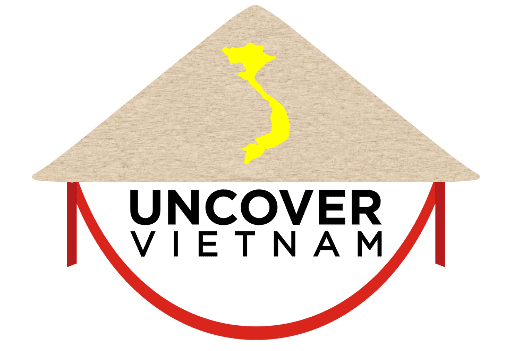
- Transportation

Best Places to See Wildlife in Vietnam
While protecting Vietnam’s incredible biodiversity has become a primary goal of many conservation organizations, these sites also provide visitors with the best places to see wildlife in the country. Home to more than 50,000 recorded species, roughly 6% of the world’s, scientists think that is only scratching the surface of the country’s biodiversity.
After decades of war, illegal logging, and wildlife trafficking, protecting this land has become vital, and while not all of it is accessible to tourists or locals, the areas that are while leaving you in awe. From national parks and reserves to forests and coastal regions, here are some of the top places to see wildlife while visiting Vietnam.
National Parks
Vietnam has a whopping 20 national parks throughout the country. These parks highlight Vietnam’s wide array of landscapes, climates, fauna, and flora. The first national park, Cuc Phuong, was officially declared in Vietnam in 1962 but it wasn’t until the 1990’s that Vietnam really started focusing on protecting land.
Cuc Phuong National Park
In 1962, President Ho Chi Minh crowned Cúc Phương as Vietnam’s first official national park. Located in the foothills of the Annamite Range and just west of the majestic Red River Delta, this park is home to a wide variety of species and a large portion of Vietnam’s Muong community.
Primates, birds, and butterflies remain the park’s biggest attraction along with three designated conservation centers: the Endangered Primate Rescue Center, the Carnivore and Pangolin Conservation Program, and the Turtle Conservation Center.
Ba Be National Park
Ba Bể Lake is a freshwater biodiversity hotspot in Northern Vietnam. It is the nation’s largest freshwater lake with a length of around 9-kilometers. It’s surrounded by limestone hillside and lush evergreen forests that support species such as Chinese Pangolins, European otters, and red giant flying squirrels among hundreds of other terrestrial and aquatic species.
39 square miles of protected freshwater habitat makes Ba Bể National Park one of Vietnam’s most precious wildlife destinations.
Cat Tien National Park
Perhaps the most famous national park in Vietnam with the richest collection of wildlife, Cát Tiên protects almost 300 square miles of lowland forest in the south of Vietnam. It’s home to many of Vietnam’s conservation programs, including the reintroduction of Siamese Crocodiles and the unknown status of the Vietnamese Javan Rhinoceros.
Kiem Lam (VN Forest Rangers) are deployed to manage the park for illegal logging, poaching, or other activities. This level of management makes Cát Tiên National Park the premier wildlife park in the country.
Tam Dao National Park
Just north of Hanoi is the Tam Dao Range where Tam Dao National Park is split into two distinct climatic portions. Due to this, the park has two different bubbles of vegetation, flora, fauna, and terrain and is known for supporting populations of some of Vietnam’s more rare reptilian and amphibian species .
Some travelers have reported seeing these endangered species being served in local establishments. Visitors to the park will likely start off in Tam Dao Village, where entry into the park’s wild spaces is available to tourists. Unlike some of Vietnam’s more well-known parks, Tam Dao doesn’t have well-established wildlife tourism industries and there are no structured conservation projects going on in the park.
Phong Nha-Ke Bang National Park
UNESCO gave this park listing as a world heritage site in 2003 citing its incredible biodiversity and regional geological features as the main reasons for doing so. The real claim to fame of Phong Nha-Ke Bang is its enormous cave system.
The park has over 300 currently known caves that spread out over a 126 km system. In addition to the caves, which are accessible by guided tours, the park is home to a full suite of Vietnamese wildlife such as Asian Sun bears, Pangolins, multiple species of vulnerable primates, and countless birds and insects among many more.
Pu Mat National Park
Pu Mat National Park is located smack dab in the middle of the Annamites and is known as being one of Vietnam’s most important parks for mammalian conservation. Species such as the pangolin, the Saola, and the Annamite Striped Rabbit can be found here.
Pu Mat is not an easily accessible park and there are limited guided tour options so those who wish to adventure this park’s rugged trails and back-country need to do so with a sincere consideration of the risks.
Vu Quang National Park
This park is perhaps one of Vietnam’s most underrated national park destinations. Nestled in the remote forests of central Vietnam and on the border of Laos, Vu Quang is a minimally traveled national park and thus still represents some of Vietnam’s most genuinely wild forest.
In fact, up until 2000, scientists were still discovering new species of megafauna here such as the Saola and Giant Muntjac. Because of its remote location, there are limited resources such as tours, and finding your way to the park can be a challenge. That said, it’s certainly worth it.
Bach Ma National Park
Just 18-km from the coast you can find yourself at the summit of Bach Ma, which sits at nearly 5,000-ft in elevation. Bach Ma is an easily accessible park in the Annamites and protects a diverse array of habitats and species making it an eco-tourists dream destination.
Entry to the park can be had by foot, motorbike, or a park guide. If a guided tour is up your alley, Bach Ma National Park is a well-oiled machine relative to some of the other more rugged parks in Vietnam.
Yok Don National Park
While Cat Tien often gets the limelight as Vietnam’s conservation park capital, Yok Don National Park is part of perhaps the most important protected region in all of southeast Asia. The park provides protection and buffer zones to protect areas of species like the Indochinese Tiger, Indochinese Leopard, and the Indian Elephant.
There are plenty of guided tour options in the park including those that target a certain species (like elephant tours) or overnight backcountry backpacking adventures.
Nature Reserves & Forests
Before being listed as a National Park in Vietnam most areas are set up as Nature Reserves or ecological forests first. Even though they might not carry the weight of a title like “National Park” some of Vietnam’s nature reserves are perhaps even more jaw-dropping than the national parks themselves.
Tra Su Cajuput Forest
The mighty Mekong River leads to the grand Mekong Delta and there is where you’ll find some of the world’s most species-rich wetlands. During the rainy season, Tra Su becomes a flooded forest sea of bright green as the water is colored by water ferns. In fact, Tra Su is Vietnam’s most important mangrove system.
Boating tours, some kayaking, and without a doubt bird watching are common activities to partake in at Tra Su.
Can Gio Biosphere Reserve
Another mangrove and another UNESCO heritage site, the Can Gio Biosphere Reserve is considered as the lungs of its nearest urban neighbor, Saigon. Mangroves like this one are the first and last defense against rising sea levels for cities like Ho Chi Minh City .
If the timing is right, birdwatching at Can Gio can be world-class with species like the Spot-Billed Pelican making an appearance as well as other exciting flora and fauna to explore. It’s easy to access from the city and thus there are countless tour options. Choose wisely!
Kon Cha Rang Nature Reserve
Deep in the Truong Son Mountain Range is Kon Cha Rang, an underestimated gem of Vietnam’s natural world. Cascading waterfalls, ruggedly beautiful backcountry mountain forests, and countless river systems have carved out a biodiversity haven in Kon Cha Rang Nature Reserve.
If you’re willing to venture through the challenges that such a remote park might present, hiking to Hang En Waterfall is an absolute must.
Pu Luong Nature Reserve

Rice field terraces meet lush mountain forests at Pu Luong Nature Reserve . Visitors have the chance to explore an ethnic Thai village, hike to the peak of Mt. Pu Luong or partake in some local villager crafting workshops among many other experiences. The fauna and flora of Pu Luong are closely related to that of Cuc Phuong which is just 20 km away.
Coastal Areas
Vietnam isn’t lacking in the beautiful beaches department nor is it running low on rugged coastline. If wildlife is what you’re after there are certainly some of the more popular beaches that are worth your time, however, some of these sights are really only home to seagulls and small critters.
Quan Lan, Bai Tu Long
A quiet island on the outskirts of Ha Long Bay, Quan Lan is a quiet island with relatively few permanent residents. It’s somewhat of a challenge to reach although it does have multiple small ports where visitors can disembark.
What that all means is that it’s pretty much untouched and is one of Vietnam’s most pristine and gorgeous islands especially for those looking for a remote island experience that might produce some marine wildlife sightings. Some locals might be willing to take visitors out on watching tours but it’d be hard to find a professional outlet on this island.
Ha Long Bay
The marine life in any bay is usually abundant as oceanic processes usually accrue water and sediments with a bevy of nutrients in bays. Ha Long is a beautiful region of coastal islands in the north of Vietnam, Quan Lan being one of them. The picturesque limestone cliff islands pepper Ha Long Bay and makes for a once-in-a-lifetime backdrop for numerous wildlife-focused bay cruise tours.
Hon Ghom Peninsula
A lesser-traveled slow-paced beach region of southern Vietnam, the Hon Ghom Peninsula is home to lush forest mountains that are dipping their toes into the South China Sea. It’s not super remote or ruggedly pristine but it is a small piece of old coastal Vietnam where small fishing communities still rely on the sea for sustenance.
Safaris and Zoos
If venturing into the wilderness isn’t your cup of tea, Vietnam also has multiple safaris and zoos around the country. Home to other fun attractions, as many of these reside within amusement parks, you can spend an entire day with the family enjoying these locations.
VinPearl Safari Phu Quoc

VinPearl Safari offers an exotic getaway in Phu Quoc designed for not only children and families but also couples looking for a little romance. The park is divided into 5 sections consisting of a safari, open zoo, reptile area, bird barn, and primate zone.
Saigon Zoo and Botanical Gardens
Established in 1865, the Saigon Zoo and Botanical Gardens has developed into a thriving ecosystem that is home to 600 animals and over 200 plant specimens. Home to one of the world’s oldest zoos, this Ho Chi Minh City attraction is great for a quick day trip with the family.
VinWonders Nam Hoi An

At VinWonder Nam Hoi An , visitors can take a river safari ride to see the park’s birds, primates, large predators, and ungulates. Sit back and relax while viewing a vast array of wildlife and make sure to grab a souvenir at the end.
Plan Your Wildlife Expedition
No matter where you plan to visit, or where you’re going during your trip, you’re sure to be surrounded by incredible landscapes and creatures of all shapes and sizes. These national parks, nature reserves, forests, and coastal areas are sure to provide you with many memories as well as plenty of stellar photos. So grab some comfy shoes and get ready to explore!

Uncover Vietnam
- Privacy Policy
- Disclaimer—Terms of Service
Travel Guide
- Travel Blog
- Vietnam Activities
- Vietnam Towns
- Vietnam Transportation
- Vietnam Hotels
- Vietnamese Culture
- Vietnam FAQ
Disclosure: Uncover Vietnam is a participant in the Amazon Services LLC Associates Program, an affiliate advertising program designed to provide a means for sites to earn advertising fees by advertising and linking to Amazon.com.
You are using an outdated browser. Please upgrade your browser to improve your experience.

Vietnam is chock-full of forested peaks, thundering waterfalls, and breezy coastline, so it’s no wonder the country is luring more and more outdoor enthusiasts. With so many options at your fingertips, you may need a second (or third) trip to take it all in. And while there are plenty of pulse-pounding activities, Vietnam also presents more leisurely ways to enjoy its vast natural attractions.
striking scenery
One thing is for sure, Vietnam is a country of diversity. If you love nature, you’ll have countless appealing destinations to choose from. Long-distance cycling and motorbike trips are ideal for soaking up views of gaping mountain passes and sun-drenched rice fields. Vietnam offers water babies excellent scuba-diving in Nha Trang, kite-surfing in Mui Ne, and sparkling beaches in Phu Quoc and Con Dao. Cruise and kayak through majestic Halong Bay, or test your legs in the epic cave systems of Phong Nha-Ke Bang National Park. For a romantic stay, plan a riverside retreat in the Mekong Delta or head to the forests of Dalat. When it comes to enjoying nature in Vietnam, the list is truly exciting, and possibly endless.

Check out upcoming events in Vietnam
- You are here:
- Things to do
Create an account
Already have an account? Click here to sign in
By clicking submit, you agree to our Privacy Policy and Terms of Use
Sign in with your social accounts
Sign in with your email
Forgot password? Click here to get it back
Don't have an account? Sign up here
Forgot Password
The entered email has subscribed for Vietnam Tourism monthly newsletter

- € EUR

Best Places To Visit In Vietnam

Published on: September 12th, 2024
Last updated: September 12th, 2024
Vietnam is a long and narrow nation on the edge of South East Asia, home to around 100 million people and dozens of destinations worth visiting. It’s a place of radiant natural beauty, complex and compelling history, widely beloved cuisine and enthralling urban culture.
Vietnam’s attractions range from sublime tropical beaches to misty mountain oases. Our travel designers have crossed the country in search of the most magical cities, secluded sanctuaries and spectacular views. Here are their picks for the best places to visit in Vietnam.
Ho Chi Minh City - Hue - Hanoi - Halong Bay - Mekong River - Nha Trang - Sapa - Hoi An - Phu Quoc - Dalat

Ho Chi Minh City
Ho Chi Minh City , which was known as Saigon until 1976, is home to about 10% of Vietnam’s population. It’s constantly busy and beautifully chaotic, with a thriving culinary culture and street food scene. It’s also brimming with history, from intricate pagodas and French colonial architecture to the poignant War Remnants Museum.
Need to know: About an hour’s drive outside the city you’ll find the Cu Chi Tunnels, which played a vital role in the Vietnam War (called the American War here). Touring them is one of the best things to do in Vietnam .

Located just up the coast from Danang , Hue offers a glimpse into Vietnam’s Imperial past. It was the heart of the Nguyen Dynasty: the country’s final royal dynasty, which ended in 1945. Although large parts of the city were destroyed during the wars of the 20th century, remnants of its illustrious past are everywhere.
Need to know: We highly recommend a sunset cruise on the Perfume River, as well as a boat trip to Thien Mu Temple to see its iconic seven-story pagoda.

Visiting Hanoi , the country’s spellbinding capital, is a chance to experience the very best of Vietnamese culture and cuisine. There are markets, museums, live performances and art galleries – but also singular spots like Ho Chi Minh’s Mausoleum and Hoa Lo Prison. We can organise street food tours led by local experts on foot, by Vespa or on a vintage motorcycle.
Need to know: Hanoi is one of the best places to visit in Vietnam all year round, but the weather is cooler and drier from November to April.

Halong Bay is a UNESCO World Heritage Site and an absolute must-see in northern Vietnam. Part of the gorgeous Cat Ba Archipelago, it’s known for its stunning limestone islets, rock formations, emerald waters, caves and coves. Spend a couple of days on a luxury junk (traditional sailing vessel) to explore all the hidden corners of this legendary bay.
Need to know: Cat Ba Island is not to be missed, with a national park inhabited by rare golden-headed langurs and many other majestic animals.

Mekong River
The Mekong River flows all the way from the Tibetan Plateau to southern Vietnam, where it feeds the bountiful farms and rice paddies of the Mekong Delta. It’s well worth spending several days here aboard a sumptuous ship like the Aqua Mekong , which offers plenty of exciting excursions plus unparalleled onboard comforts.
Need to know: You can easily combine Vietnam and Cambodia in the same trip by opting for a cross-border cruise between Ho Chi Minh City and Siem Reap .

If you want to escape to somewhere a bit more serene, consider the quiet beaches surrounding Nha Trang . The city itself is bursting with busy resorts, but nearby you’ll find tranquil stretches of sand and bucolic countryside. Wellness seekers will enjoy hot springs and mud baths, while intrepid adventurers can go scuba diving in the South China Sea.
Need to know: Stay in a waterfront villa at Fusion Resort Cam Ranh just south of Nha Trang, or at Six Senses Ninh Van Bay to the north.

The lofty town of Sapa is a hiker’s paradise, surrounded by the Hoàng Liên Son Mountains and panoramic views of terraced rice fields. Located close to the Chinese border, it attracts many travellers hoping to climb Fansipan (the highest peak in Indochina). There’s also plenty of local culture to learn about, including that of the H’mong and Red Dao minority groups.
Need to know: It takes several hours to summit Fansipan on foot, but for a more leisurely experience you can take a scenic cable car journey to the top.

Boasting an eclectic mix of cultural influences, Hoi An is a truly enchanting town on Vietnam’s central coast. Much of the old quarter is pedestrian-only, and the streets are illuminated by colourful lanterns at night. Add to that hundreds of historic houses, temples and pagodas, and there’s no way Hoi An could fail to capture your imagination.
Need to know: To experience one of the world’s best luxury railway journeys , travel from Hoi An (via Danang) to coastal Quy Nhon on the opulent Vietage Train .

If swaying palms and fresh seafood sounds like your style, Phu Quoc should be at the top of your list. Located in the Gulf of Thailand off the country’s southwestern coast, it’s the largest island in Vietnam. Here you’ll find white sand beaches, lush forests and various culinary specialties, including blue crab, sea urchin, native mushrooms and fish cakes.
Need to know: Phu Quoc has several excellent hotels; stay at La Veranda for classic elegance or The Shells Resort for minimalist luxury and a world-class spa.

Located a few hours inland from Nha Trang, Dalat is nicknamed ‘the City of Eternal Spring’ thanks to its pleasant weather and verdant surroundings. It also stands out for its distinctive French influence – including colonial villas and pastry shops – which creates an interesting contrast with the authentic culture of the Vietnamese highlands.
Need to know: The best time to visit Vietnam ’s central region is generally January through August, but Dalat is at its best during the dry season from December to March.
Whatever you want from your adventure in Vietnam, our travel designers are ready to help:
Trip Inspiration
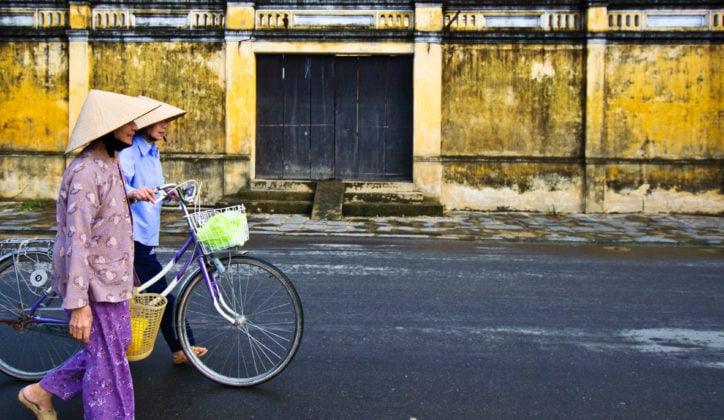
Travel Guides

Top Things to Do in Vietnam

When is the Best Time to Visit Vietnam?


IMAGES
VIDEO
COMMENTS
Hang Son Doong. Hang Son Doong (Mountain River Cave) is known as the world's largest cave, and is one of the most spectacular sights in Southeast Asia, with access only approved by the government in 2013. This enormous cave was discovered quite recently. Ho Khanh, a hunter from a jungle settlement close to the Vietnam-Laos border, would often ...
Cuc Phuong National Park is a top place to go hiking. Established in 1962, this national park, three hours south of Hanoi, is one of Vietnam's most important protected areas. Though wildlife has suffered a precipitous decline in Vietnam in recent decades, the park's 222 sq km (86 sq mile) of primary tropical forest remains home to an ...
Hang Son Doong Cave. Deep in the jungles of Phong Nha-Ke Bang National Park, you'll find Hang Son Doong, the world's largest natural cave. It was discovered in 1991 by a local man named Hang Son Doong but wasn't fully explored and open for tourism until 2013. The cave features massive caverns with its own ecosystem, including jungles and ...
Ho Chi Minh City. Ho Chi Minh City Hall. For big city fans, no visit to Vietnam is really complete without a visit to Ho Chi Minh City, the buzzing commercial hub of the country. The streets are an insane clog of motorbikes and cars, the restaurant and café scene is incredibly cosmopolitan, and the shopping is the best in the country.
10. Ha Giang. Best for mountain views. Trekking to the minority villages in the hills around Sapa is one of Vietnam's top draws, but the country's trekking capital feels rather commercialized these days. Hikers have to walk further every year to find the rural idyll that first drew people to the northwest.
11. Mekong Delta. Known as the 'Rice Bowl of Vietnam', the Mekong Delta is one of the most scenic regions of Vietnam. A land of winding waterways, mangrove forests, floating markets and lush green rice fields, life here is governed by the ebb and flow of southeast Asia's most iconic river.
7 amazing national parks in Vietnam. 1000-year-old tree in Cuc Phuong National Park. Photo by Christian Berg. Vietnam's national parks and nature reserves offer tremendous diversity. The north is rich in staggered rice terraces that shift with the seasons. The centre boasts the world's largest caves and the country's loudest waterfalls.
10. Nature & Wildlife Areas. By billbQ602CE. I had a very beautiful and informative experience meeting Sophie, Brian and Ellie at the Dog House. 14. Tra Nhieu Fishing Village. 40. Nature & Wildlife Areas. By Wingfield73.
Mount Fansipan. Mount Fansipan, often known as "The Roof of Indochina," is approximately 13 310 miles tall, making it the highest point in Indochina, comprising Vietnam, Laos, and Cambodia. If you're an adventure-seeker, Mount Fansipan is one of the best tourist attraction sites to visit when you go to Vietnam.
Halong Bay. Often referred to as the "Bay of Descending Dragons," Halong Bay is renowned for its emerald-green waters and towering limestone karsts and islets and is easily one of the most famous natural wonders in Vietnam. The bay covers an area of approximately 1,553 square kilometres and is home to nearly 2,000 limestone formations of ...
2. Local Cultures. Sapa is a melting pot of Vietnam's ethnic minority groups. The markets, traditional clothing, and festivals offer a look into a way of life that's deeply connected to this region. Engaging with these communities offers an authentic peek into their traditions and way of life. 3.
Places to visit / landmarks: Clay Tunnel, Linh Phuoc Pagoda, Crazy House, Elephant Falls, Flower Garden. Activities: Trekking, canyoning, eat Dalat pizza, explore by scooter or bicyle, Boat ride on the lake. Accommodation: Original Kens Backpacker Hostel or Dalat Backpackers Hostel.
For more tips on planning a trip to the Cat Ba and Lan Ha Bay area, check out our article here. Address: Cat Ba National Park, Cat Ba Town, Hai Phong. Opening hours: 8AM-5PM, Daily. Admission fee: VND80,000 (~USD3.45) per adult, VND50,000 (~USD2.16) per child. Website. 3. Lao Than Mountain - a trek through the clouds.
For nature-lovers and outdoor enthusiasts, here are the top 8 must-visit destinations in Vietnam: 1. Ninh Binh. Kayak down the absolutely pristine wetland surrounded by the famous limestone cliffs. One of the most fascinating landscapes in Vietnam, Ninh Binh is usually overlooked for more famous places.
10. Sao Beach. 1. Ba Be National Park. Ba Be has steep limestone mountains and many large valleys surrounded by green forests, making it an ideal destination for adventure lovers. The waterfalls, caves, and lakes in Ba Be National Park create a captivating natural scene with more than 550 species of rare flora and fauna.
Vietnam was named Asia's Leading Nature Destination 2024 for the third time at the 31st World Travel Awards Asia & Oceania Gala Ceremony 2024. This award is a power boost to Vietnam - an ecotourism destination that protects biodiversity and promotes conservation.
Listed below are the 8 most stunning, easily accessible Vietnam national parks, along with tips for visiting them. 1. Phong Nha Ke Bang National Park. Photo: phongnhaexplorer.com. Location: Quang Binh Province. Highlights: Home to the world's largest caves, Phong Nha-Ke Bang National Park is a must-see if you ever visit this part of the country.
Natural wonders in Vietnam range from pristine beaches and untouched islets to towering mountains and tropical forests housing thousands of rare wildlife species. There's even a Sahara-like desert landscape where you can enjoy thrilling activities such as sandboarding and quad biking. Unoubtedly one of the most fascinating countries in Southeast Asia, Vietnam is home to an extensive ...
1. Nho Que River. A trip to Ha Giang province would be incomplete without visiting Nho Que River - a beautiful landscape. It is truly a worth seeing off-the-tourist-trail destination for those who want to admire the beauty of Vietnamese mountainous areas but don't want to visit the touristy Sapa town.
1. Ha Long Bay, Quang Ninh. Ha Long Bay by Malingering, 2011. Source: Flickr. Designated a UNESCO World Heritage Site in 1994, Ha Long Bay is a sublime collection of 1,600 mostly uninhabited karst islands that extend 120 kilometers into the Gulf of Tonkin from the mainland.
From national parks and reserves to forests and coastal regions, here are some of the top places to see wildlife while visiting Vietnam. National Parks. Vietnam has a whopping 20 national parks throughout the country. These parks highlight Vietnam's wide array of landscapes, climates, fauna, and flora.
One thing is for sure, Vietnam is a country of diversity. If you love nature, you'll have countless appealing destinations to choose from. Long-distance cycling and motorbike trips are ideal for soaking up views of gaping mountain passes and sun-drenched rice fields. Vietnam offers water babies excellent scuba-diving in Nha Trang, kite ...
Places to Visit in Vietnam. Check out must-see sights and activities: Old Quarter, Cu Chi Tunnels, Points of Interest & Landmarks, Sacred & Religious Sites. ... Nature and Wildlife Tours. See all. 2024. Full-Day Ninh Binh Highlights Tour from Hanoi. 4,054. Full-day Tours. from ₹7,403. per adult.
Here are their picks for the best places to visit in Vietnam. Ho Chi Minh City - Hue - Hanoi - Halong Bay - Mekong River - Nha Trang - Sapa - Hoi An - Phu Quoc - Dalat. Ho Chi Minh City. Ho Chi Minh City, which was known as Saigon until 1976, is home to about 10% of Vietnam's population. It's constantly busy and beautifully chaotic, with a ...